Who said Oslo has to be expensive? Save your money with these 22 absolutely free things to do in Oslo, Norway you can’t miss!
Norway is one of my favourite countries. Its never-ending beauty must be seen and experienced both during the cold and warmer months. In summer, there are amazing hikes like Trolltunga and in the cooler months it’s the perfect opportunity to see the Northern Lights, go whale watching, feed reindeer in Tromsø and explore the breathtaking Lofoten islands.
The only tough part about travelling in Norway is how expensive it can be. Making your money last on any trip can be a challenge but Scandinavian countries are on another level. Unfortunately, it’s usually just so happens that this is where you’ll find many of the world’s most amazing places.
Whenever there is a new study or publication on the most expensive cities in the world, you’re sure to find Oslo, Norway’s capital, in the top five. According to TripAdvisor, a night out in Oslo, including one night at a four-star hotel, a short taxi ride, and cocktails and dinner for two, costs £381.28 GBP ($550.97 US). Ouch!
But don’t let that put you off. In any city, there are always ways of making your money go further. Better yet, why not do things that cost zilch, nada, niente, zero, and diddly-squat!
Below is an extensive list of fun and free things to do in Oslo that won’t cost you a cent. Once you’re done with this list, head over to my compete guide to Oslo here.
Looking for something in particular in this Oslo travel guide? Use the links below to jump around.
Table of Contents
-
- Map of Oslo Itinerary
- Top 22 Free Things to do in Oslo
-
- Damstredet and Telthusbakken
- Vår Frelsers gravlund (Our Saviour’s Cemetery)
- City Hall
- Karl Johans Gate
- Royal Palace
- Parliament House
- Vigeland Park and Frogner Park
- Opera House
- Barcode Project
- Botanical Gardens
- Ekebergparken Sculpture Park
- Aker Brygge
- Tjuvholmen Sculpture Park
- Oslo Cathedral
- Akerselva river
- The Tiger’
- Akershus Fortress
- Holmenkollen Ski Jump
- Street art and sculptures
- Oscarshall
- Kvadraturen
- Ankerbrua
-
- Where to Stay in Oslo on a budget
Map of Oslo Itinerary
Want to know where you’ll be going? Take a look at the detailed map below.
Tip: For a larger view of the map, click on the icon in the top right corner.
Click on this interactive map and see where this itinerary will take you. I’ve created this map using Google Maps which you can save and use as you travel around Oslo.
Watch my vlog on the best things to do in Oslo
22 Best Free Things to do in Oslo
1. Admire the pretty Norwegian Houses on Damstredet and Telthusbakken
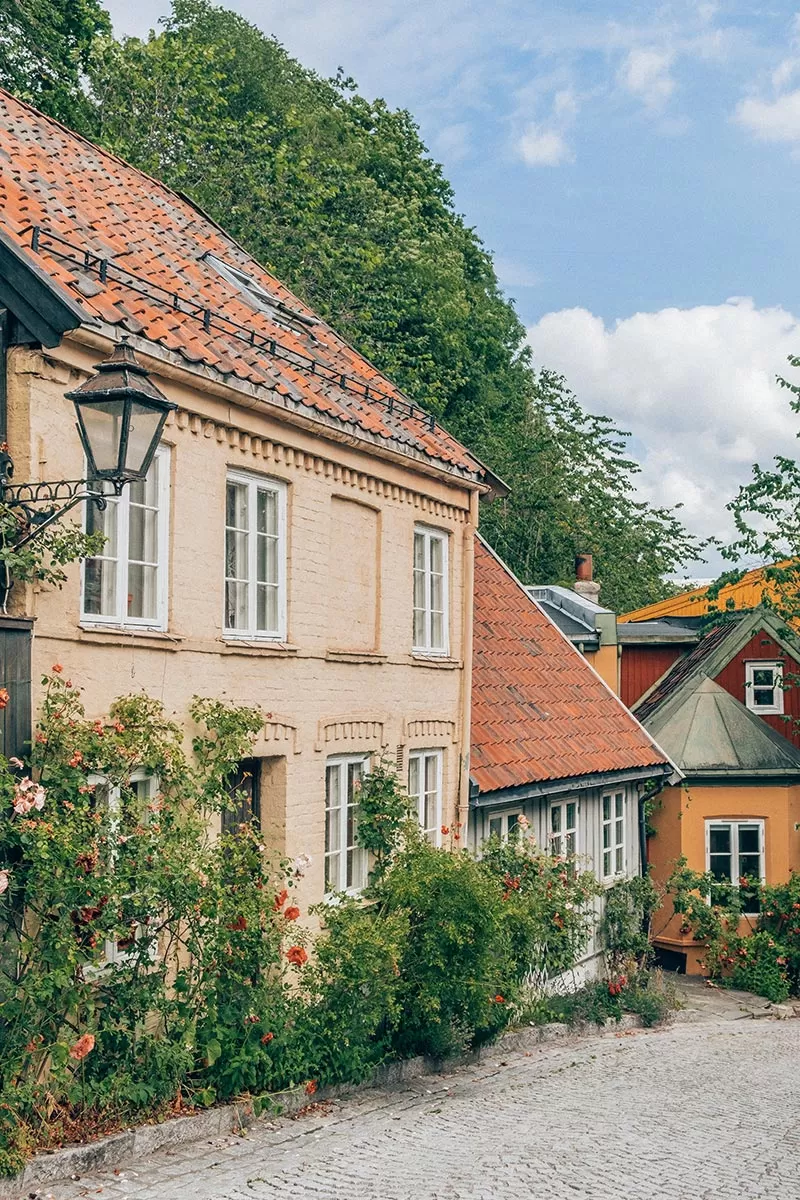
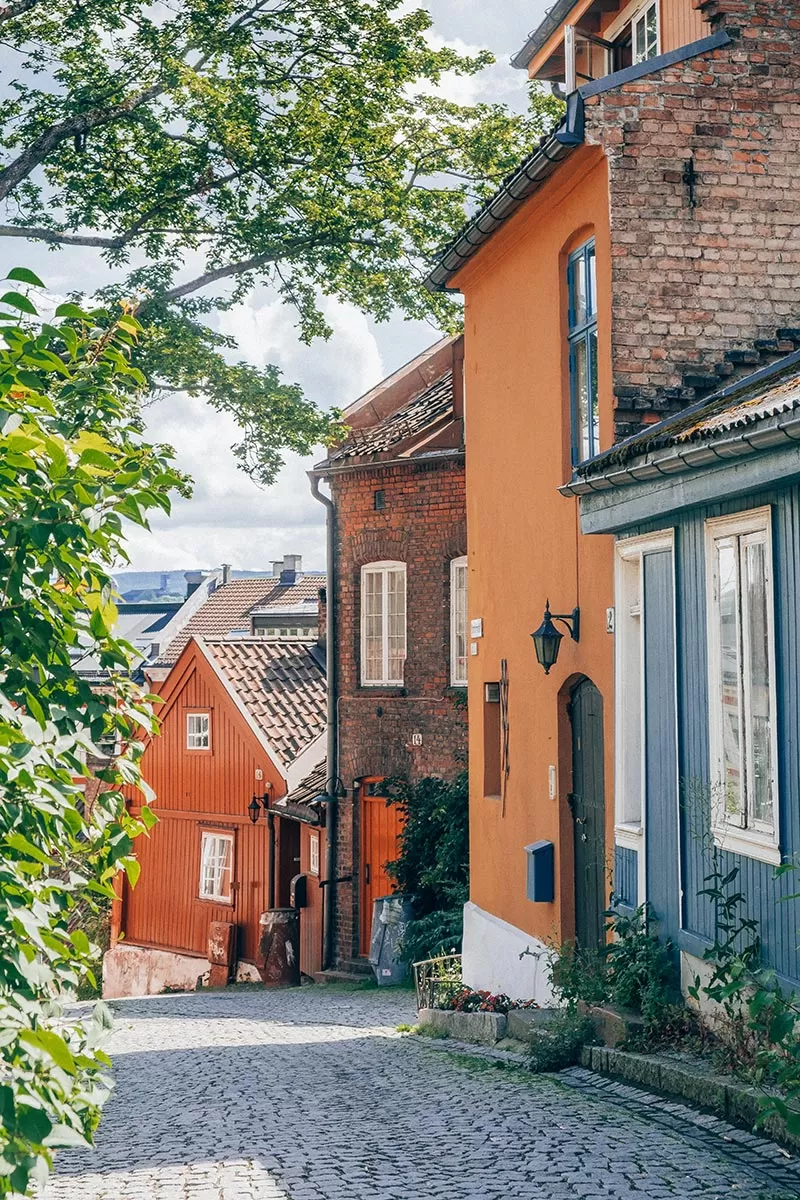
Damstredet and Telthusbakken are two charming small roads lined with wonderfully colourful and well-preserved wooden houses which have been inhabited since the late 18th and early 19th century.
As part of the expansion of Oslo, Damstredet was mostly built between 1810-1860. The first house, known as Solberg and painted pink, was built in 1756 by the sculptor Ole Meyer.
The author, Henrik Wergeland lived in Solberg between 1839-1841 and was later the residence of the Minister of Defence, Nils Christian Irgens. The brown house towards the beginning of the street was a stable where Henriks Wergeland kept his horse, Verslebrunen.
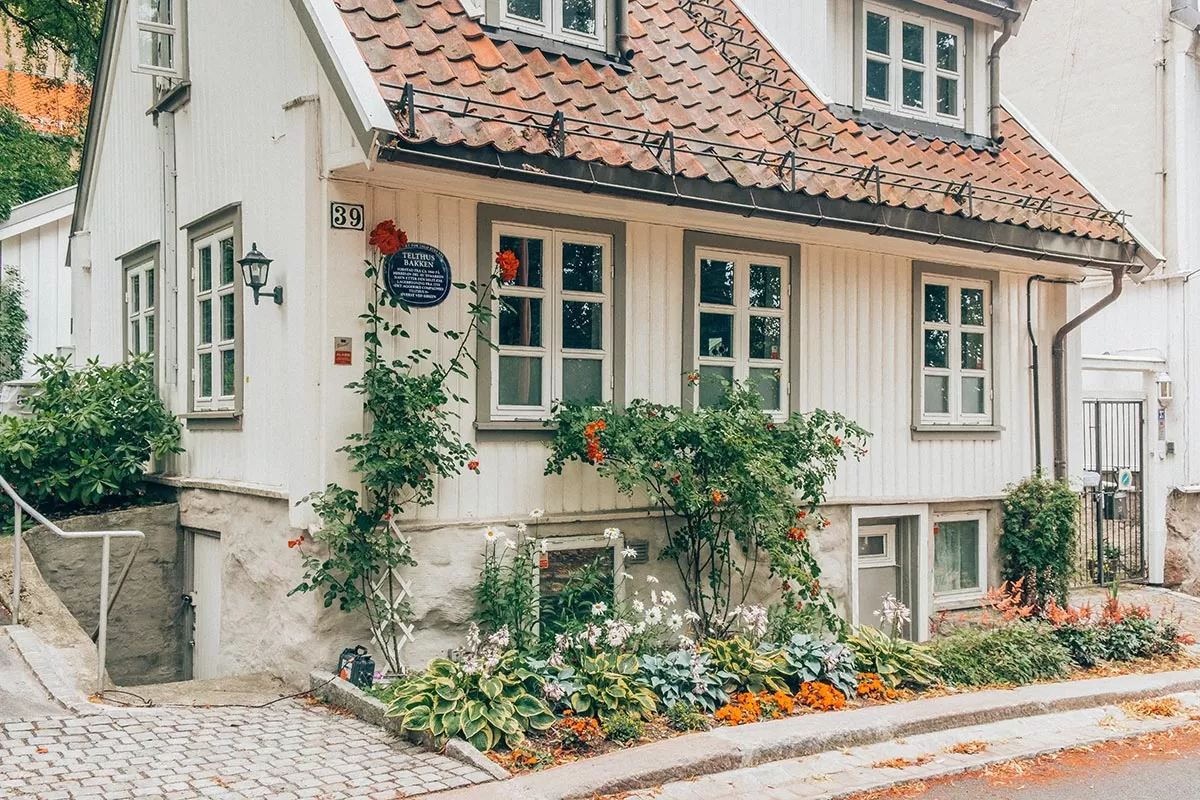
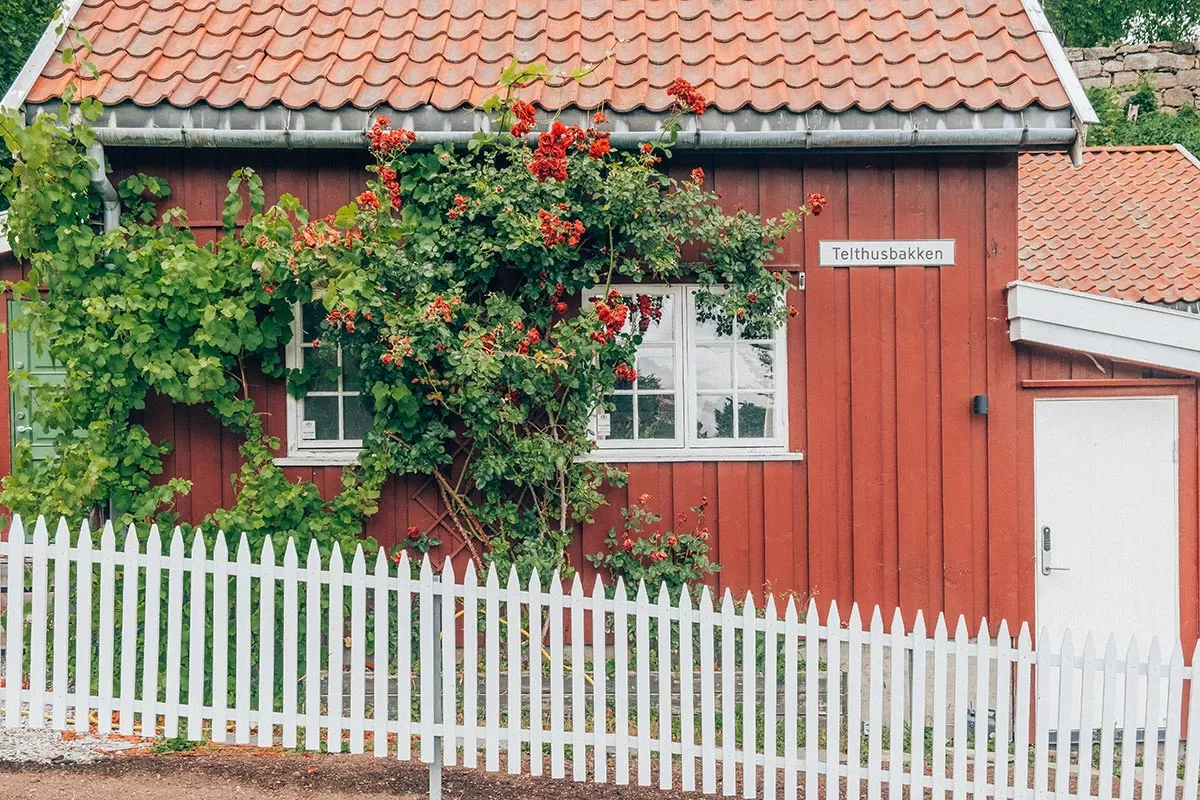
During the 16th century, this street was part of the main road connecting the east and west of Oslo and passed the Old Aker Church which sits on top of the Telthusbakken hill.
On one side of Telthusbakken are cosy wooden houses, and on the other side is a large garden area called, Egebergløkka. It’s along these gardens that you can walk the romantic Kjærlighetsstien (“The Love Trail”).
At the top of the street is the Old Aker Church which was built around 1080 and is Oslo’s oldest building still in use.
The two streets are located less than 10 minutes walk from each other making it easily accessible. Also nearby is our next free thing to do in Oslo.
2. Pay Your Respects to Edvard Munch at Vår Frelsers gravlund (Our Saviour’s Cemetery)
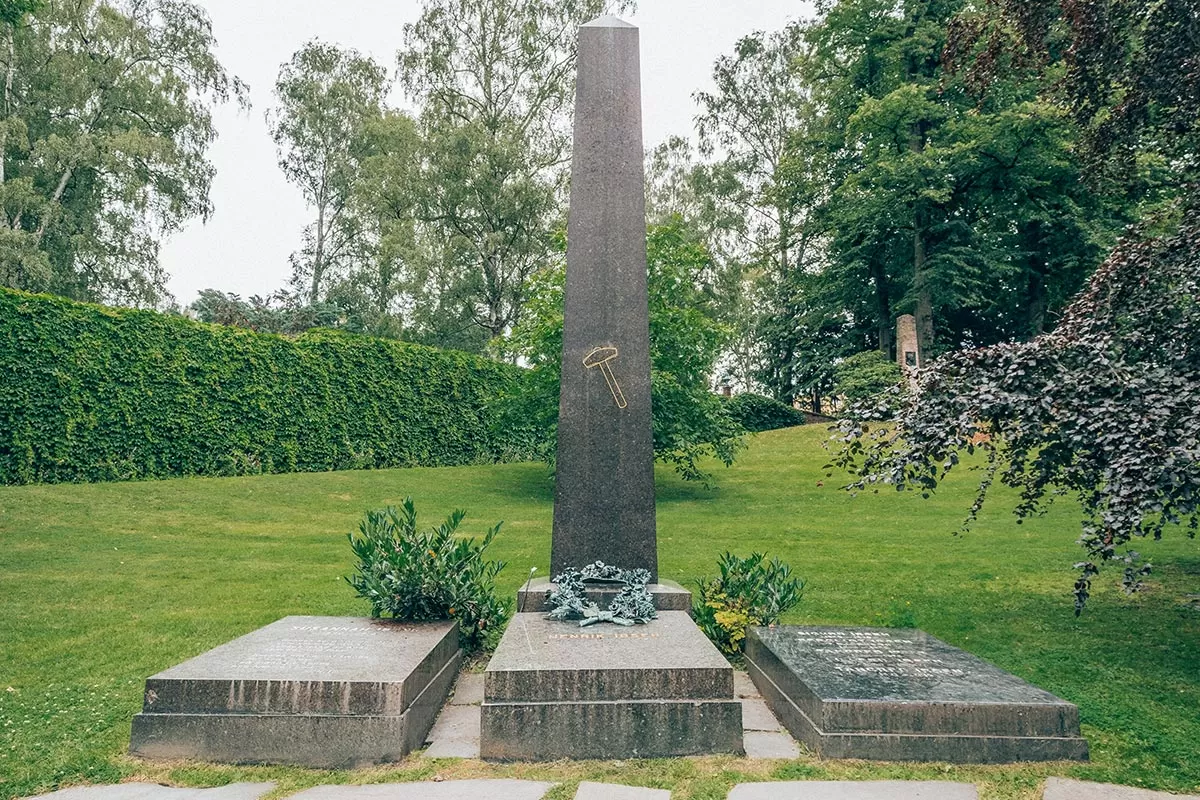
Henrik Ibsen’s grave
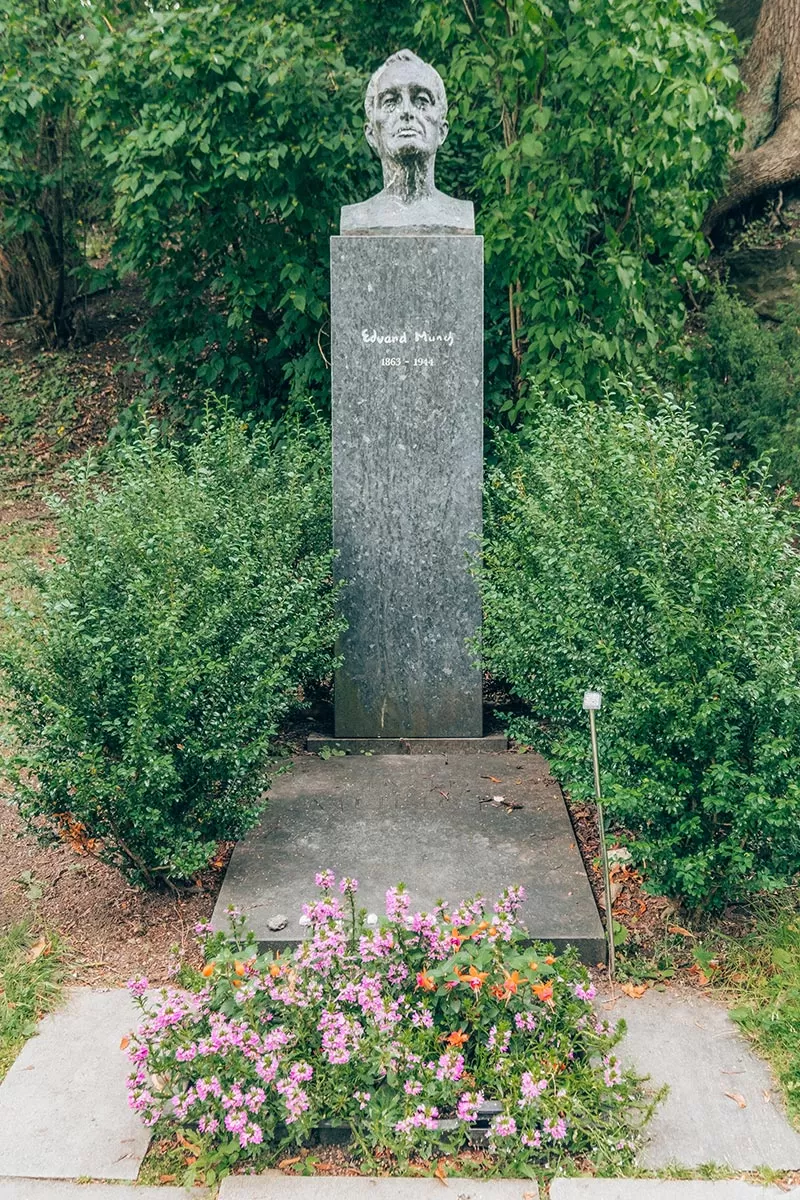
Edvard Munch’s grave
It might sound weird to recommend visiting a cemetery, but oftentimes cemeteries are very beautiful and have wonderful landscaping. To be fair, the first time I visited Vår Frelsers gravlund (Our Saviour’s Cemetery), there was a blanket of snow on the ground and no one in sight. It wasn’t creepy at all, but calm and peaceful. Having visited again during summer, I can confirm it’s just as peaceful.
As a massive fan of the Norwegian painter Edvard Munch, most famous for his painting The Scream, my main reason for visiting the cemetery was to see where he was laid to rest. As an interesting side note, the original Norwegian title is ‘Skrik’, which means shriek.
Originally created in 1808 as a result of the famine and cholera epidemic of the Napoleonic Wars, today this beautiful cemetery is Norway’s main honorary burial ground. Here you’ll also find the graves of other famous Norwegians including Henrik Ibsen (playwright), Henrik Wergeland (writer), Bjørnstjerne Bjørnson (writer and Nobel Prize winner), Richard Nordrak (composer of the Norwegian national anthem), Christian Krogh (naturalist painter) and Alf Prøysen (writer and musician).
3. Absorb the Amazing Art inside City Hall
It was Munch’s painting entitled Life that’s located here that drew me to visit Oslo’s Rådhuset (City Hall). But that’s certainly not the only thing there is to see here.
Inaugurated in 1950, City Hall has been decorated by great Norwegian artists from 1900-1950. Inside, everywhere you look you’ll see motifs from Norwegian history, culture, and working life.
On the anniversary of Alfred Nobel’s death on December 10th, Oslo City Hall hosts the Nobel Peace Prize ceremony. It is here that the laureate gives his or her lecture and is awarded a medal and diploma. Attending the ceremony is the Norwegian Royal Family and Prime Minister. You might imagine it’s by invitation only, however, after the ceremony you can catch the Peace Prize winner waving from the Grand Hotel balcony at 7 pm.
Outside in Rådhusplassen (City Hall Square), you can also find beautiful fountains and sculptures. It is from here that you can appreciate the wonderful music played hourly on 49 carillon bell located inside the eastern tower of City hall.
The general public can explore Oslo’s City Hall for free all year round. During the summer months a free guided tour escorts you around this huge space. If you are planning to visit Oslo during the summer months, keep an ear out for special concerts that are hosted here in the square.
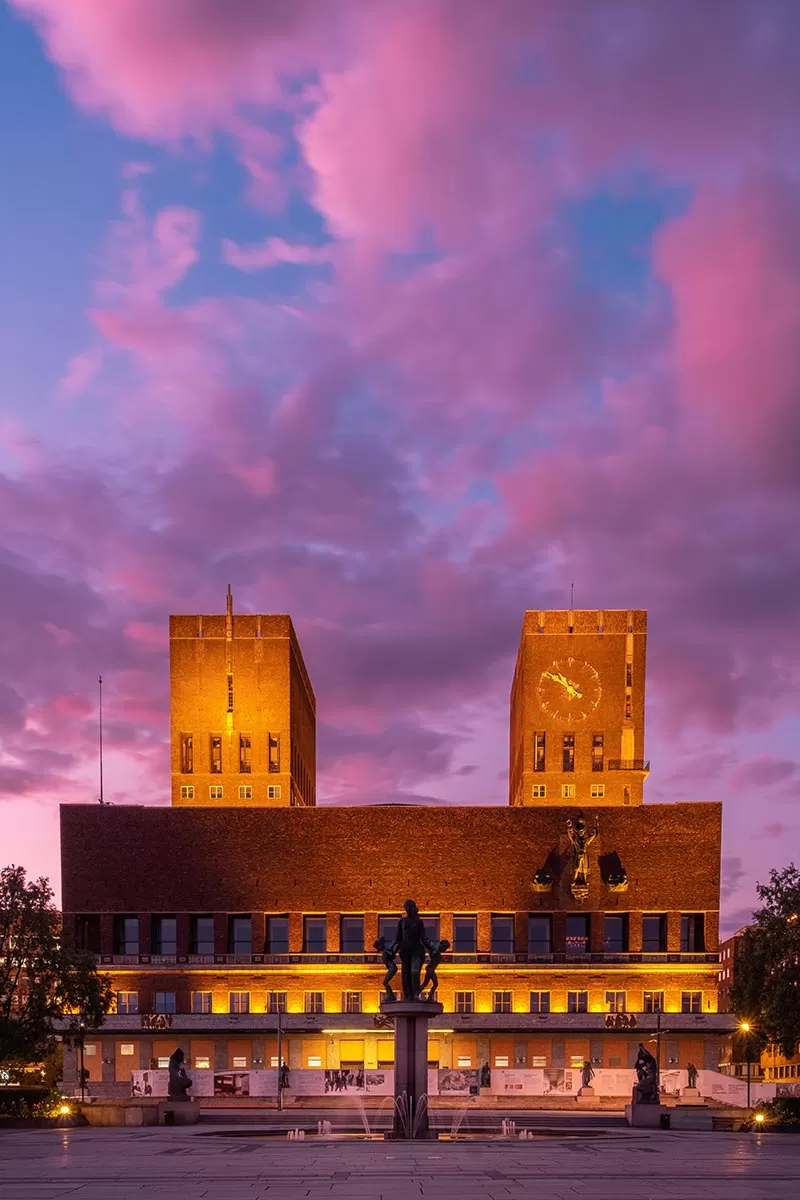
4. Take a Stroll Along Karl Johans Gate
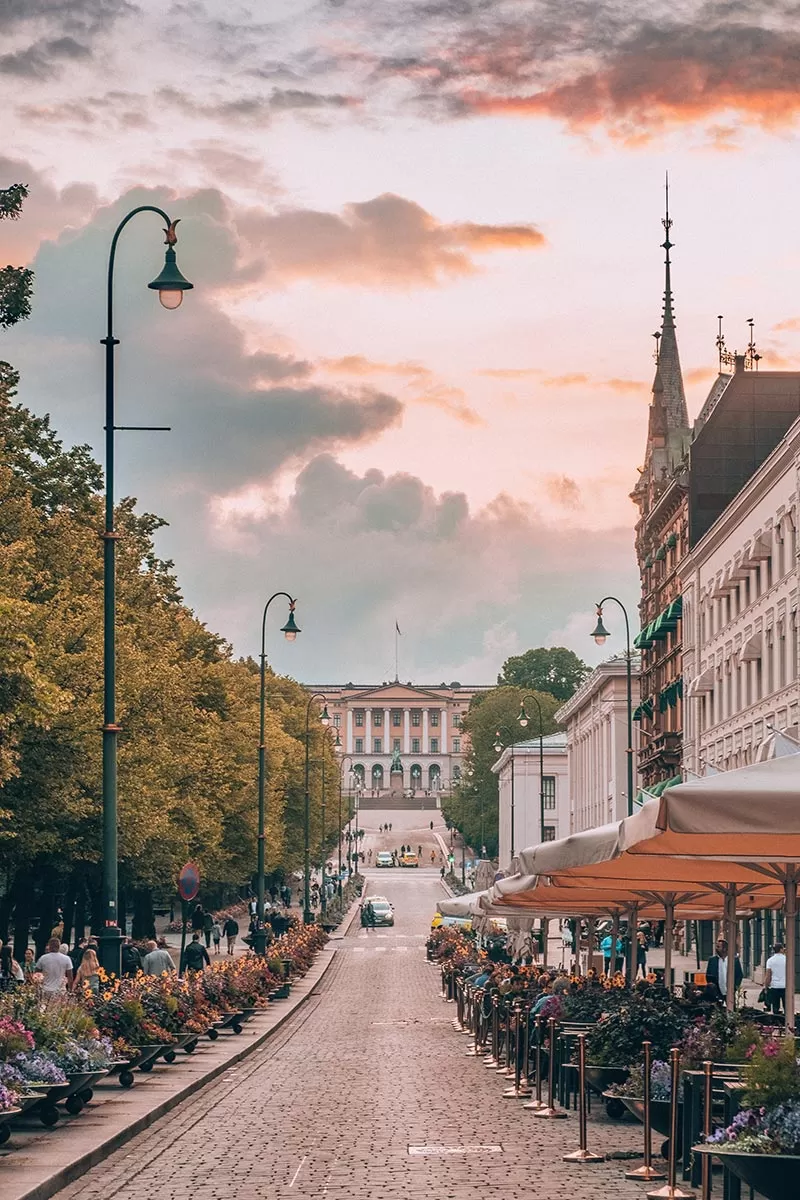
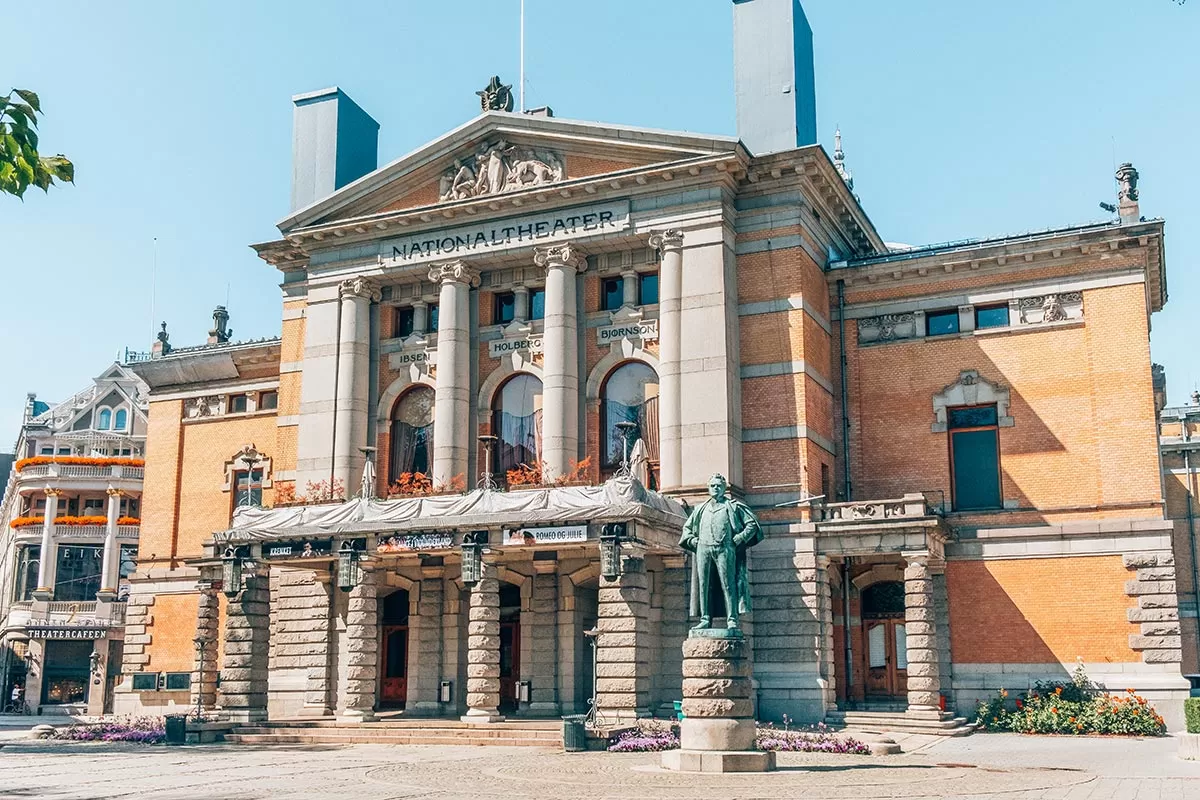
National Theatre located on Karl Johans gate
Karl Johans Gate is Oslo’s main street and is almost fully pedestrianised. It was named in honour of King Charles III John, who was also the King of Sweden as Charles XIV John.
Lining this long street which leads straight up to the Royal Palace, you’ll find everything from discos, nightclubs, bars, jazz clubs, and cafés scattered amongst the shops, shopping centres, and hotels.
5. See the Change of Guard at the Royal Palace
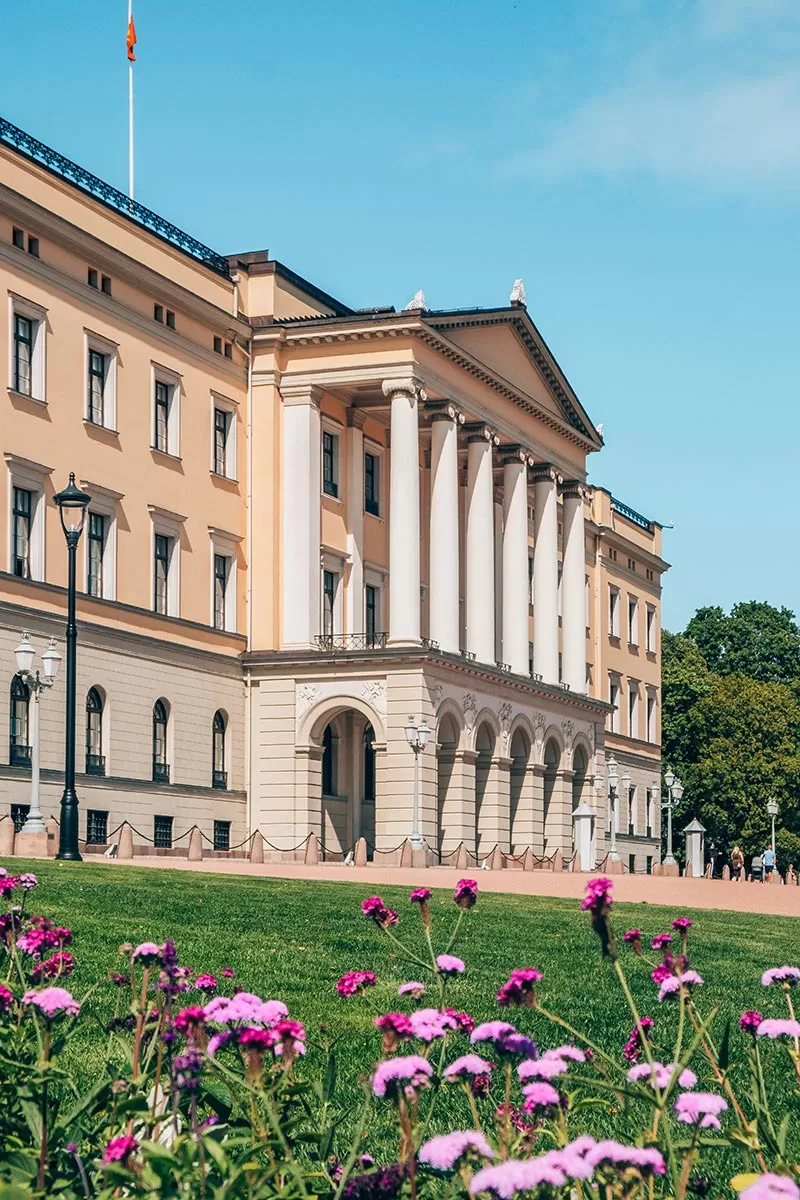
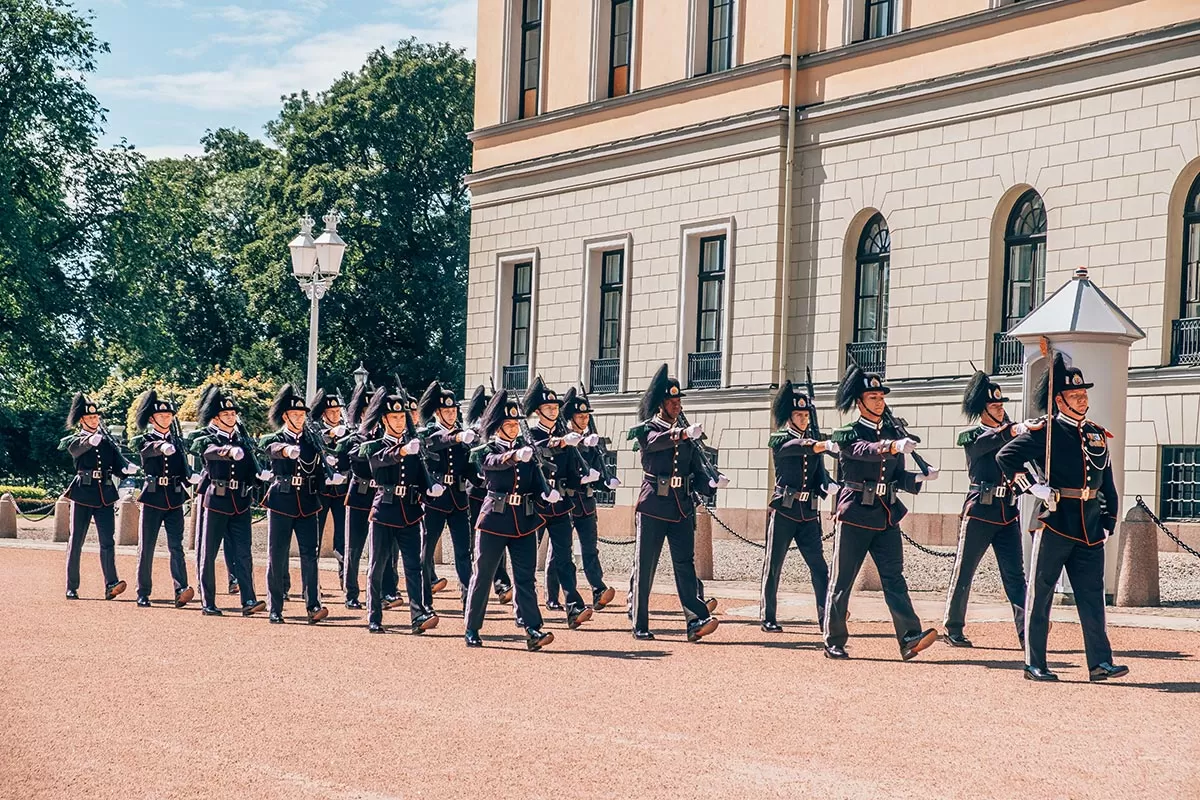
Elevated on top of the hill at the end of Karl Johans Gate, sits the Royal Palace.The neoclassical style building was completed in 1849 and features a stuccoed brick facade. It was here that King Charles III of Norway resided. Today, it is the royal residence of HM King Harald V and HM Queen Sonja.
One of the nicest and free things to do in Oslo is to wander around The Royal Palace Park that surrounds the palace on all sides and features grassy areas, majestic trees, small ponds, and statues.
Afterwards, head towards the front of the palace to watch the change of guard for free at 1:30 pm daily. The ceremony lasts approximately 40 minutes. On Sundays there is a service in the Palace Chapel at 11 am.
During summer it is possible to pay for a guided tour of the palace which boasts an impressive 173 rooms. Tickets cos NOK 140 ($15 USD) Get your tickets here.;
Going to Norway? Get my free Norwegian travel phrase guide here
6. Take a Free Guided Tour Inside Parliament House
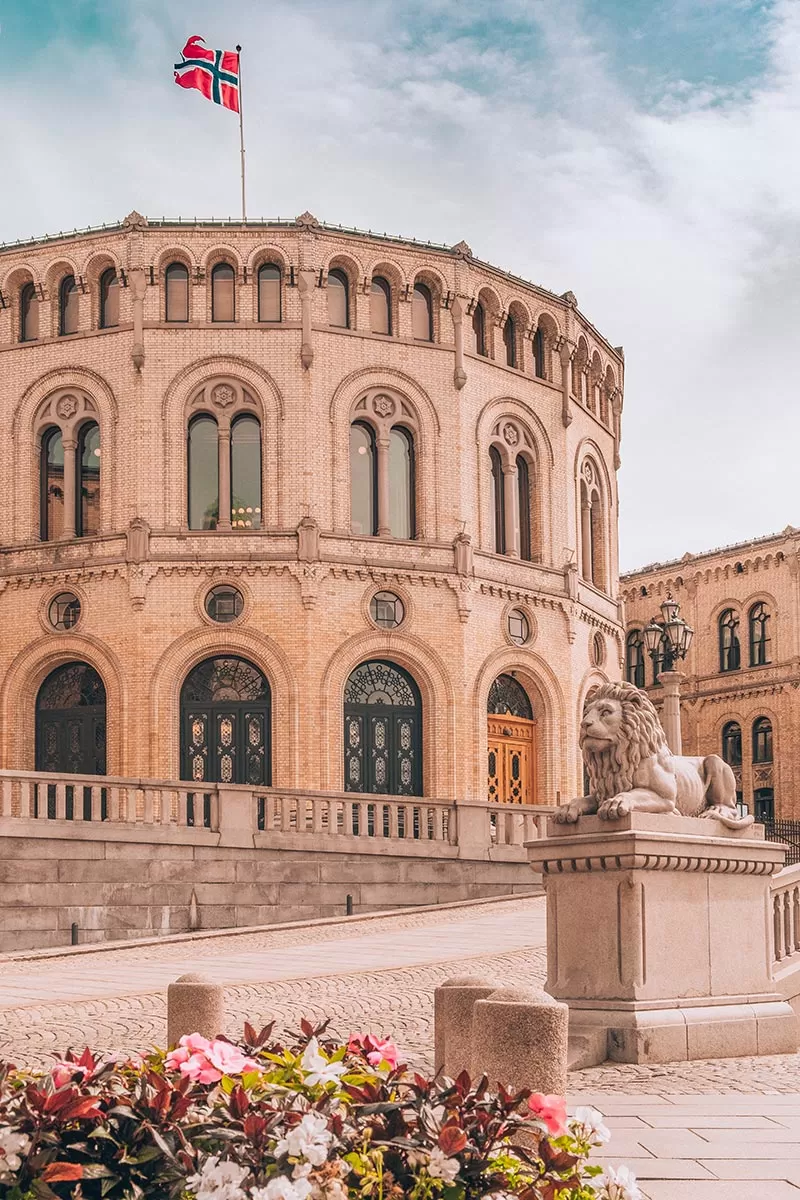
If you think the outside of this building is stunning, wait until you take the free 45 minutes guided tour inside. Designed by Swedish architect Emil Victor Langlet, the building was taken into use in 1866. The building features several styles, including French and Italian influences.
Due to the small size of the building, it cannot hold the current staff of the legislature, so Parliament sometimes meet in other offices in the surrounding area.
Stortinget, as the building is called in Norwegian, literally means “the great thing” or “the great council“.
Free tours run on Monday – Friday at 10 am during summer (1 July – 2 August) but only on Saturday’s during spring and autumn. The meeting point is at the Akersgata entrance (the back of the building) 15 minutes before the tour starts. Bookings are not necessary. Plan your visit using the official Stortinget website.
7. Be Fascinated by the Bizarre Statues in Vigeland Park inside Frogner Park
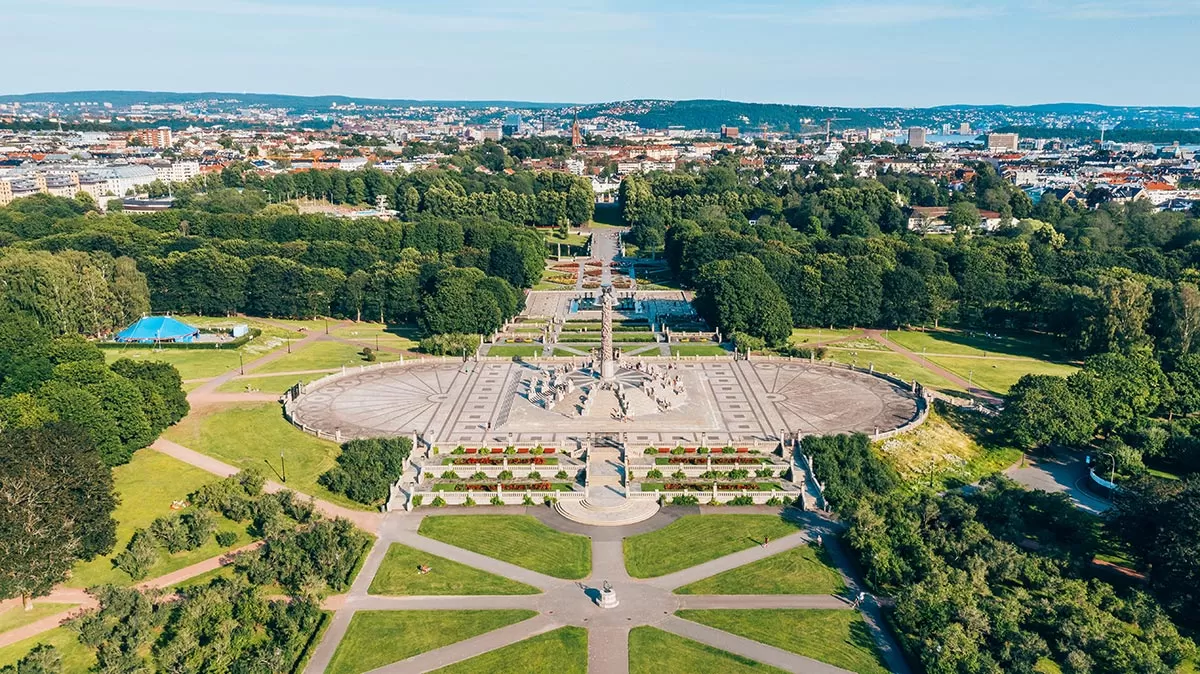
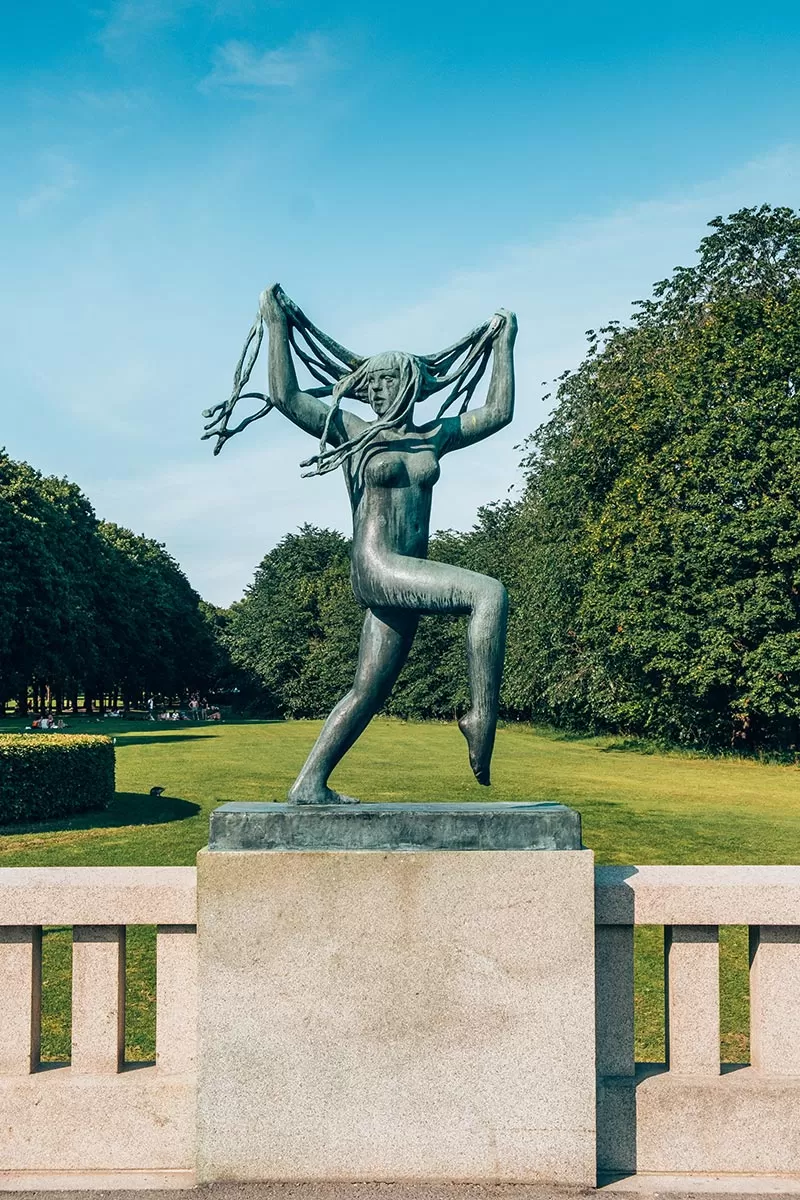
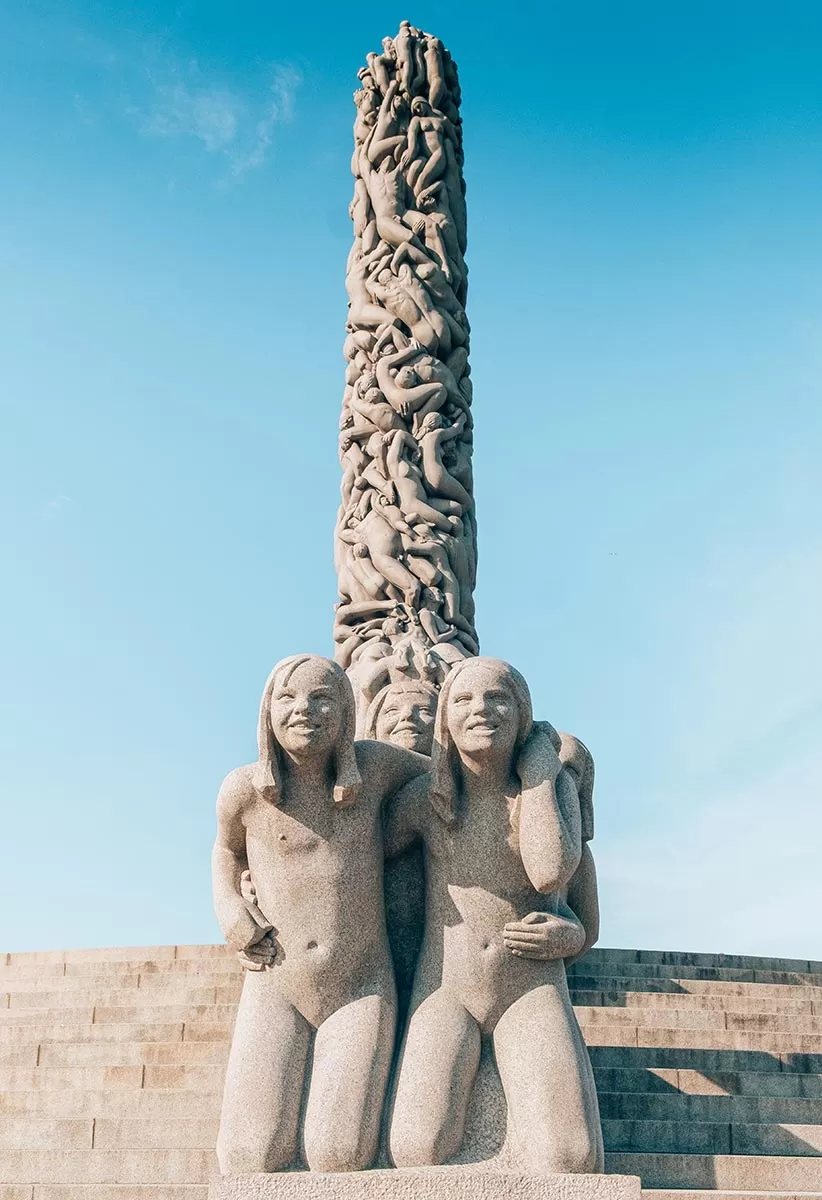
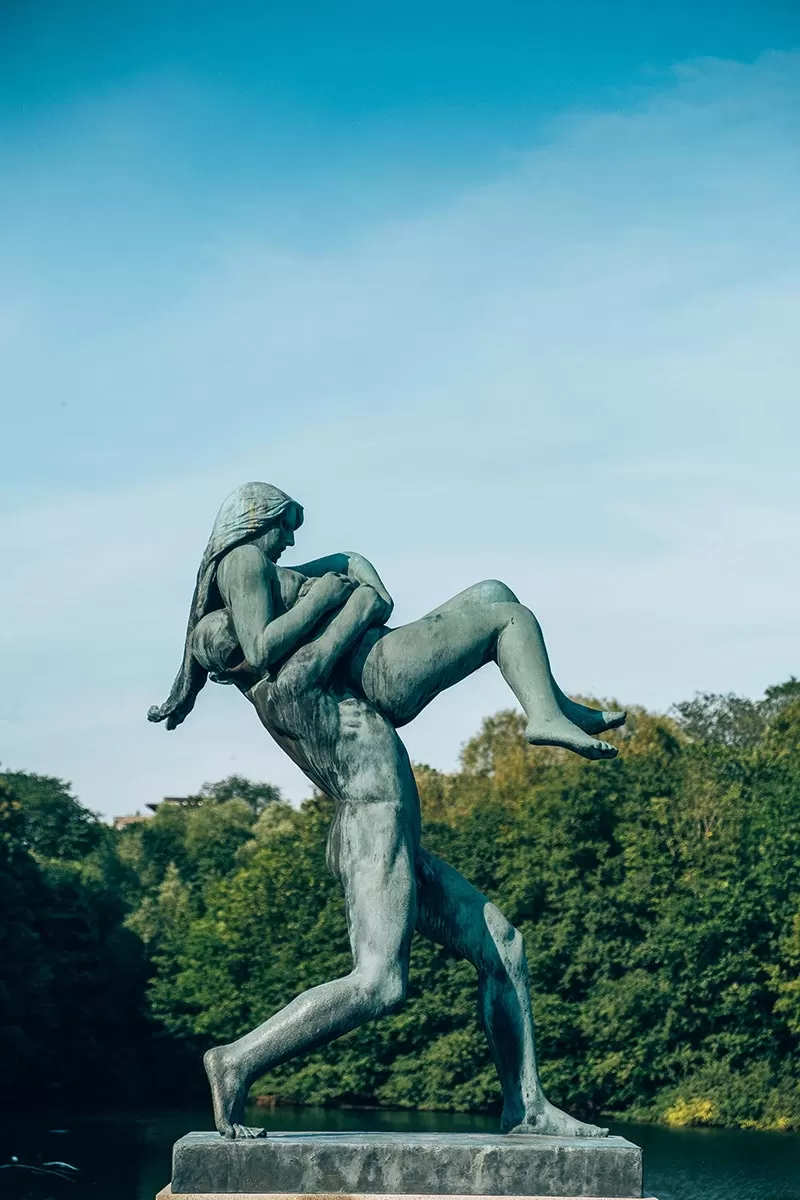
One of the absolute best things to do in Oslo is not only one of Norways’ most popular tourist attractions but it’s also free! Located to the north-west of the city centre is Frogner Park, inside of which you’ll find Vigeland Sculpture Park. Between 1 and 2 million people visit this park each year!
The genius behind the parks creation is Gustav Vigeland (1869–1943), Norway’s most famous sculptor and woodcarver. Gustav studied in Oslo, Berlin, Paris and Florence, and was influenced by Rodin, renaissance artists and Antique and Egyptian sculpture.
Fascinated by the human condition, Vigeland’s created a huge collection of sculptures which explore major themes including love, life, and death. Over the course of 20 years (between 1924 and 1943), Vigeland dedicated himself to creating his magnum opus which is free for everyone to enjoy. It also happens to be the world’s largest sculpture park made by a single artist!
Just to give you an idea of how impressive Vigeland Sculpture Park is, the sculpture area alone spans 80 acres or 320,000 m2. The area features 212 bronze and granite sculptures which all culminate towards the famous monolith standing 17 metres high and made up of 121 figures struggling to reach the top of the sculpture. Vigeland modelled the monolith in clay between 1924-1925 and the work on it began in 1929. It took 3 stone carvers 13 years to complete!
Wandering around Gustav Vigeland’s impressive collection of sculptures was an absolute highlight for me. During my Norwegian language holiday in Oslo, I went back to the park multiple times because I enjoyed it so much.
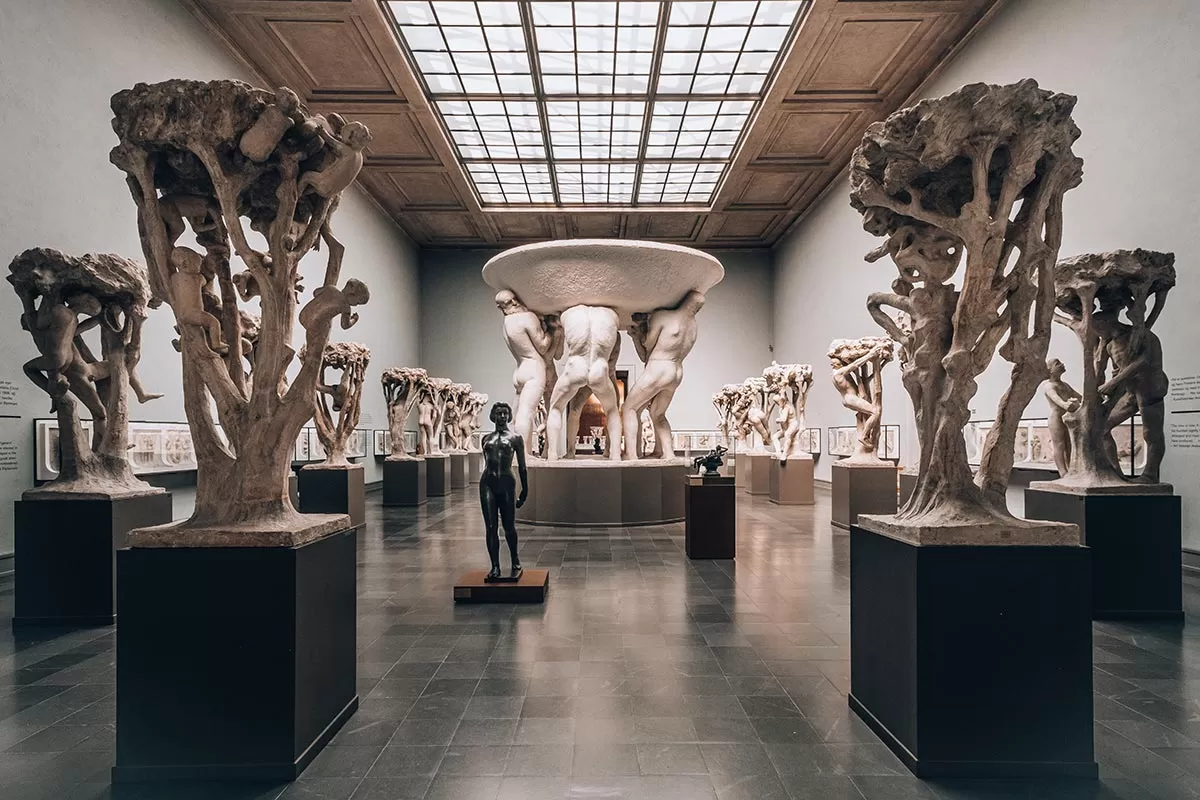
Vigeland Museum
If you enjoyed this park then I highly recommend visiting the nearby Vigeland Museum which is located in what was Gustav’s studio and home. The museum’s collection includes Vigeland’s early works, his portraits and monuments, as well as plaster models for the sculptures in Vigeland Park where you can see Gustav’s well-documented working process. Entrance to the museum is NOK 120 / $13 USD or free with the Visit Oslo Pass.
For some a little different, you can also visit Oslo’s best-kept secret created by Gustav’s brother, Emanuel. Located just outside the city centre, for a small fee (NOK 50 / $5.56 USD), you can visit this unusual place.
8. Walk on the Roof of the Opera House
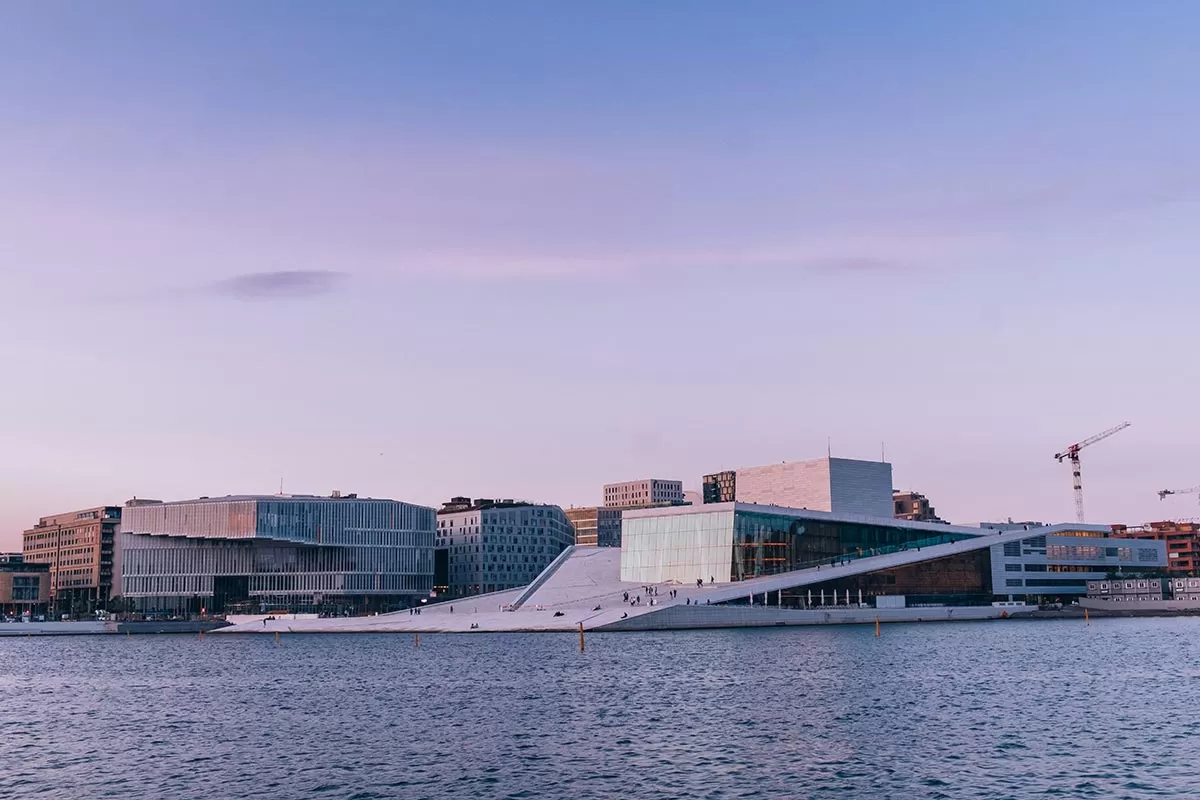
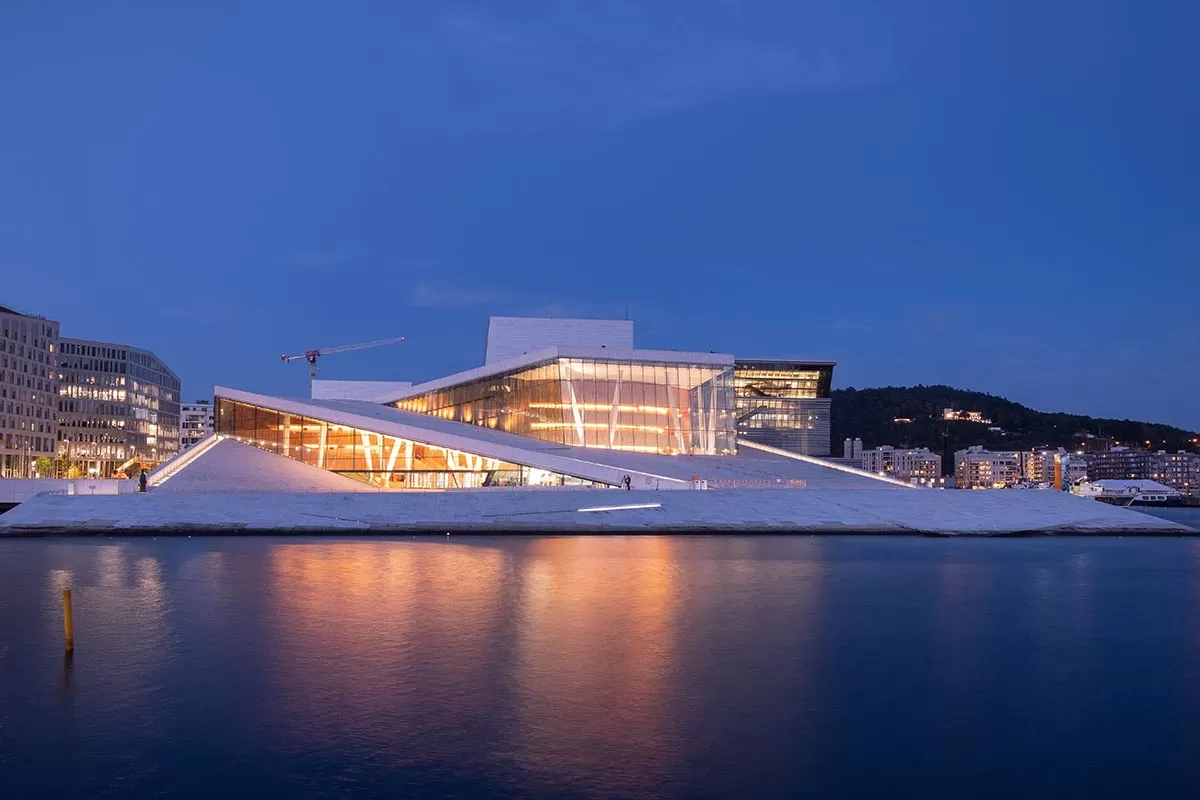
It seems like everyone in Norway is climbing a mountain — so why shouldn’t you be able to climb a building? Well, now you can! Being able to walk on the Oslo’s Opera House is perhaps the coolest thing you can do in Oslo, and it’s completely free.
The roof of the opera house angles to ground level creating a large piazza inviting pedestrians to walk up and enjoy the panoramic views of Oslo and Oslofjord. The building appears to rise out of the water thanks to its angled exterior which is covered in beautiful Italian marble and white granite.
As you scale the rooftop, bare in mind that under your feet are three theatres, numerous public rooms and halls to explore, and the workplace for more than 600 opera and ballet professionals.
Don’t forget to head inside as well. The lobby is surrounded by 15 metre (49 feet) tall windows with minimal framing as to allow for maximum views of the water.
Interior surfaces covered in oak brings a warmth to the space which contrasts with the coolness of the white exterior. The main auditorium is a horseshoe shape and illuminated by an oval chandelier containing an impressive 5,800 handmade crystals. This place is just awesome!
While you’re overlooking Oslofjord, look out for the floating sculpture entitled ‘She lies’. This stainless steel and glass sculpture was designed and created by Italian artist Monica Bonvicini and was inspired by Caspar David Friedrich’s painting Das Eismeer ‘The Sea of Ice’.
The artwork floats on a concrete platform tied to the seabed which allows it move with the tides and currents acting as a reminder of nature’s constant change. According Public Art Norway (KORO), which supported the installation, the name ‘She Lies’ was chosen to give further intentional ambiguity that encourages the viewer to reflect on its meaning and symbolism.
9. Admire Quirky Architecture at Barcode Project
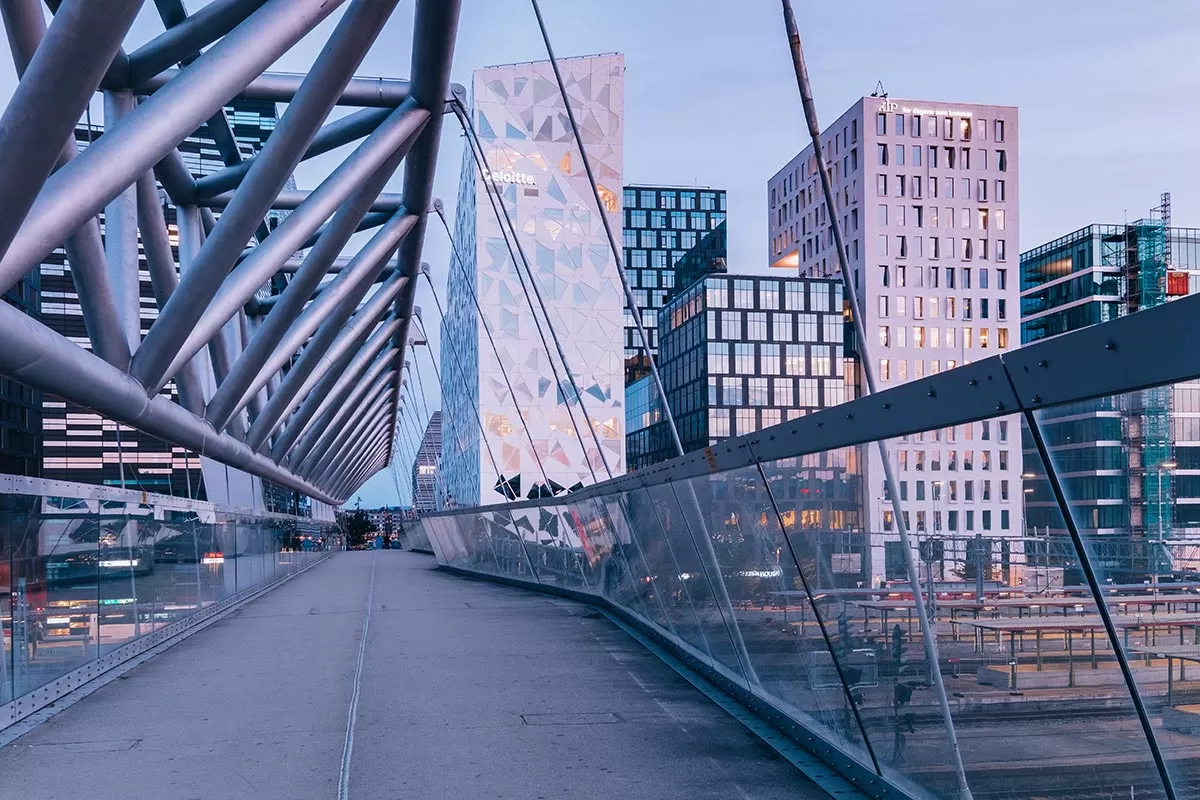
While we’re on the subject of architecture, you can’t miss paying a visit to the Barcode Project, in Oslo’s business district.
Designed by Dutch and Norwegian firms, this row of multi-purpose high rises buildings resembles a barcode due to the narrow space between each building. The overall shape of each building is very different, offering many enjoyable architectonic details and quirks.
Perhaps the best view of this area is from the roof of the opera house or from the long pedestrian bridge Akrobaten (‘the Acrobat’) which stretches across the tracks of Oslo central station, connecting the two areas.
10. Relax in the Botanical Gardens
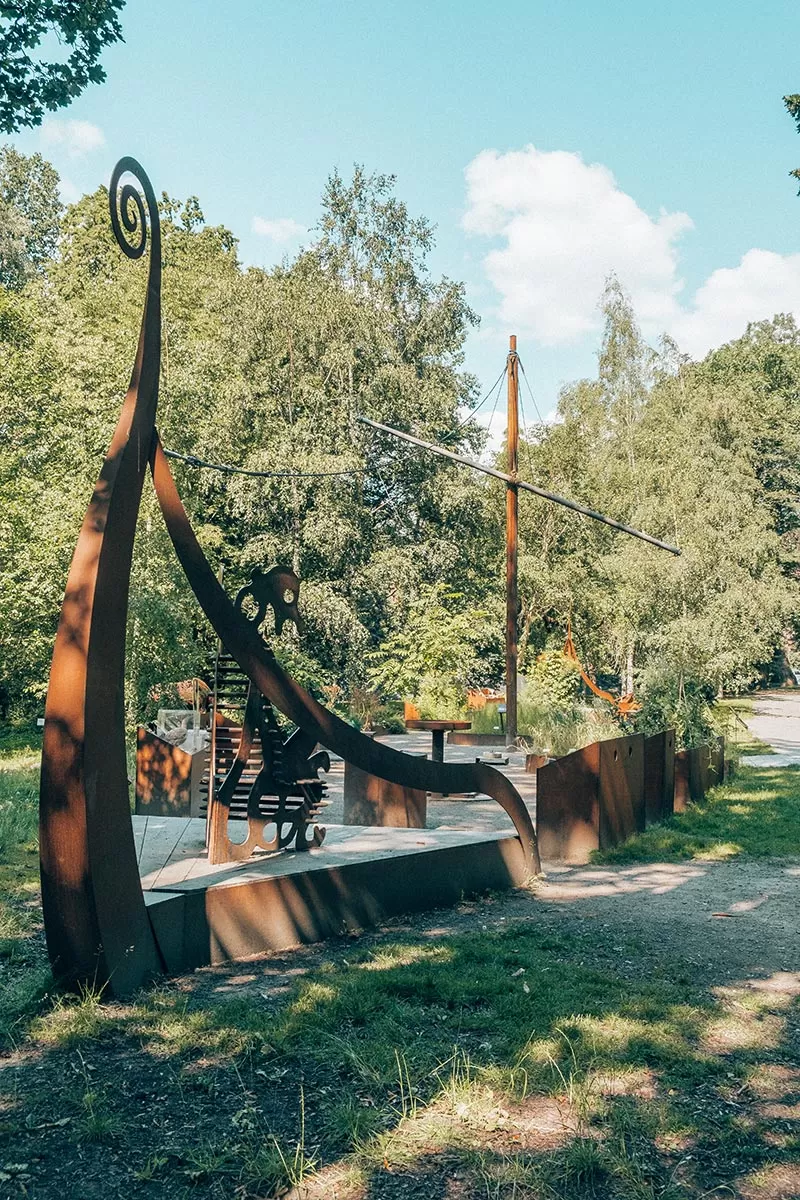
Viking Garden
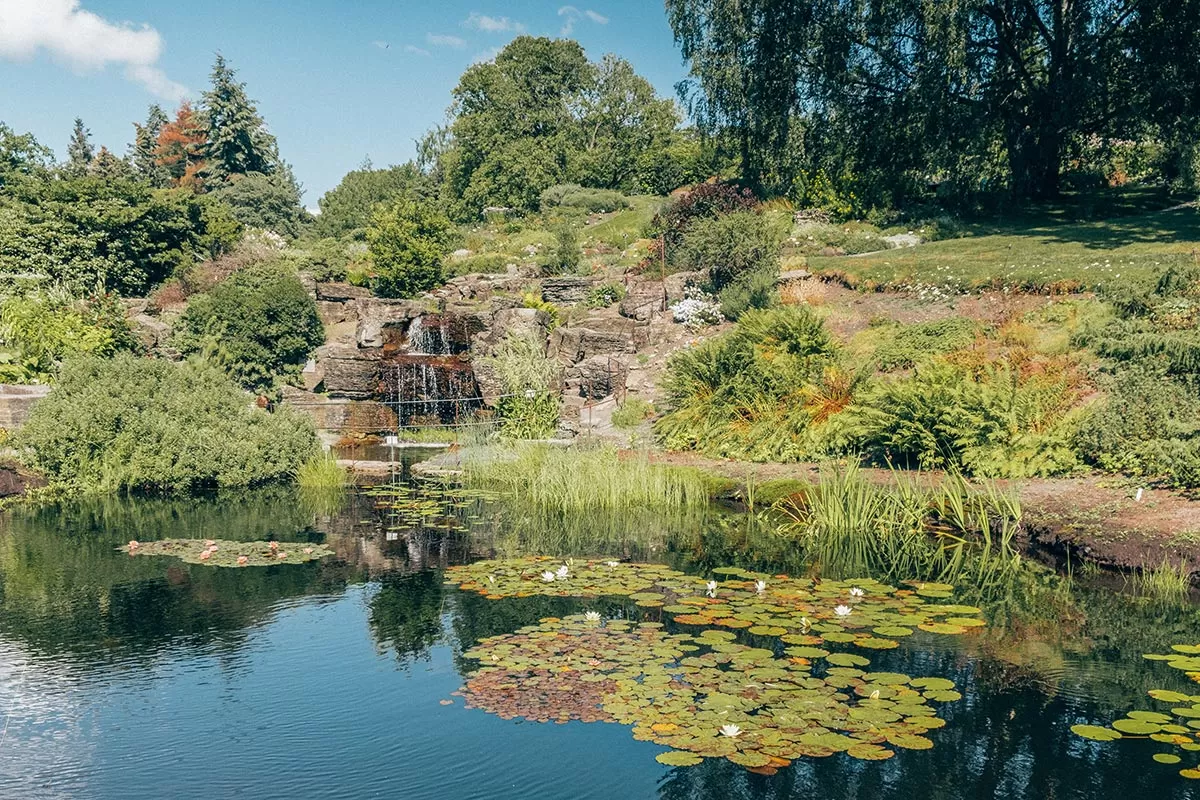
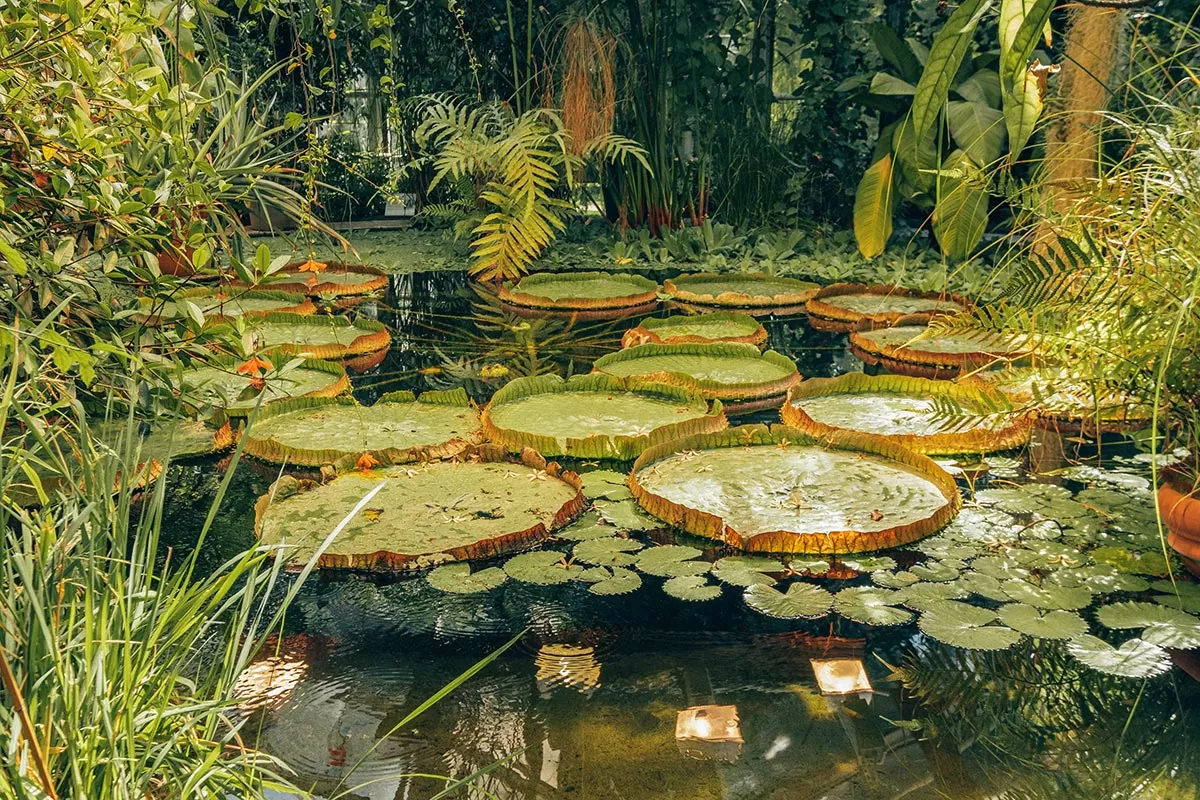
This green oasis is the perfect place to relax and enjoy botanical variety and diversity. Beyond the 1800 different plants found here, there is so much to see and enjoy absolutely free.
There are six unique gardens that offer something special for everyone. Starting with the Viking Garden, here you will see plants, rocks and animals that were used during the Viking Age all displayed in a 33 m long ship-shaped time machine made of corten steel.
Great-granny’s Garden is home to many plants from old gardens. They are preserved here in a living archive. The garden is particularly designed for people suffering from dementia – the familiar scents, old-fashioned benches, and other traditional elements have a comforting effect and improve their memory.
Next up is the Systematic Garden which demonstrates the family relationships among plants, while the Rock Garden contains alpine plants from all over the world.
The Herb Garden contains medicinal and poisonous plants, spices and culinary herbs, fiber plants, and plants used for dyeing. Lastly, the Aromatic Garden is specially designed for the visually impaired with labels in Braille and raised bed for wheelchair users.
11. Watch the sunset that inspired Munch’s ‘Scream’ at Ekebergparken Sculpture Park
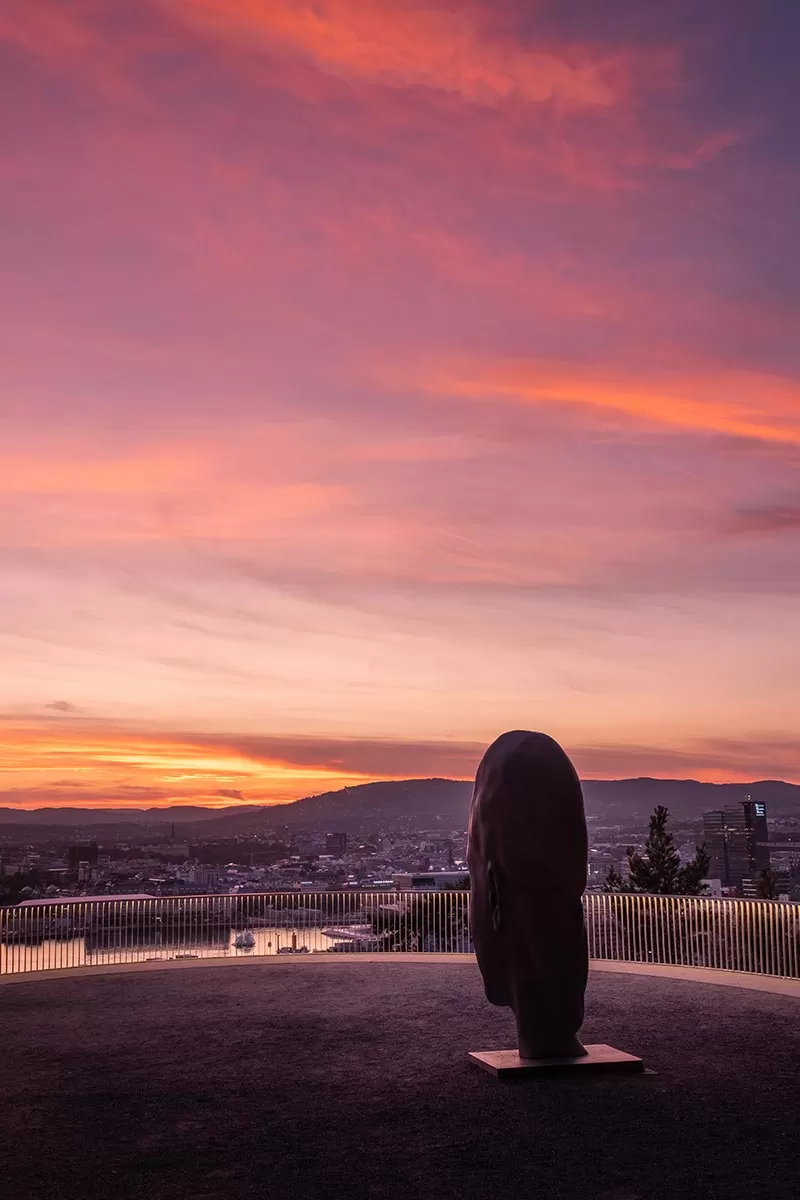
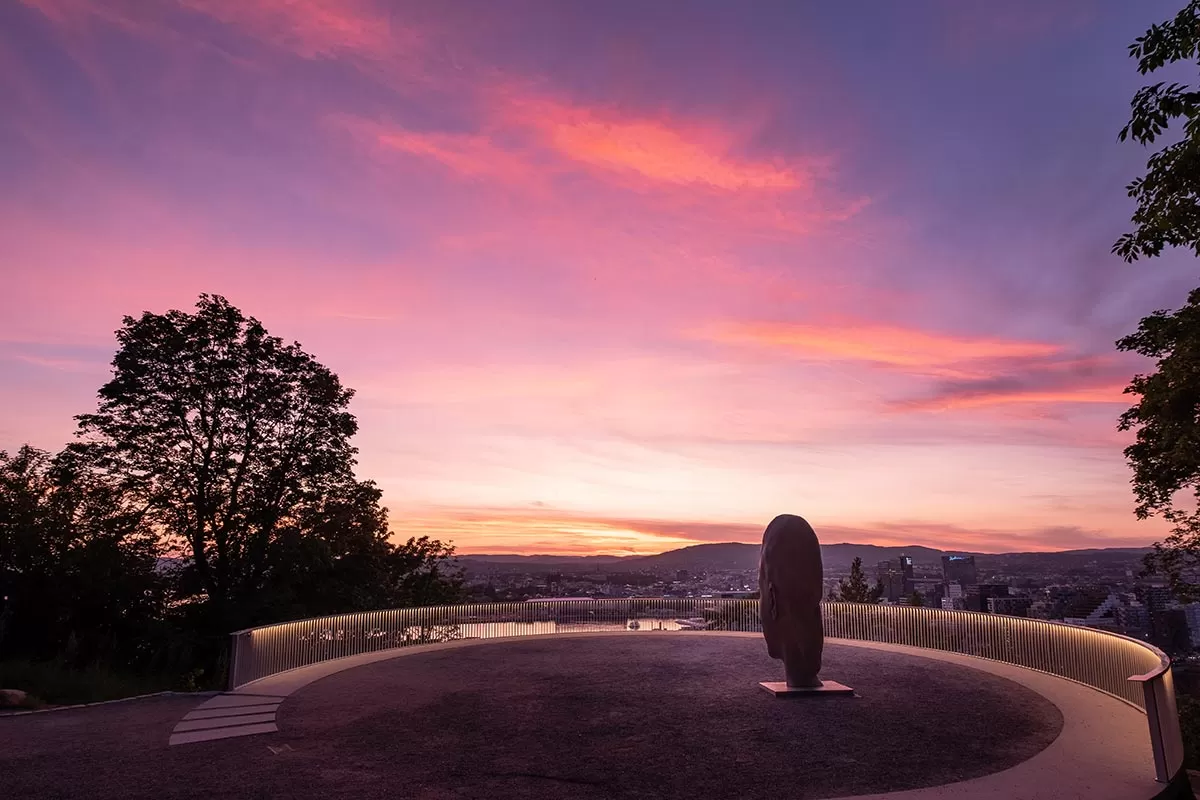
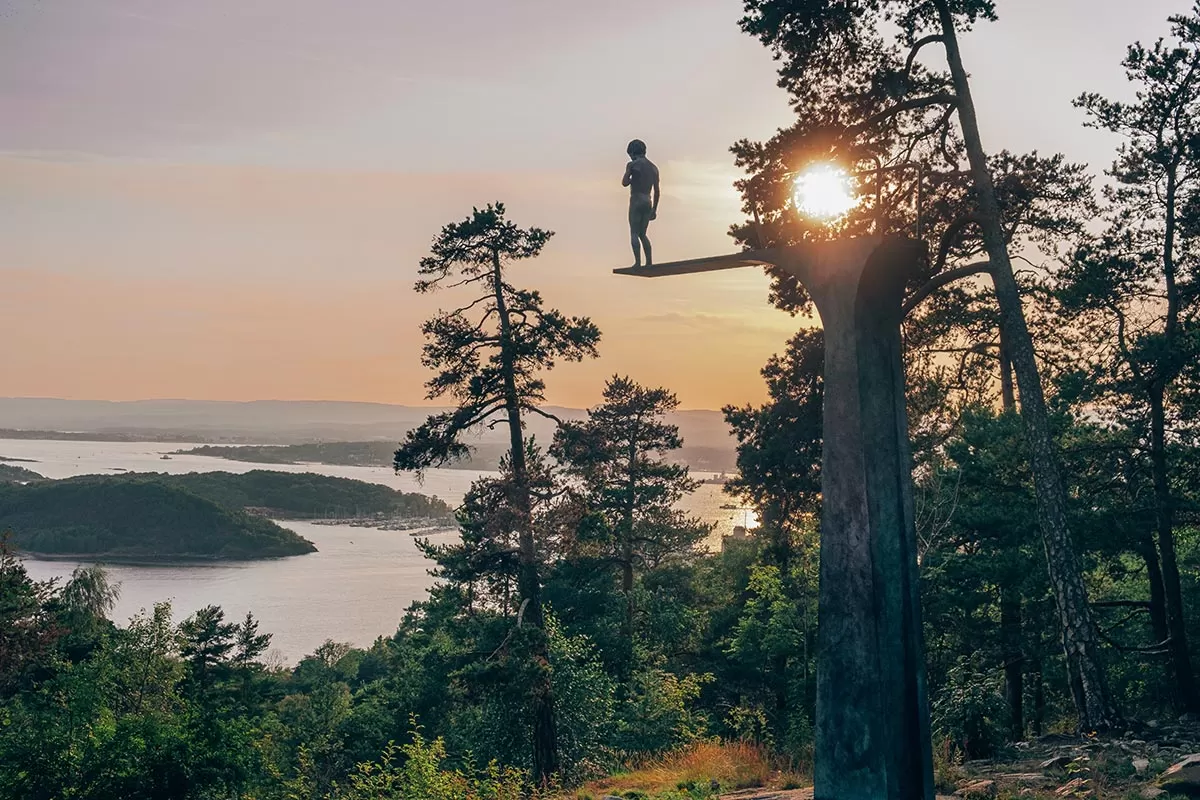
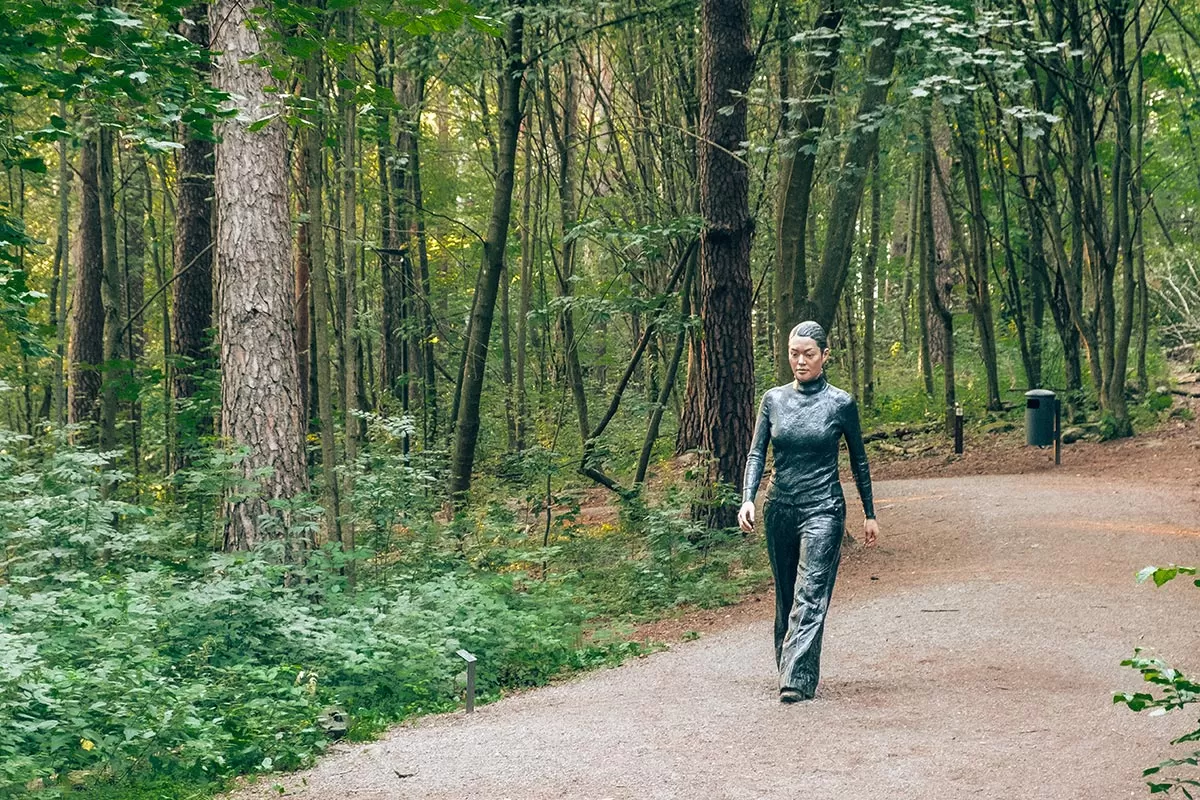
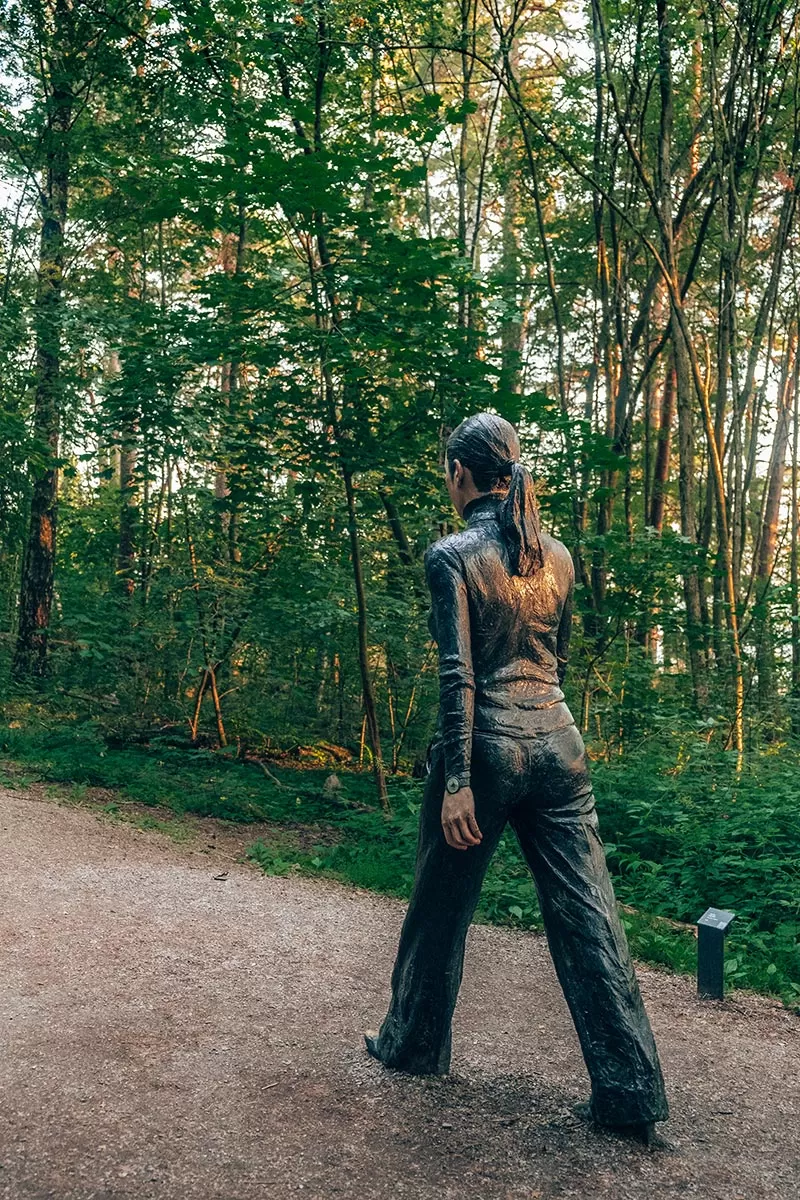
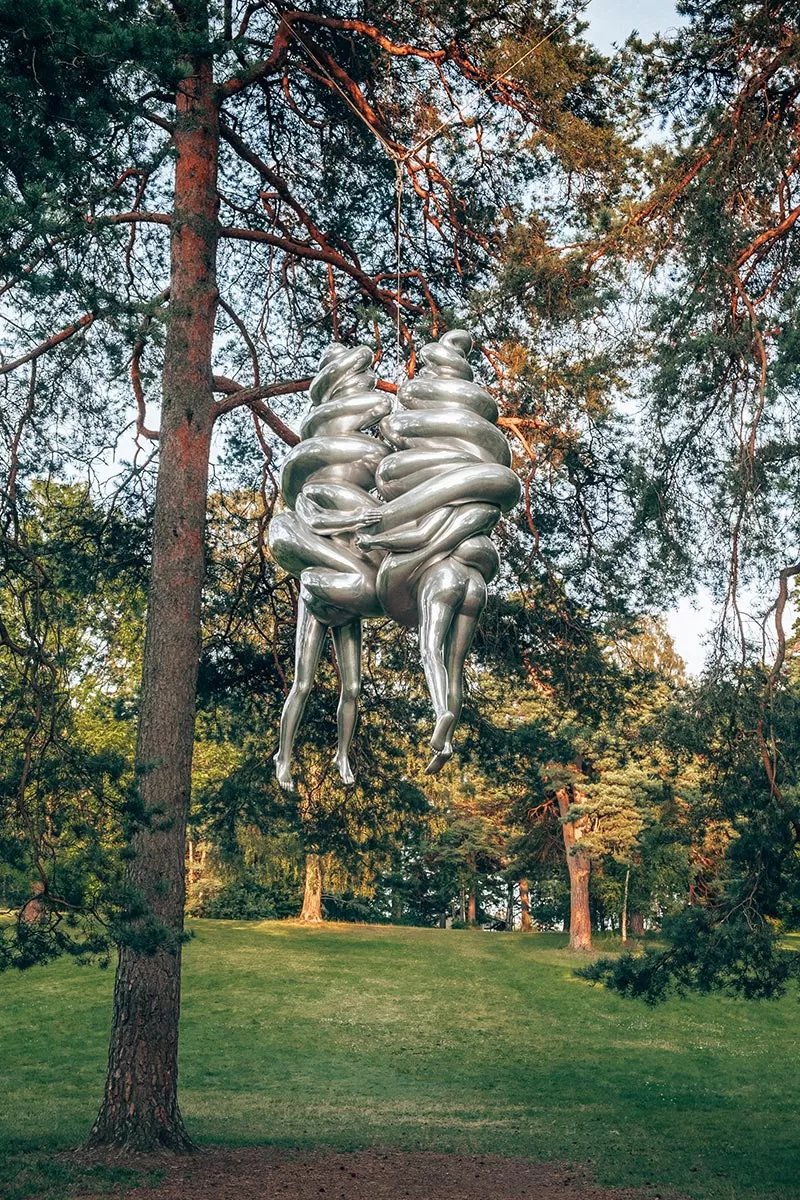
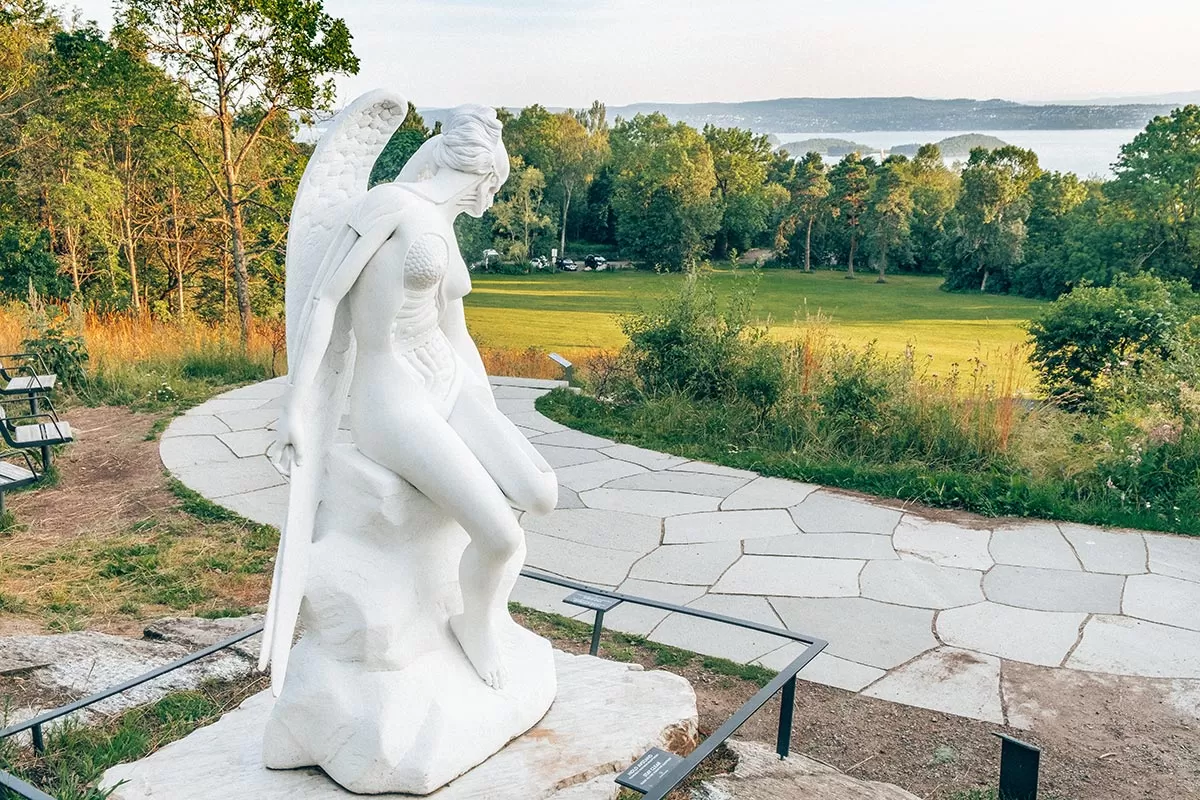
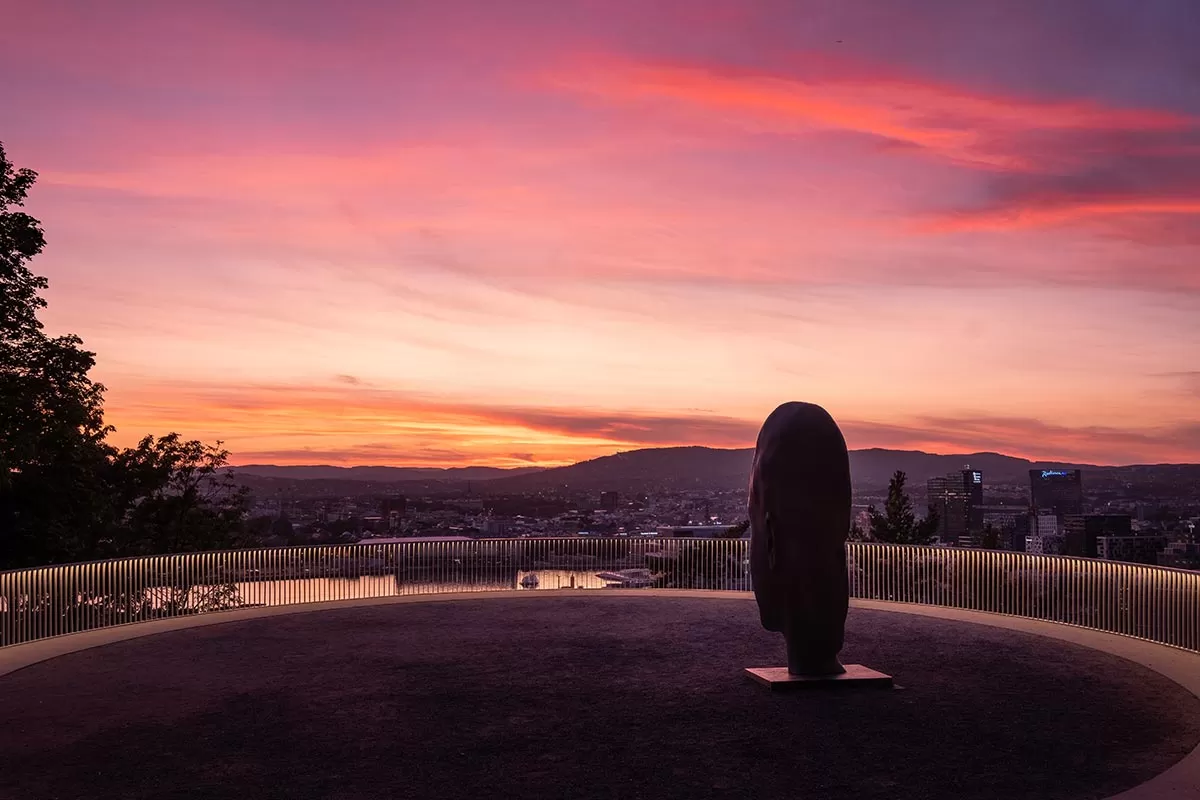
Here’s your chance to stand in the spot where Munch saw a fiery sunset that inspired his most famous work the ‘Scream’. In his own words, Munch described the moment he was inspired:
I was walking along a path with two friends — the sun was setting — suddenly, the sky turned blood red — I paused, feeling exhausted, and leaned on the fence — there was blood and tongues of fire above the blue-black fjord and the city — my friends walked on, and I stood there trembling with anxiety — and I sensed an infinite scream passing through nature.
During my two weeks in Oslo, I have to say this was my personal highlight. The day I visited Ekebergparken Sculpture Park and stood at the panoramic viewpoint, I saw a similarly dramatic sunset just as Edvard Munch did. I was pinching myself with excitement. I highly recommend heading up there and wish you a similar experience.
The viewpoint isn’t the only drawcard to Ekebergparken’s Sculpture Park. This park is ranked one of the top 5 sculpture parks in the world which combines beautiful landscapes, high-quality sculptures, and history. You are free to explore the park on your own, or you can pay to join a guided tour.
Visit the official Ekebergparken website for a free map of the park marked with all the sculptures.
12. Stroll along Aker Brygge Wharf
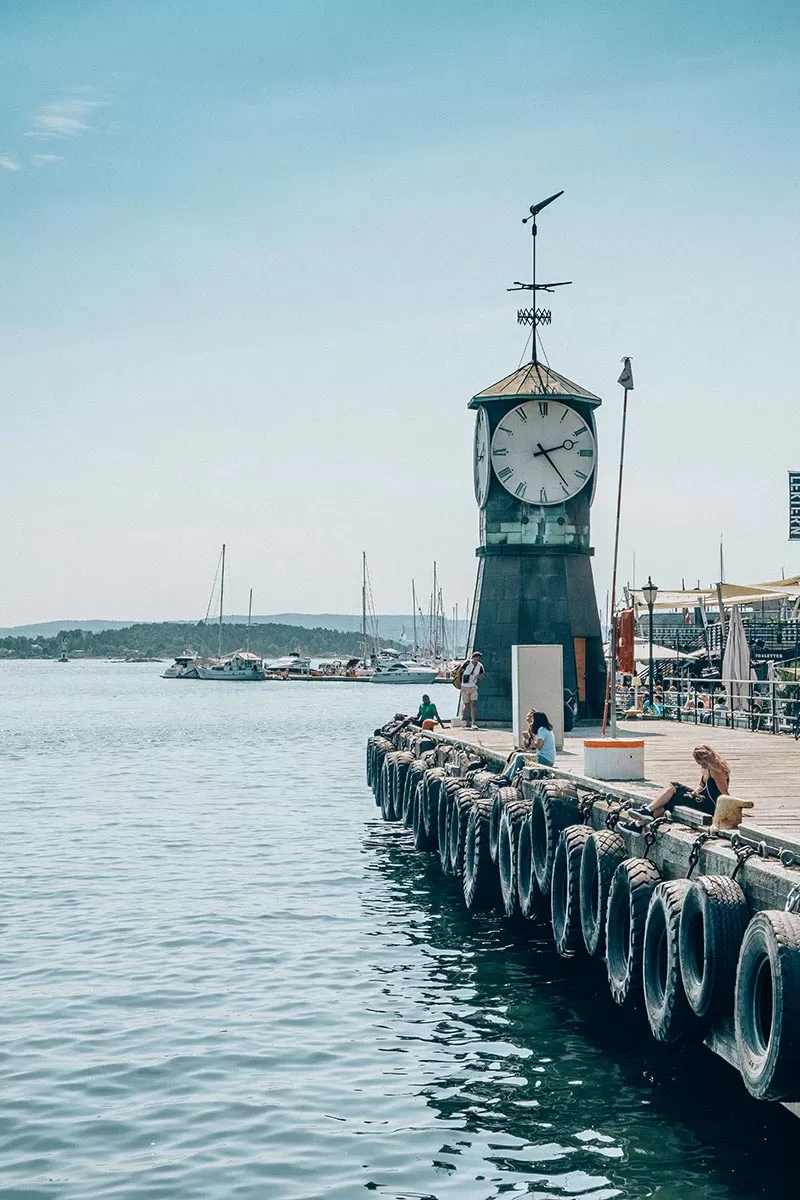
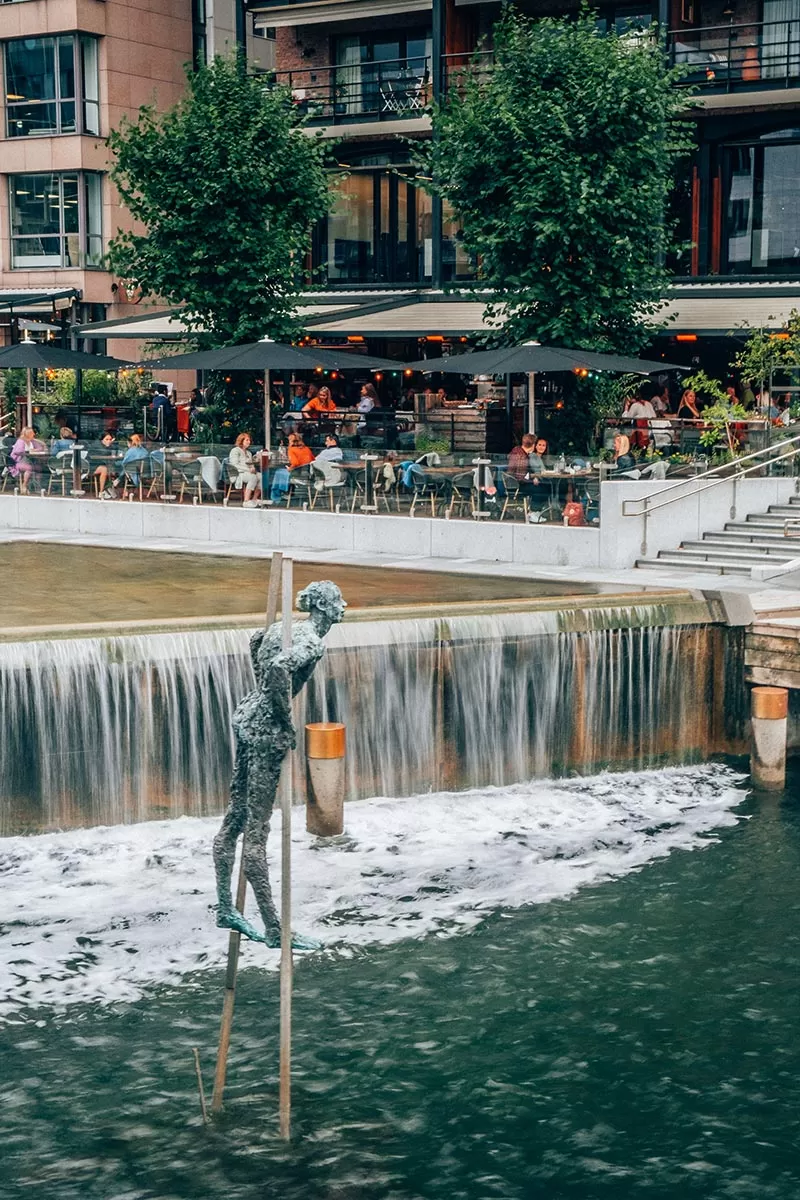
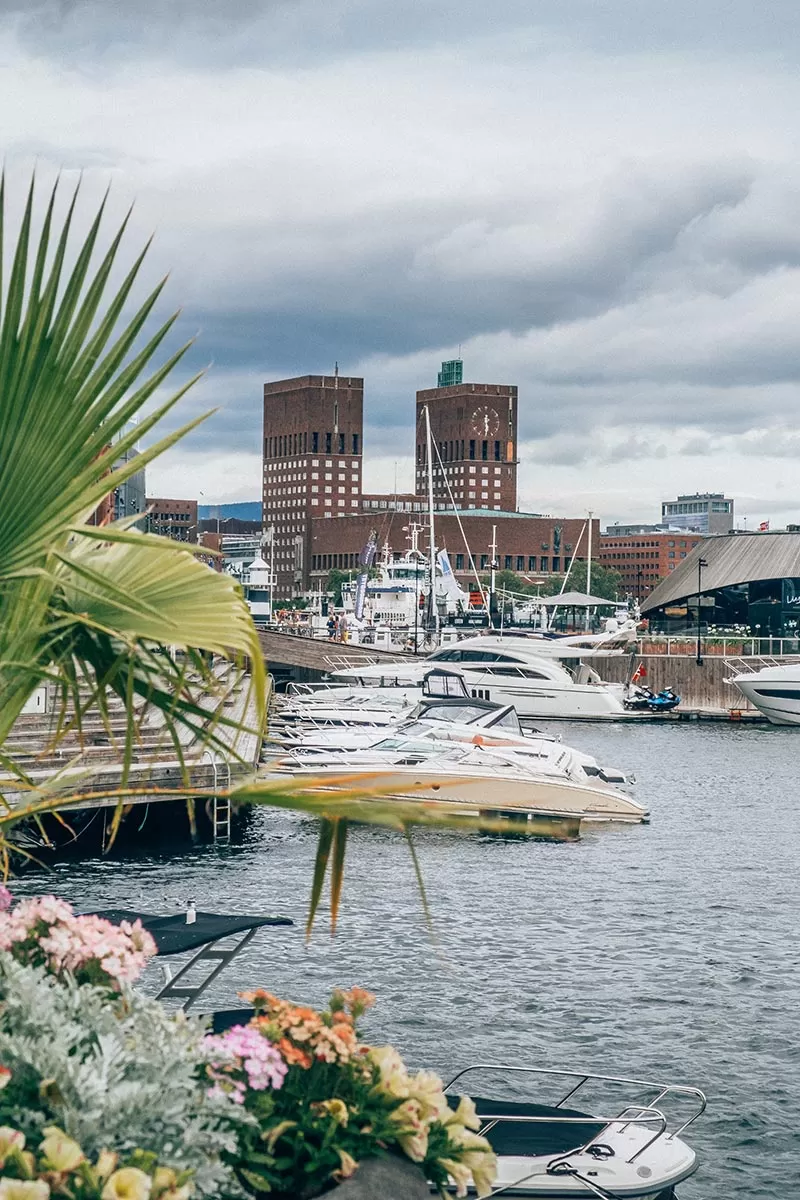
The waterfront is lined with restaurants offering excellent views over the marina and various food trucks if you want something on the go.
Historically, the Aker Brygge area was the site of a shipyard for over a century, Originally called, Akers Mekaniske Verksted (Aker’s Mechanical Workshop). Today, this vibrant corner of the city features large open-air areas, and is the location of many photo exhibitions, concerts and pop-up events, activities, and festivals.
13. See the ‘Eyes’ at Tjuvholmen Sculpture Park
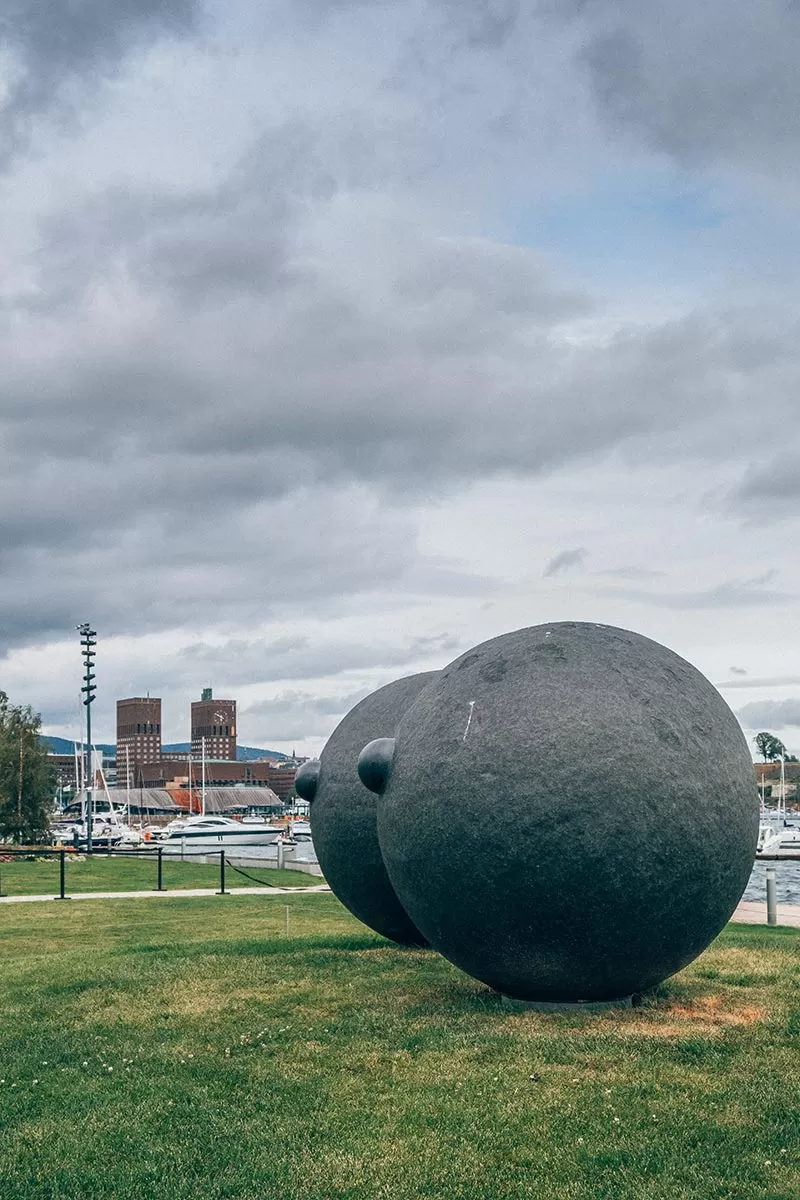
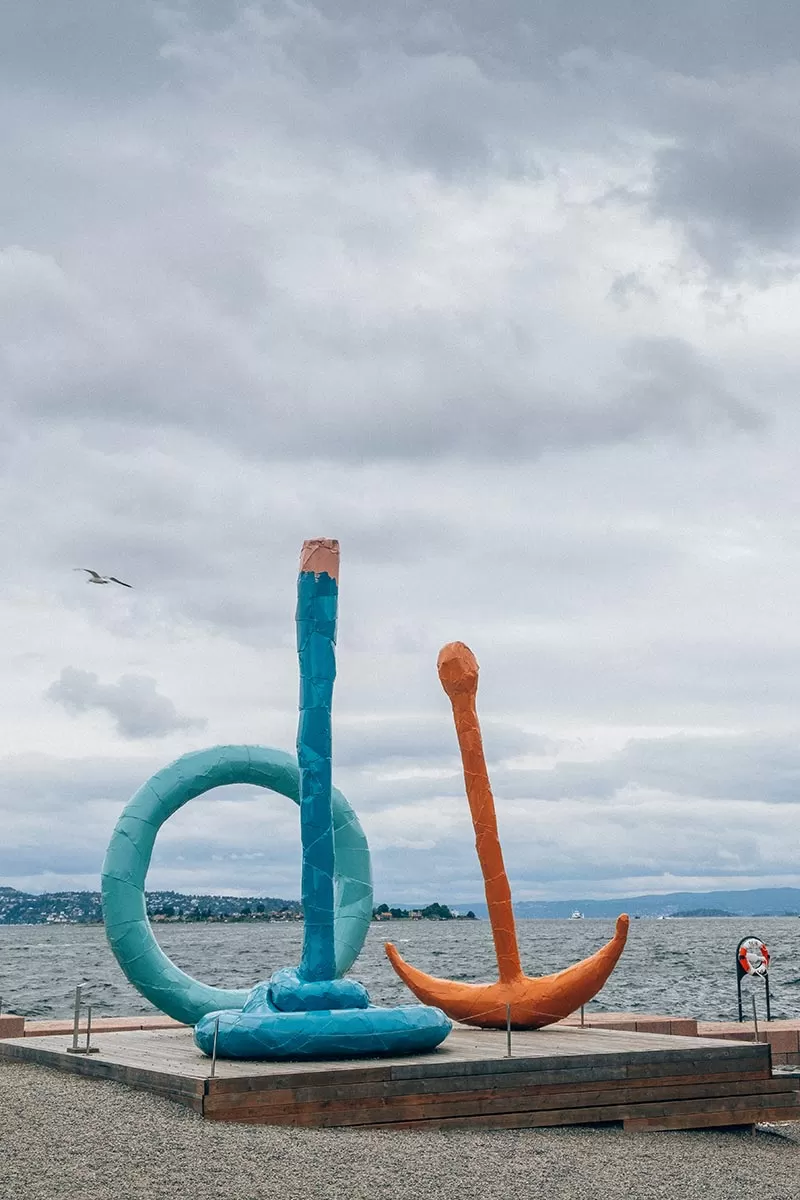
At the tip of Aker Brygge Wharf overlooking Oslofjord is the Tjuvholmen Sculpture Park, a quiet park featuring seven pieces of art created by well-known international artists. The sculpture park and nearby Astrup Fearnley Museum of Modern Art were designed by the world-renowned Italian architect Renzo Piano. The same architect who designed ‘The Shard’ in London and the MUSE Museum in Trento. One of the more memorable sculptures to look out for, no pun intended, is ‘Eyes’ by Louise Bourgeois. See photo above.
On hot days, locals flock to the nearby pier to cool off in the water.
14. See Oslo Cathedral (Oslo domkirke), Norway’s main church
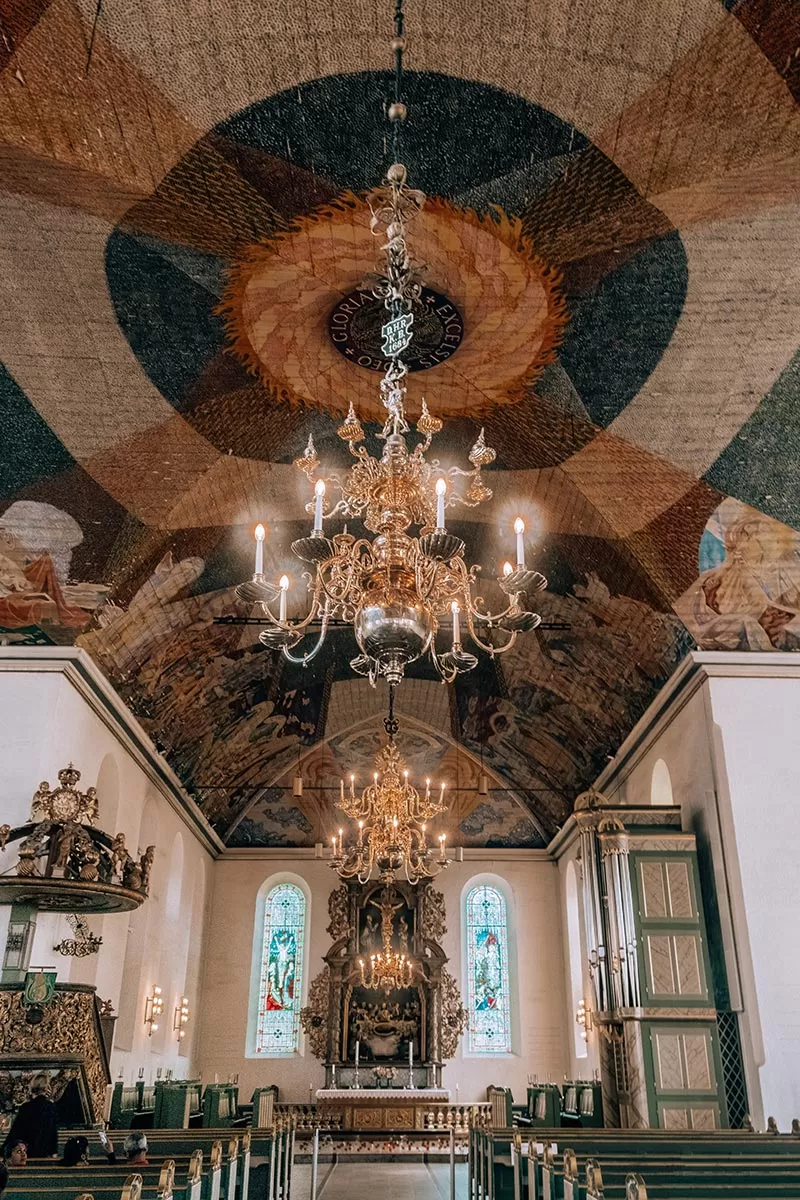
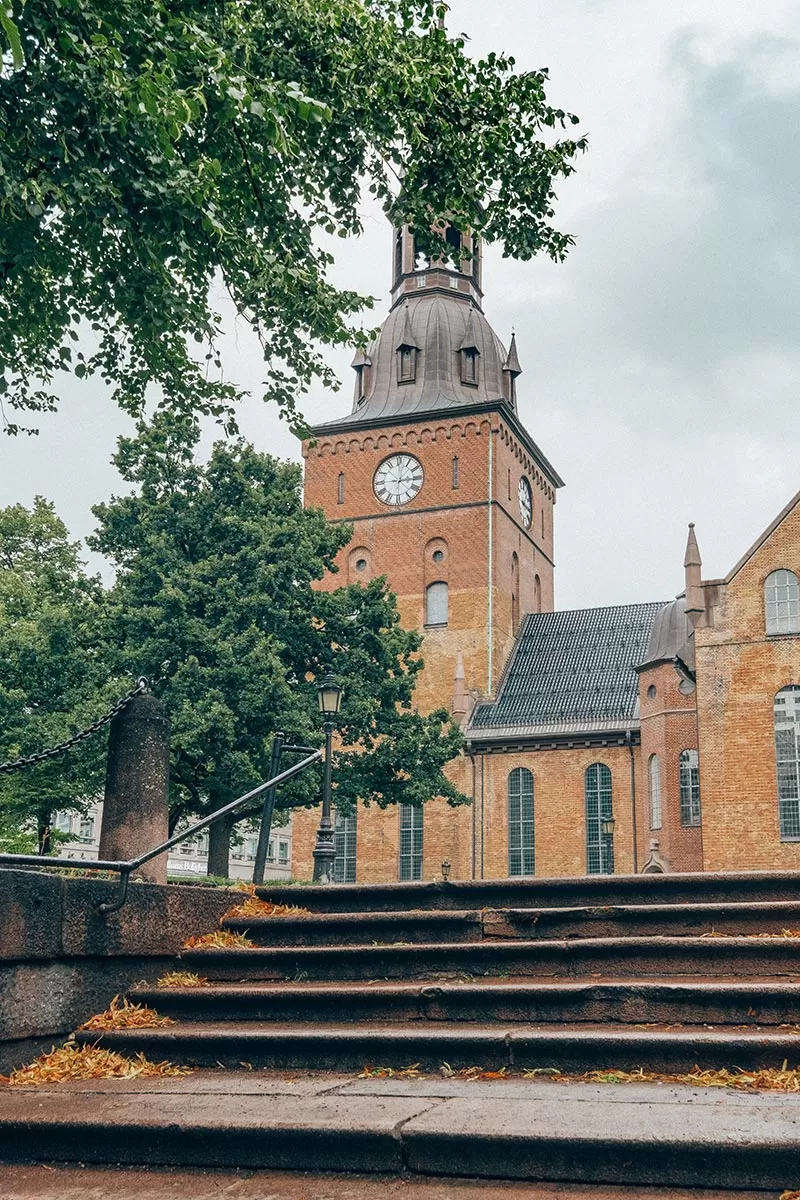
Oslo Cathedral is Norway’s main and most important church and is used for weddings and funerals by the Norwegian Royal Family and the Norwegian Government.
Head inside to see the large ceiling murals painted by Hugo Lous Mohr between 1936 and 1950, and the wonderful coloured stained glass windows are by Emanuel Vigeland – remember, that’s Gustav Vigeland’s brother
The church has mass in Norwegian on weekdays and high mass every Sunday, and is regularly used for concerts.
The church is open every day from 10am – 4pm except Friday where the church opens at 4pm and stays open until Saturday morning at. 06:00.
15. See Oslo’s tallest waterfall on Akerselva river
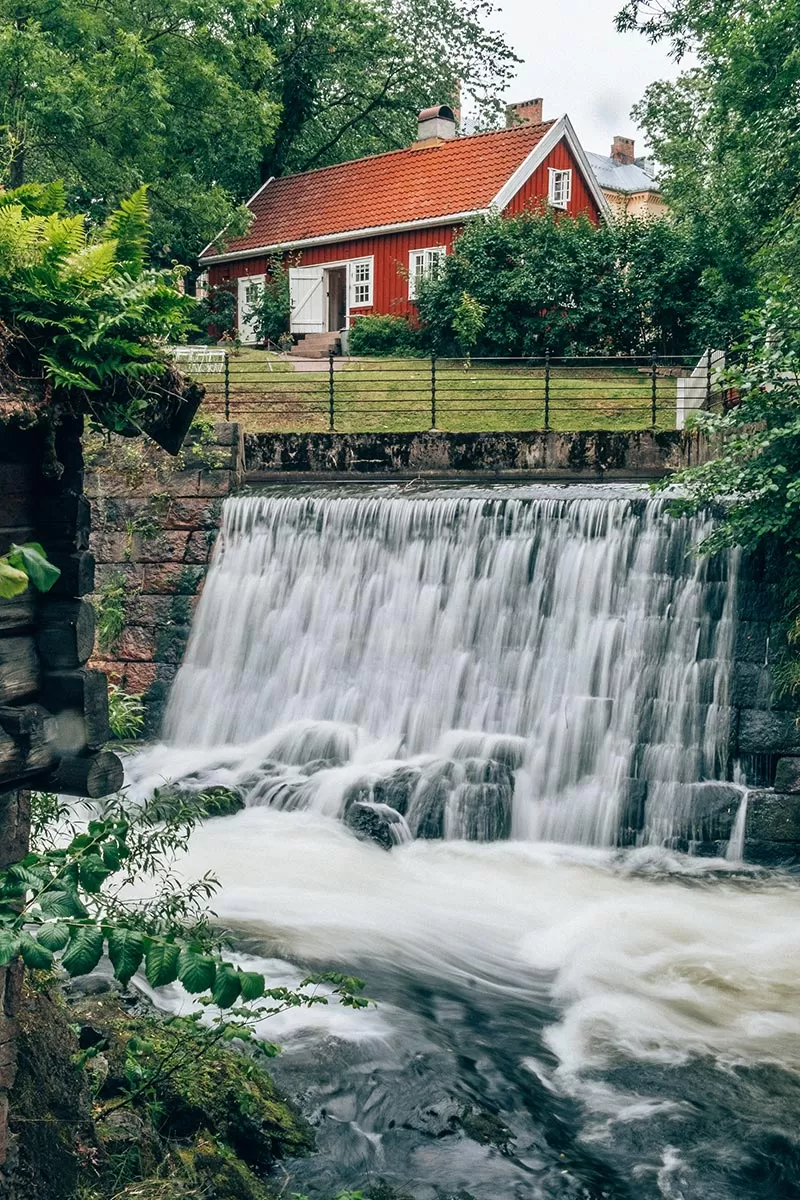
Hønse Lovisas house cafe
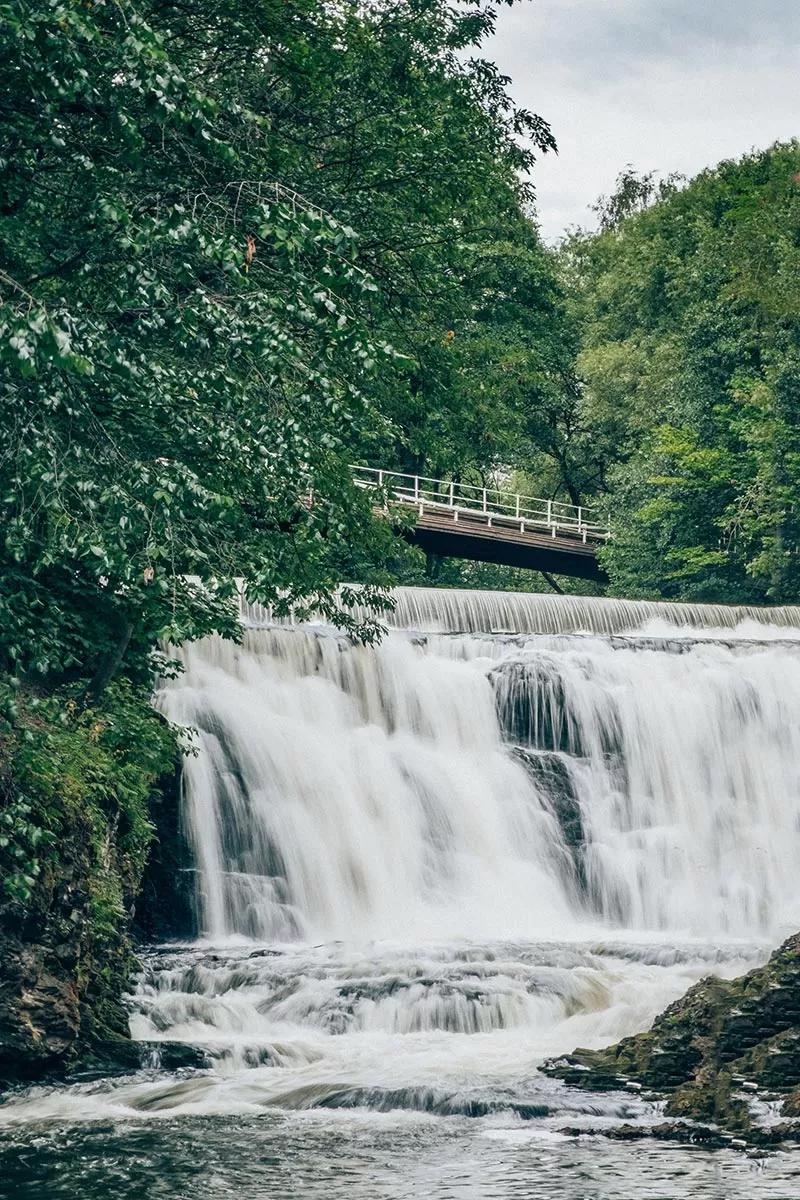
The path takes you past forested areas, historical buildings, fishing, and swimming spots and several waterfalls. Only locals seem and a few savvy travels know about this hidden treasure, so you’re in for a treat.
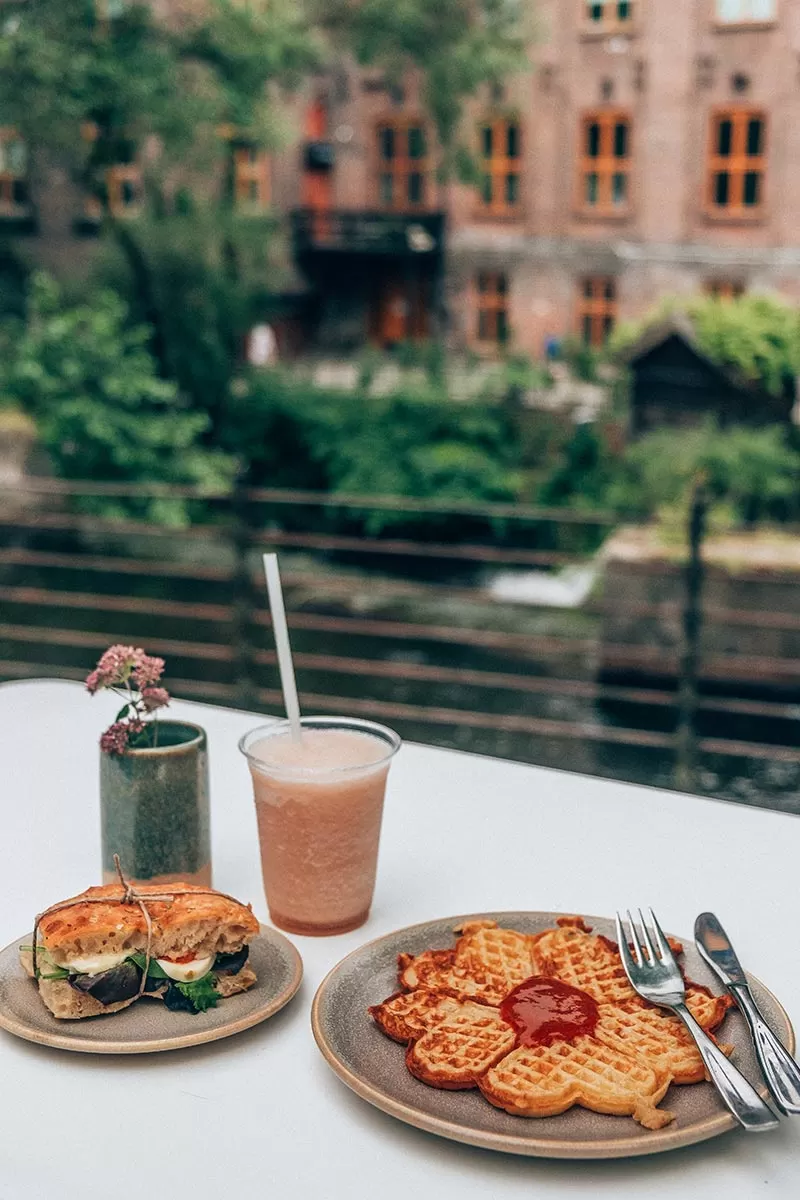
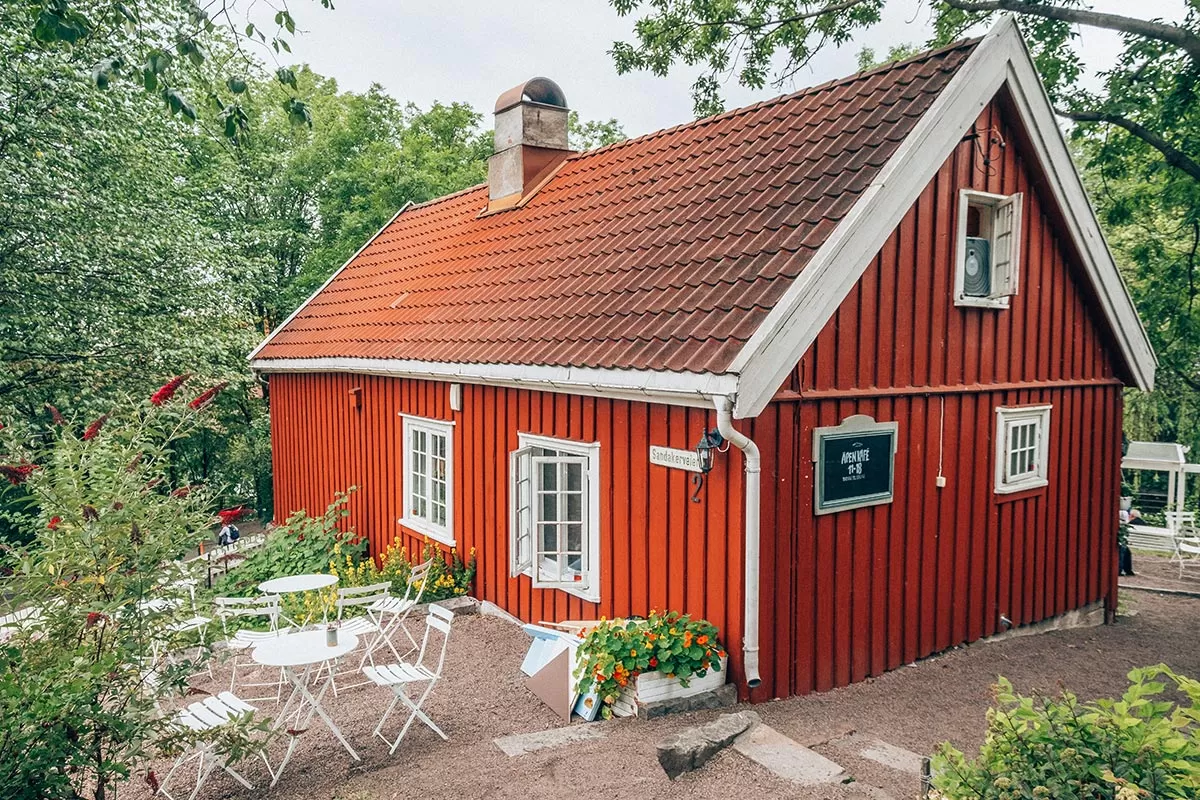
16. Take a photo with “The Tiger”
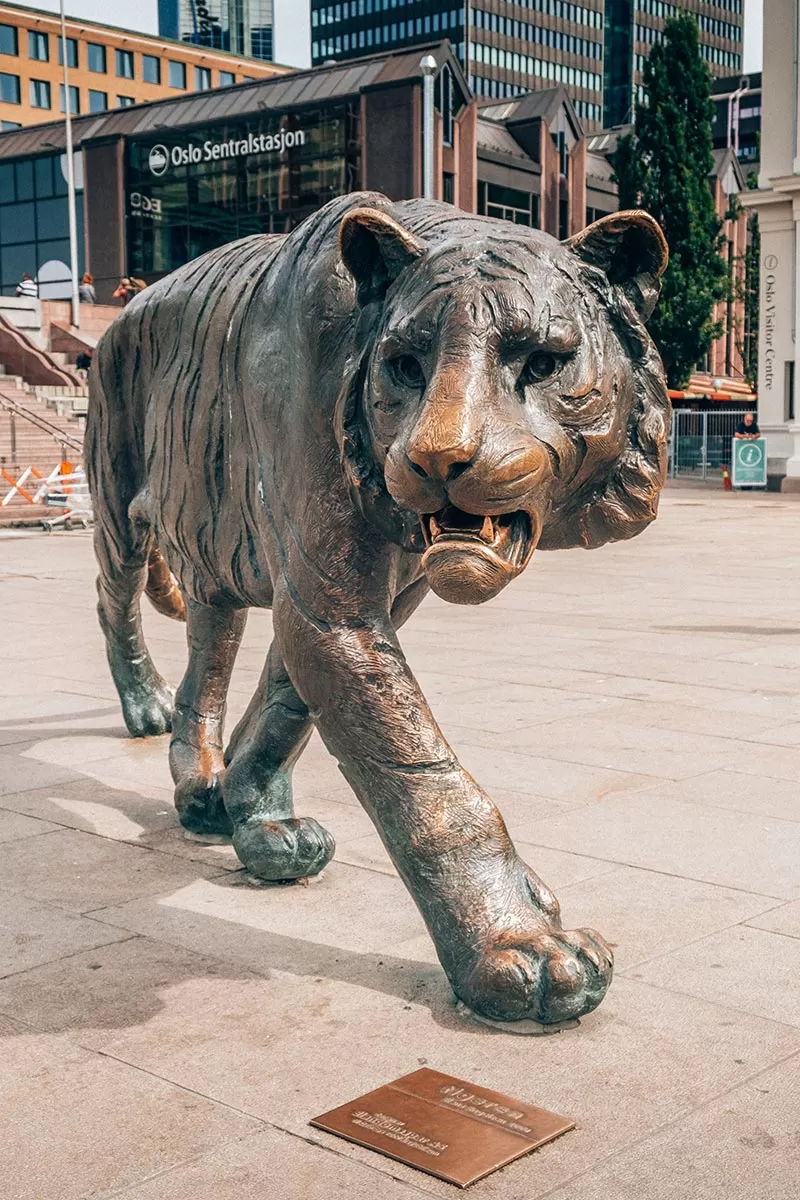
Why a tiger you ask? Well, as most Norwegian’s know, Oslo’s nickname is Tigerstaden (“The Tiger City”). This name was most likely first used by Norwegian poet Bjørnstjerne Bjørnson. In his poem “Sidste Sang” written in 1870, he describes a fight between a horse and a tiger; the tiger representing the dangerous city and the horse, the safe countryside. Since then Oslo has been known as “The Tiger City”.
Over the years the negative connotation and is now a reflection of Oslo being an exciting and happening place rather than dangerous.
17. See Akershus Fortress and Visitor Centre
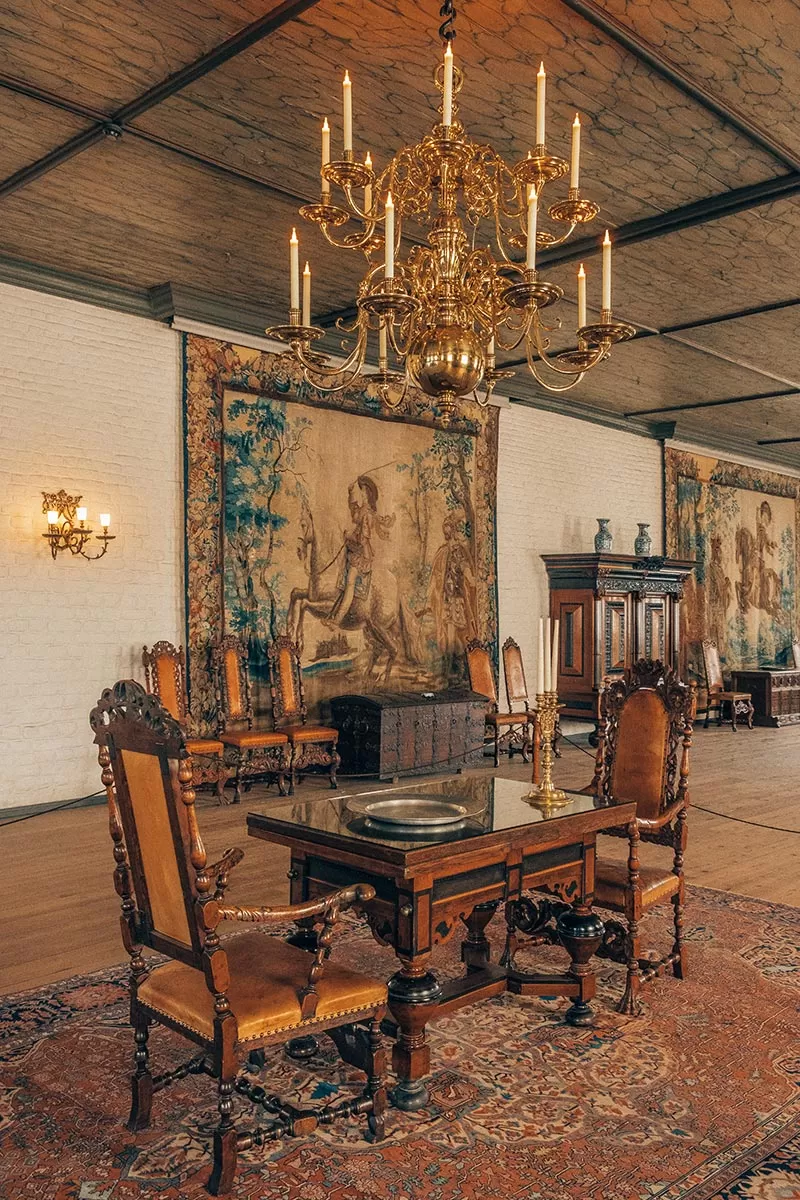
Banquet Hall
By the year 1300 AD, Oslo had about 3000 inhabitants and King Håkon V (1299 – 1319) was the first king to decide to live permanently in the city. As such, King Håkon V commissioned the construction of the Akershus Fortress and Castle with the sole purpose to protect and provide a royal residence in Oslo.
Thanks to its strategic location at the very end of the headland it managed to withstand a number of sieges over the centuries.
King Christian IV (1588-1648) later modernised and converted the castle into a luxurious Renaissance castle and royal residence and has since been used as a military base
Today, it’s an open air museum free for the public to wander around and pay a visit to the Fortress Visitor Centre.
If you want to head inside the castle building, entrance is NOK 100 / $11 USD or free with the Visit Oslo Pass. You ticket includes a visit to the banquet halls, the Royal Mausoleum and the government’s reception rooms, and the small, historic church that’s home to the royal sarcophagi.
Visit the official Akershus Fortress website for more information
18. Climb the Holmenkollen Ski Jump
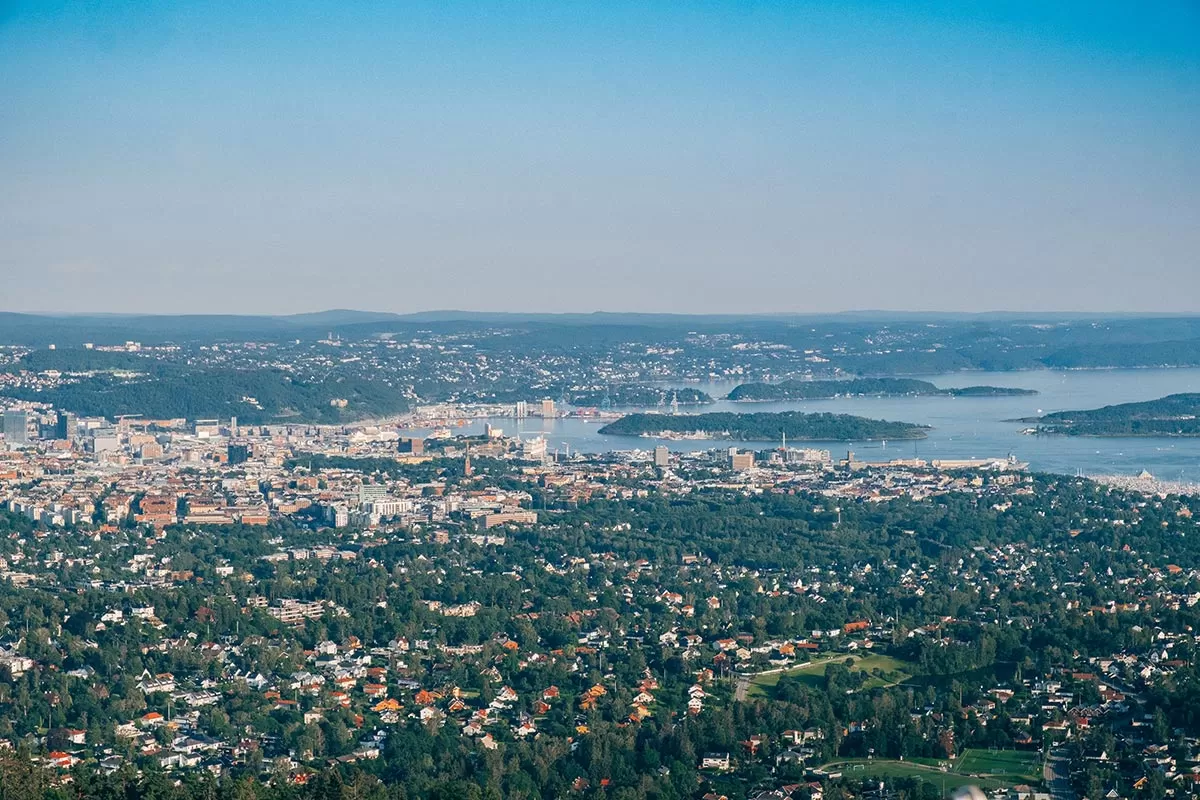
Holmenkollen Ski Jump has been the heart of Norwegian skiing for over 100 years with the first ski jumping competition taking place on 31st January 1892. Holmenkollen was also used in the VI Olympic Winter Games held in Oslo in 1952.
Located underneath the ski jump, is the Holmenkollen Ski Museum, the oldest of its kind in the world. This impressive museum covers Norway’s long relationship with skiing, all 4,000 years in fact as well as Norwegian polar exploration with a series of artifacts on exhibition. The museum proves that Norwegians really to do learn to ski before they learn to walk.
End your visit by taking the elevator up to the very top of the ski jump for awesome 360 degree views of Oslo and the Oslo Fjord.
Today, visitors are free to enter and walk around inside the ski jump itself, however, entrance to the museum costs NOK 140 / $15.50 USD for adults. Entrance is free with the Oslo Pass.
Even if you don’t head inside the museum, it’s still worth coming out here to admire this huge structure. Standing on it and actually dizzying. Holmenkollen Chapel and a park are nearby. Head up to the park for an elevated view of the whole area.
19. Enjoy Oslo’s street art and sculptures
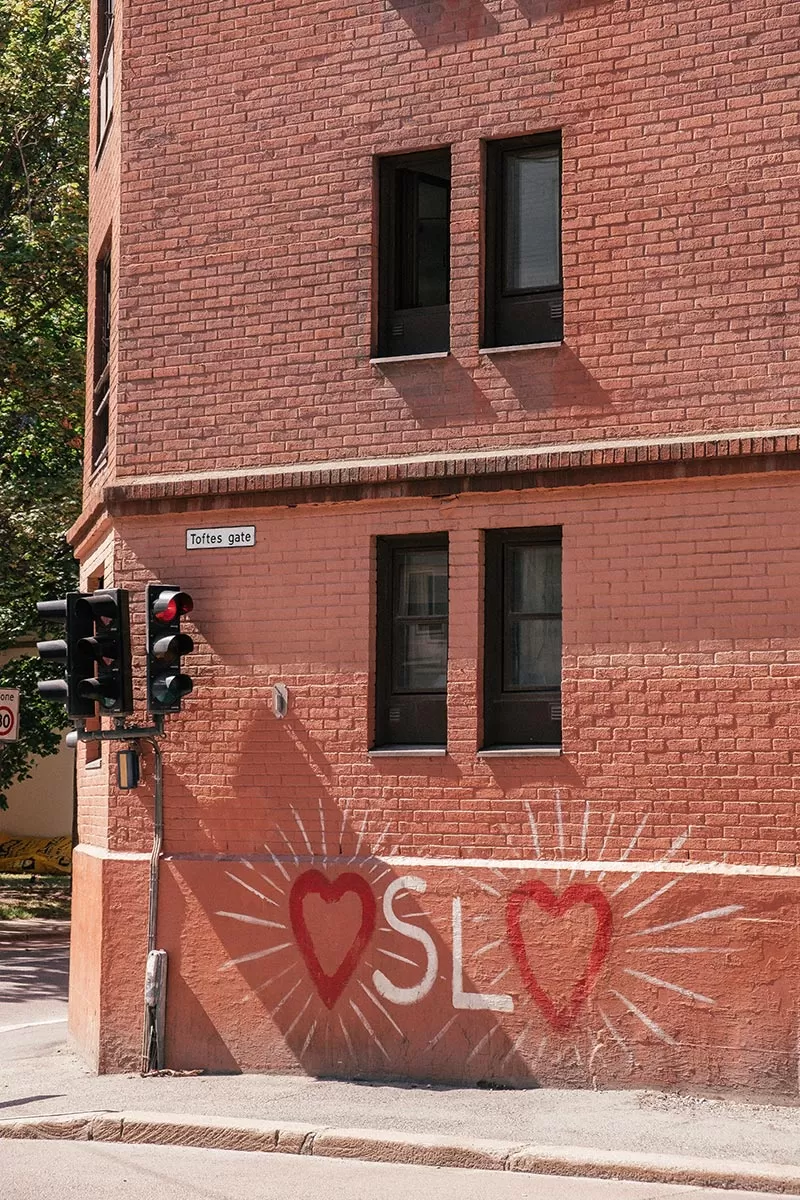
Amongst the most memorable is the Sphinx, which is a sculpture of Kate Moss in a very uncomfortable-looking yoga pose located outside the Clarion Collection Hotel Folketeateret. The other is a copy of a sculpture by Paul McCarthy depicting a Santa Claus with a “christmas tree” in his hand. The first time I saw this sculpture was in Rotterdam, which is the original. Read all about its meaning and symbolism in my Rotterdam travel guide.
For more street art and sculptures inspiration, check out Visit Oslo’s urban art guide.
20. Wander the gardens of Oscarshall palace
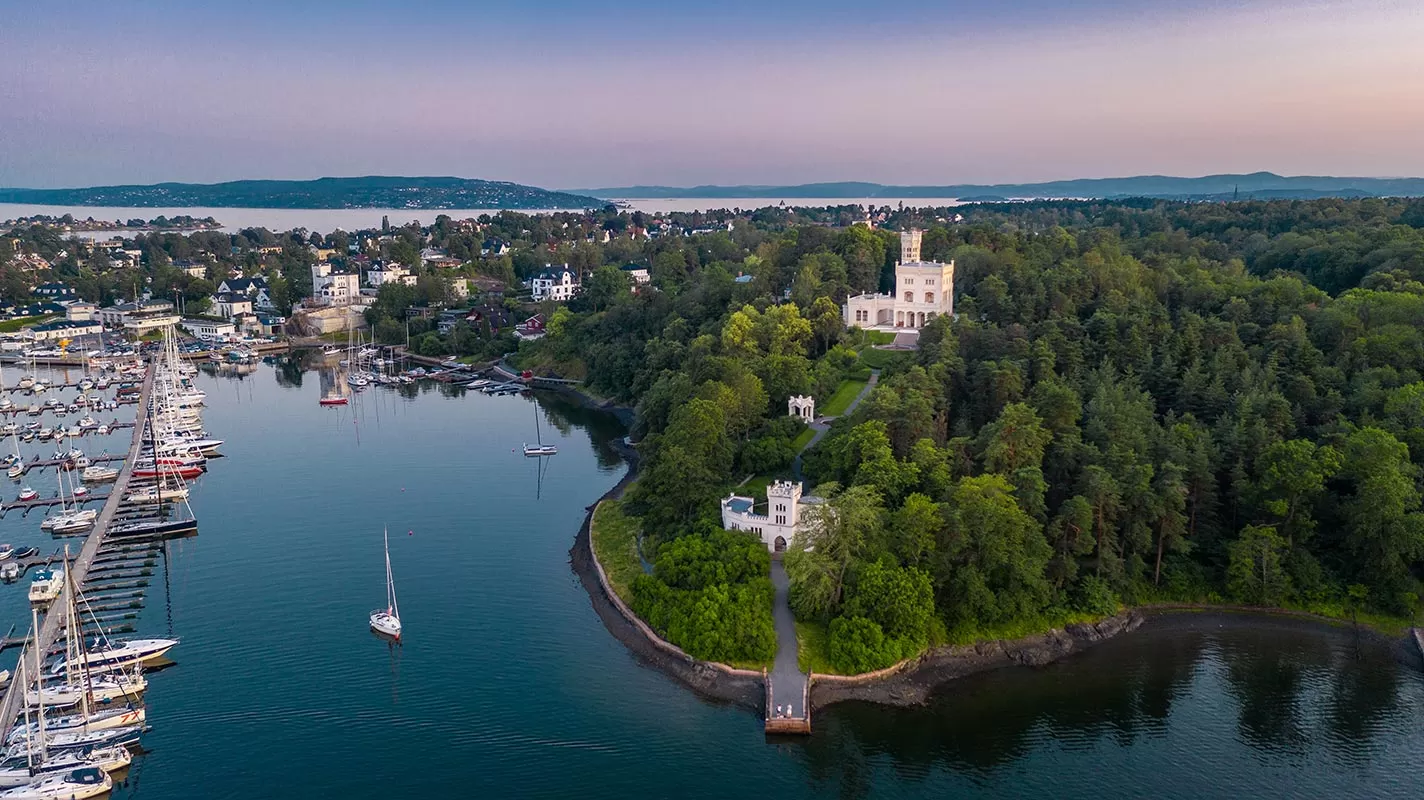
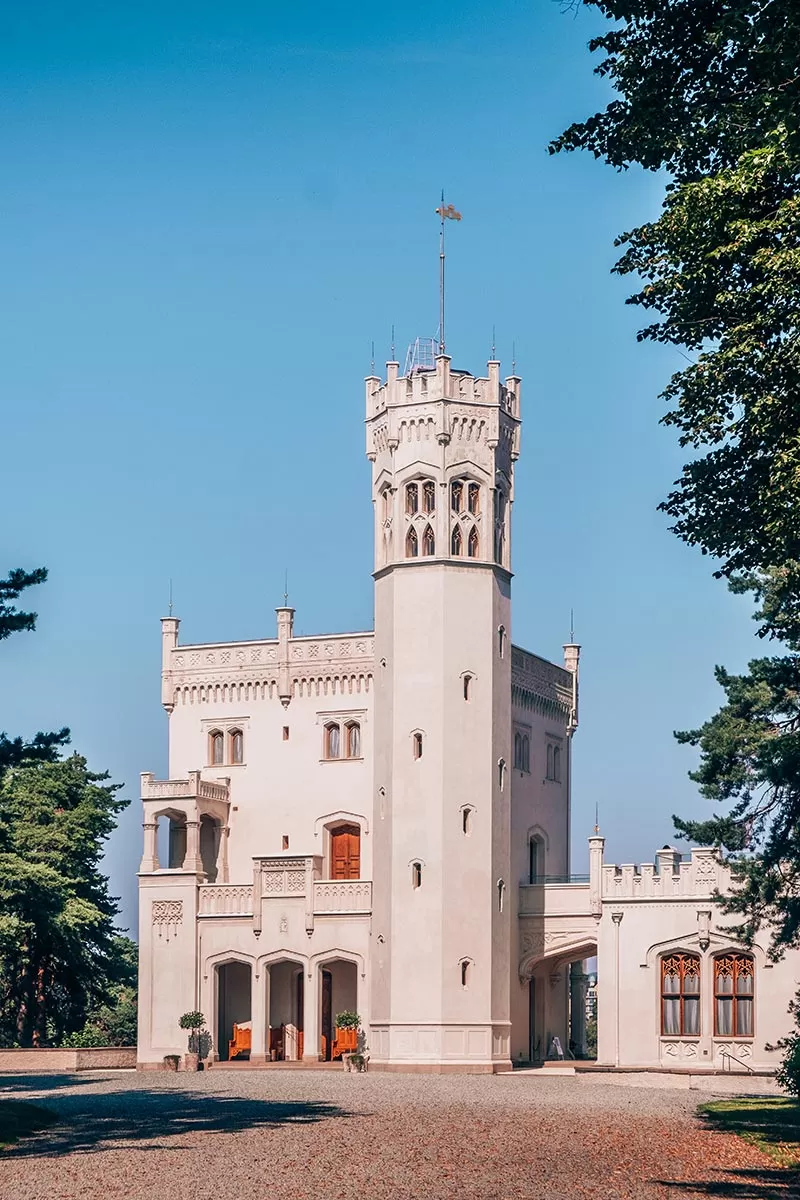
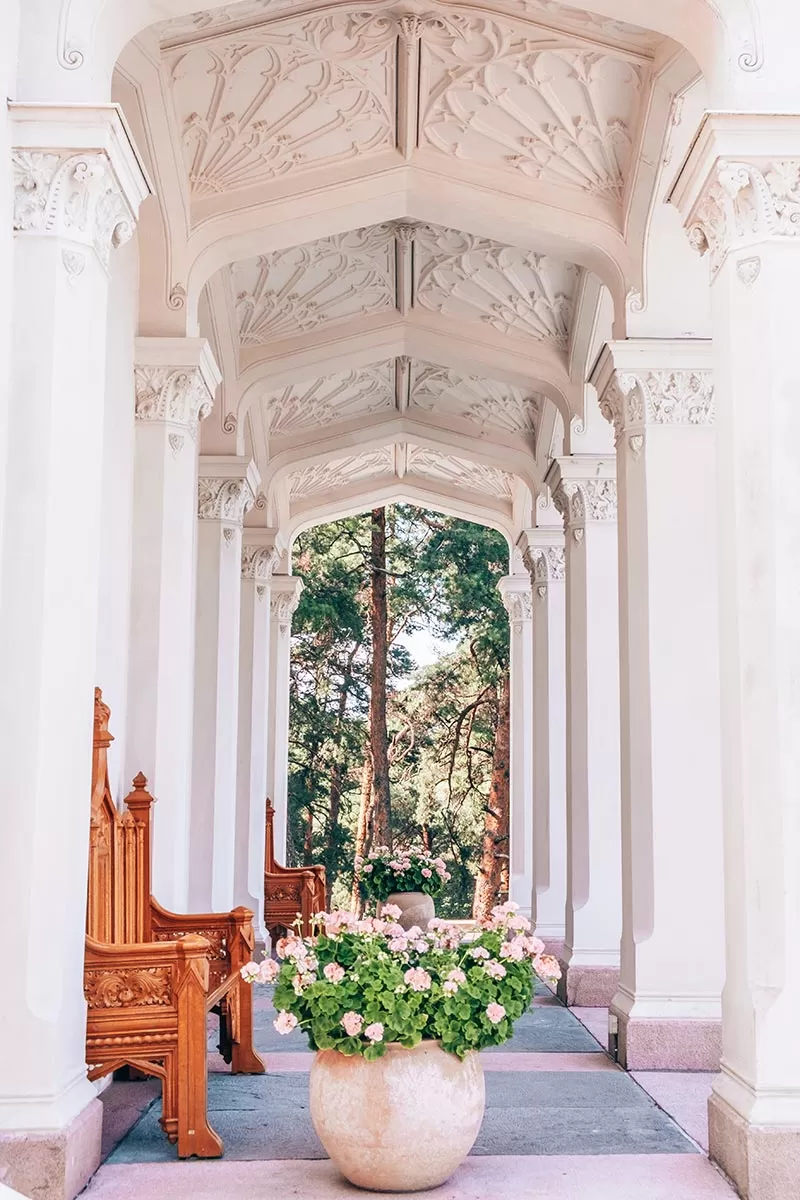
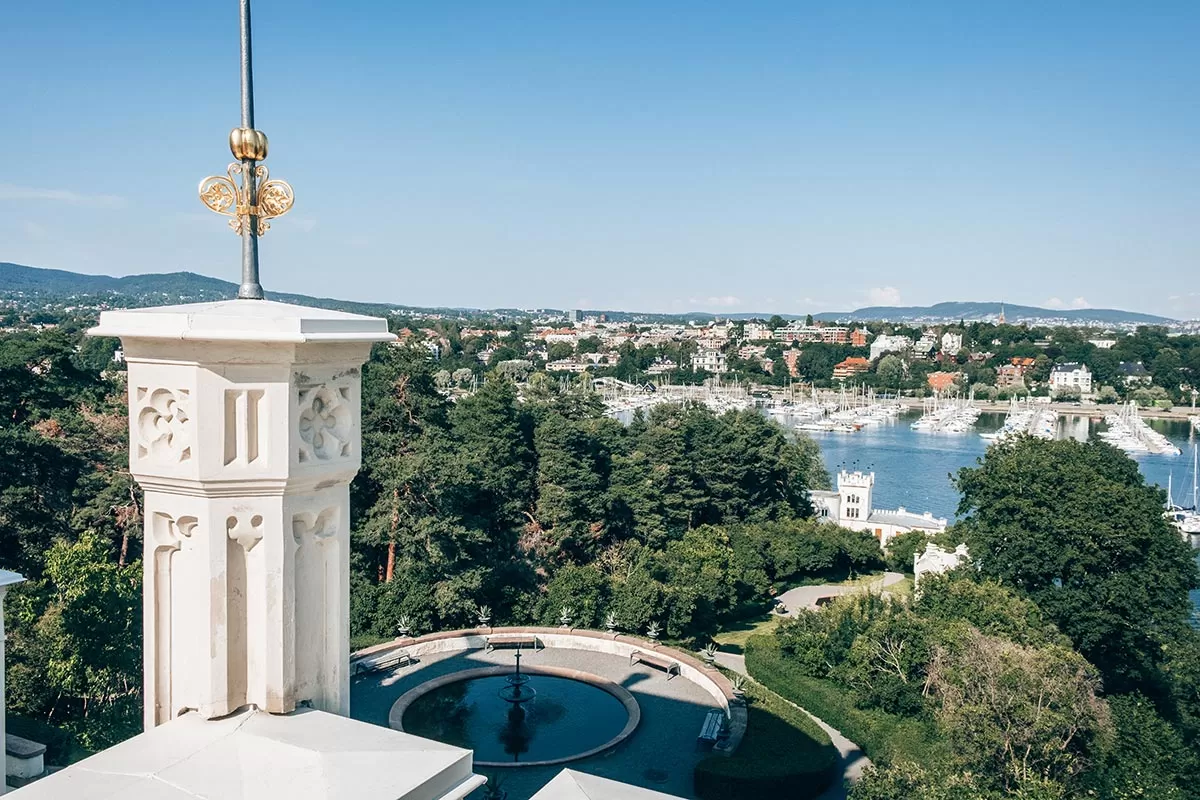
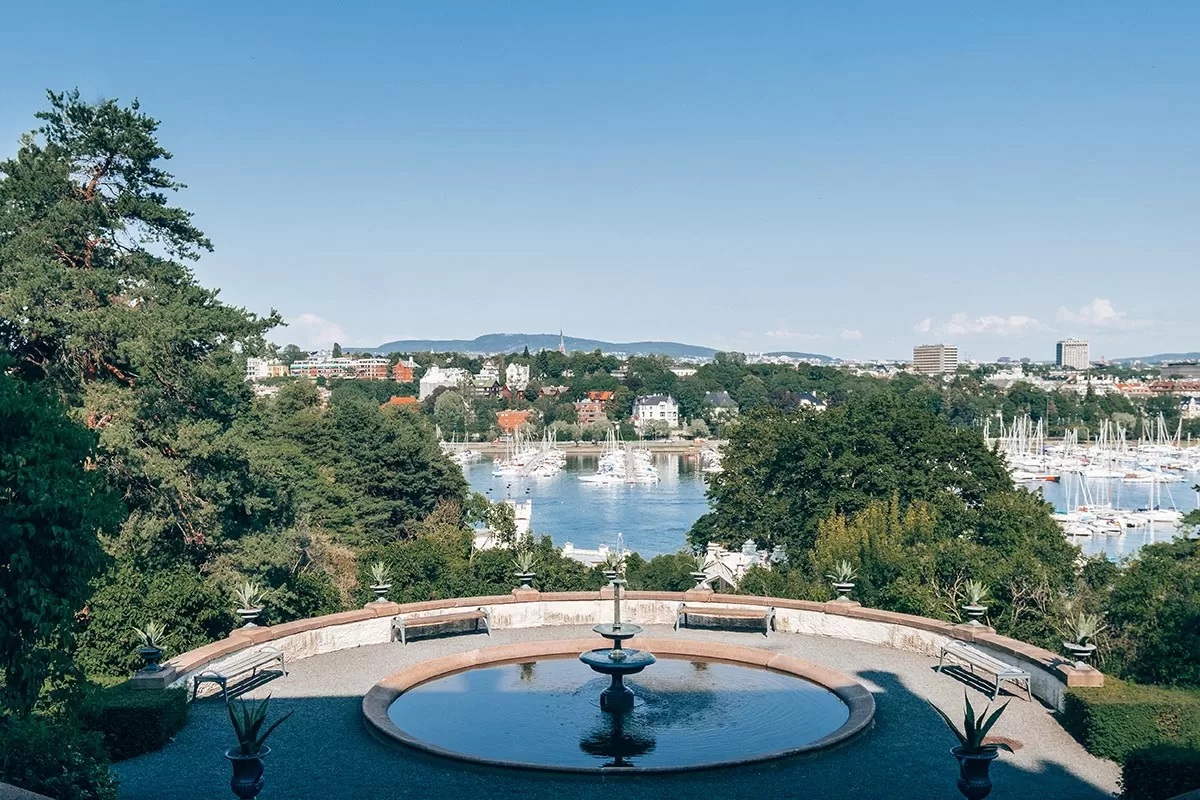
Vistors are free to wander the lovely gardens around the palace before stopping by the cafe with outdoor seating that overlooks the harbour.
If you can spare the NOK 100 / $11 USD, I recommend joining a guided tour inside the palace. It’s both beautiful and holds an interesting history. The interior was wholly constructed and decorated by Norwegian artists and artisans.
Oscarshall can only be visited as part of a guided tour which only runs in Norwegian. However, the guide may conduct the tour in English (like mine did) if the majority of the visitors are English-speaking and/or are happy for it to be in English.
Oscarshall and the grounds are only open during the summer from 1 June until 8 September. Tours start every hour (Wednesday – Sunday 11:00 – 17:00) and last approximately one hour. The last tour starts at 16:00. Monday – Tuesday Oscarshall is closed.
21. Visit Kvadraturen, Oslo’s historical centre
Another one of my favourite free things to do in Oslo is visiting Kvadraturen. Located behind Akershus Fortress, Kvadraturen is Oslo’s historical centre. Its name Kvadraturen (“the quadrature”) was inspired by the rectangular street pattern of this once renaissance town.
After the big town fire in 1624, this was where Danish-Norwegian King Christian IV’s founded Christiania, which he named after himself, of course. It was then renamed Oslo by law in 1924.
Sadly, only a few buildings from the 17th and 18th century survived the ages including the building that housed Oslo’s first town hall, and the city’s oldest restaurant, Café Engebret. You’ll also find the Museum of Contemporary Art, the Museum of Architecture, the Film Museum and several galleries located here.
Located in square Christiania torv is a fountain with a large sculpture of a hand pointing to the ground. This is supposedly the hand of King Christian IV who pointed to this spot and said: “The new town will lie here!”
22. Walk across the Ankerbrua, Oslo’s fairytale bridge
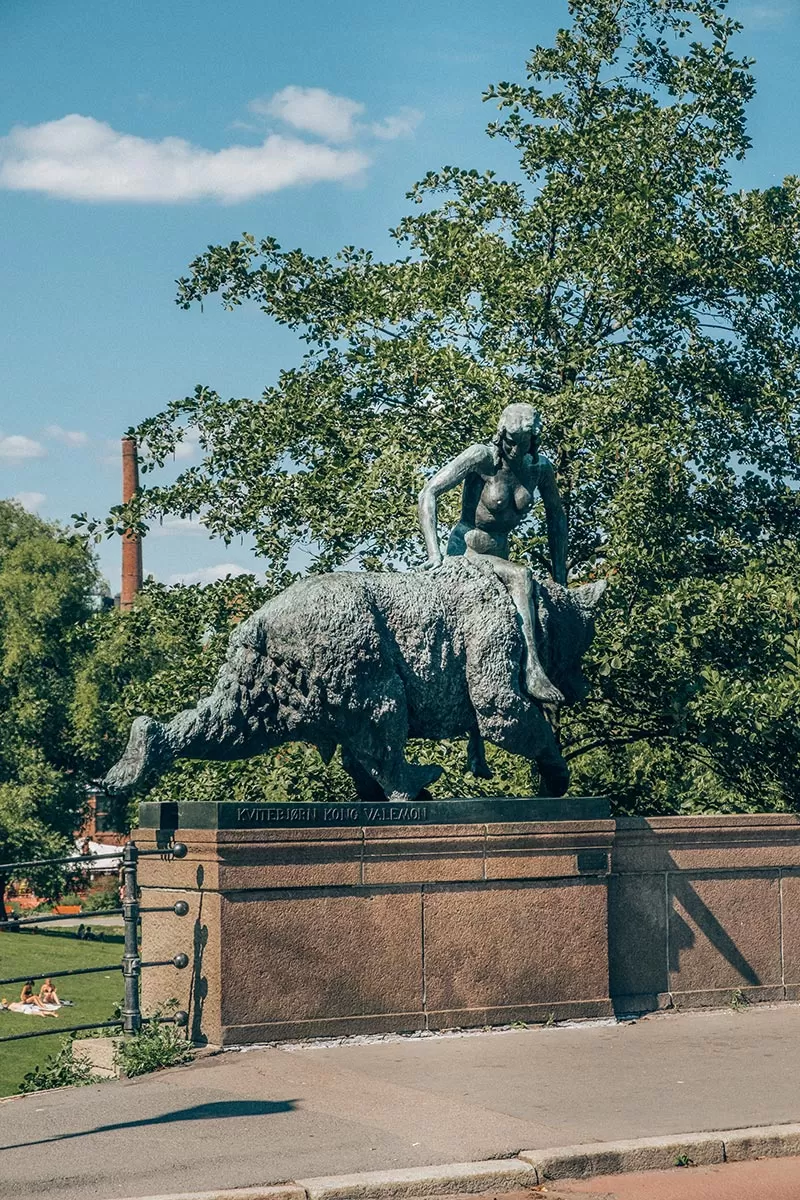
Kvitebjorn kong Valemon
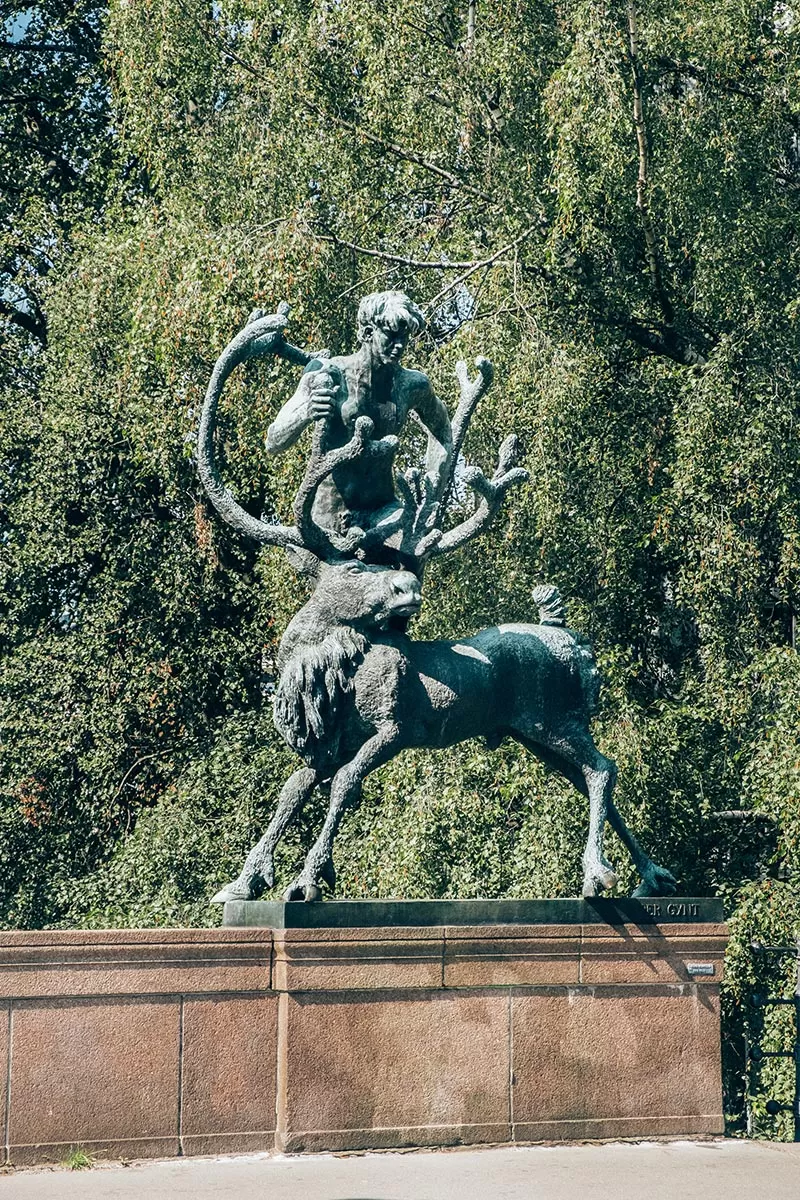
Per Gynt
Ankerbrua isn’t just another river-spanning structure, this bridge is guarded by 4 bronze statues each representing a different Norwegian fairy tale hero.
While the bridge dates back to 1926, isn’t wasn’t until 1937 when local artist Dyre Vaa was tasked with project of adding these four fabled heroes.
On the Grünerløkka side there’s a man on a reindeer depicting Per Gynt, a legendary deer hunter from Gudbrandsdalen. This story actually helped inspire Henrik Ibsen’s famous work, Peer Gynt.
Across the bridge is Kari Trestakk, the Norwegian Cinderella who escaped her evil stepmother on the back of a great blue ox.
At the city end there’s a woman on a huge bear representing Kvitebjørn kong Valemon. King Valemon was cursed to spend his days as a polar bear after he refused to marry a wicked witch. The woman is the princess who became his wife.
Opposite the bear is Veslefrikk med fela, which is a young man who gets three wishes from a troll. One of his wishes is for a fiddle that no one can resist dancing to, which eventually saves him from a lynch mob.
Planning a trip and need travel insurance? Get a free quote from World Nomads here.
Oslo Accommodation: Where to stay in Oslo on a budget
During my first visit to Oslo around Christmas time, I stayed at Anker Hotel for four nights. The double room I had was very spacious and the bathroom was equally as big. The room had a lovely view over the stream and bridge leading up towards Damstredet and Telthusbakken. Located just a 15-minute walk from Karl Johans Gate, Anker Hotel is also well connected with both tram and bus stops right outside the hotel. I particularly enjoyed their traditional Norwegian ginger biscuits they had at reception each day. Nom nom! These are very much a Christmas tradition though.
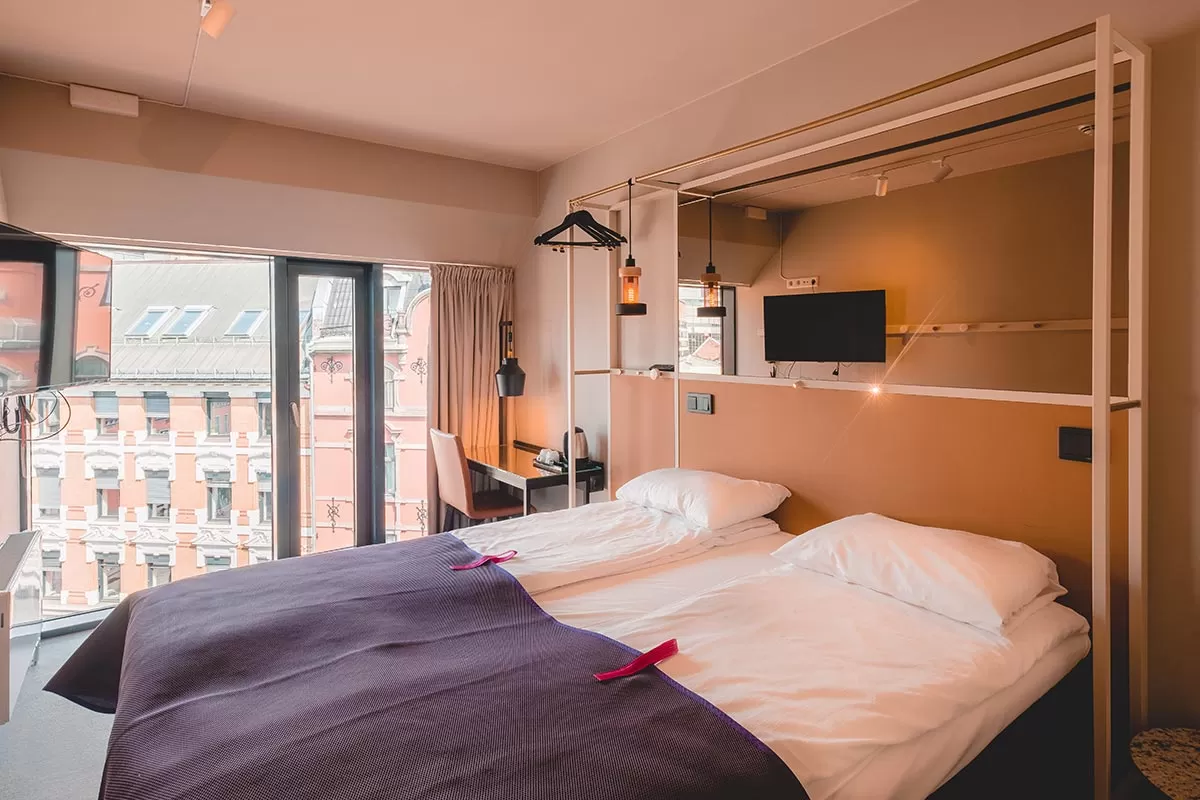
Alternatively, there are some great Airbnb options starting from USD$60 per night. If it’s your first time get US$65 OFF here or get £50 OFF your first stay here, when you sign up using my unique reader referral link.
Want to see more of Oslo and Beyond? Join one of these tours!
- Oslo Nature Walks: Island hopping
- Join this small Group Oslo walking tour
- Take this self-guided trip to Bergen and Flåm
- PLUS…many more here!
Plan your trip with my Oslo travel toolkit
- Going to Norway? Take my Norwegian travel phrase guide
- Find the best deals on flights here
- Get the best hotel deals here
- Compare the best car rental prices here
- Live like a local and use my Airbnb. If it’s your first time get US$65 OFF here or get £50 OFF your first stay here, when you sign up using my unique reader referral link.
- See more of Oslo with local experiences.
- And last, but not least, I never travel without getting this travel insurance!
Visiting Norway? Check out my other Norway posts
- 49 Underrated Things to Do in Oslo, Norway That Are Totally Worth Doing
- Emanuel Vigeland Museum: Oslo’s Best-Kept Secret
- How to Hike Trolltunga like a Pro: The Ultimate Guide
- 23 Travel Tips You Should Know Before Visiting the Lofoten Islands, Norway
- How to get to Lofoten: 6 Easy Ways to Get to the Lofoten Islands, Norway
- 28 Unique Things to Do in Lofoten Before You Die [A Comprehensive Guide]
- 11 Awesome Things to do in Stavanger you won’t forget
- 20 Unique Things to do in Tromsø in Winter: The Definitive City Guide, Itinerary & Travel Tips
- The Ultimate Sámi Culture Experience in Tromsø
- 7 Reasons Why You Should Take an Arctic Fjords Road Trip in Tromsø
- The Best Place to See the Northern Lights You Probably Haven’t Heard of
- How to Choose the Best Whale Watching Tour in Norway and Iceland
Like it? Pin it for later
Over to you!
Are you planning to visit Oslo? Have you visited Oslo and can recommend other free activities?
Let me know using the comments section below or join me on social media to start a conversation.
Thanks for reading and I hope you enjoyed this post.
Like what you see? Subscribe using the form below to have all of my posts delivered directly to your email.

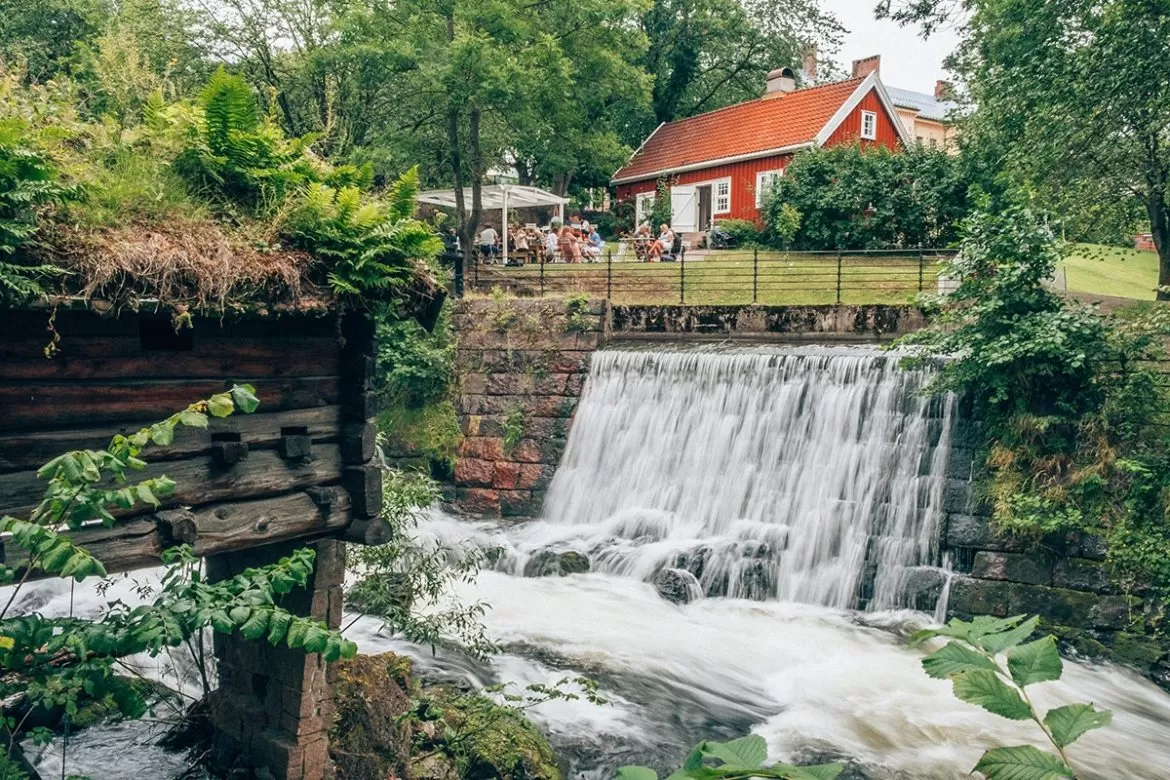
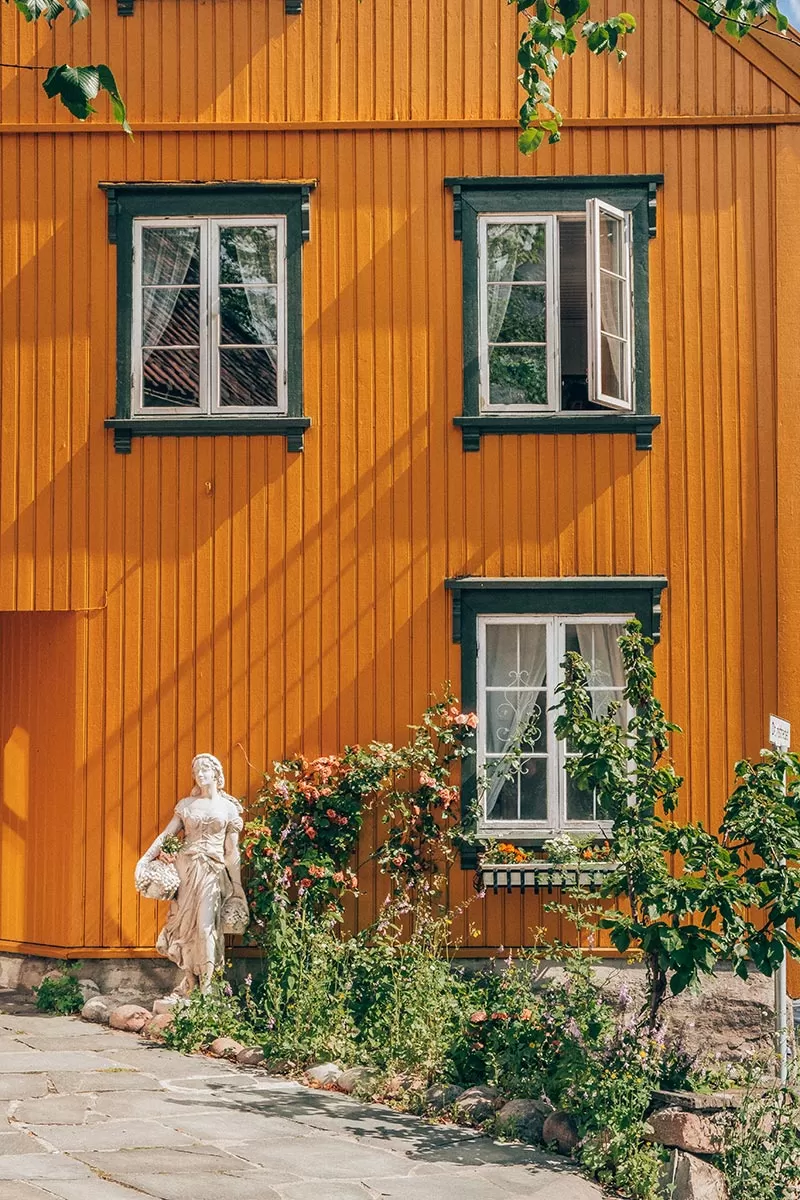
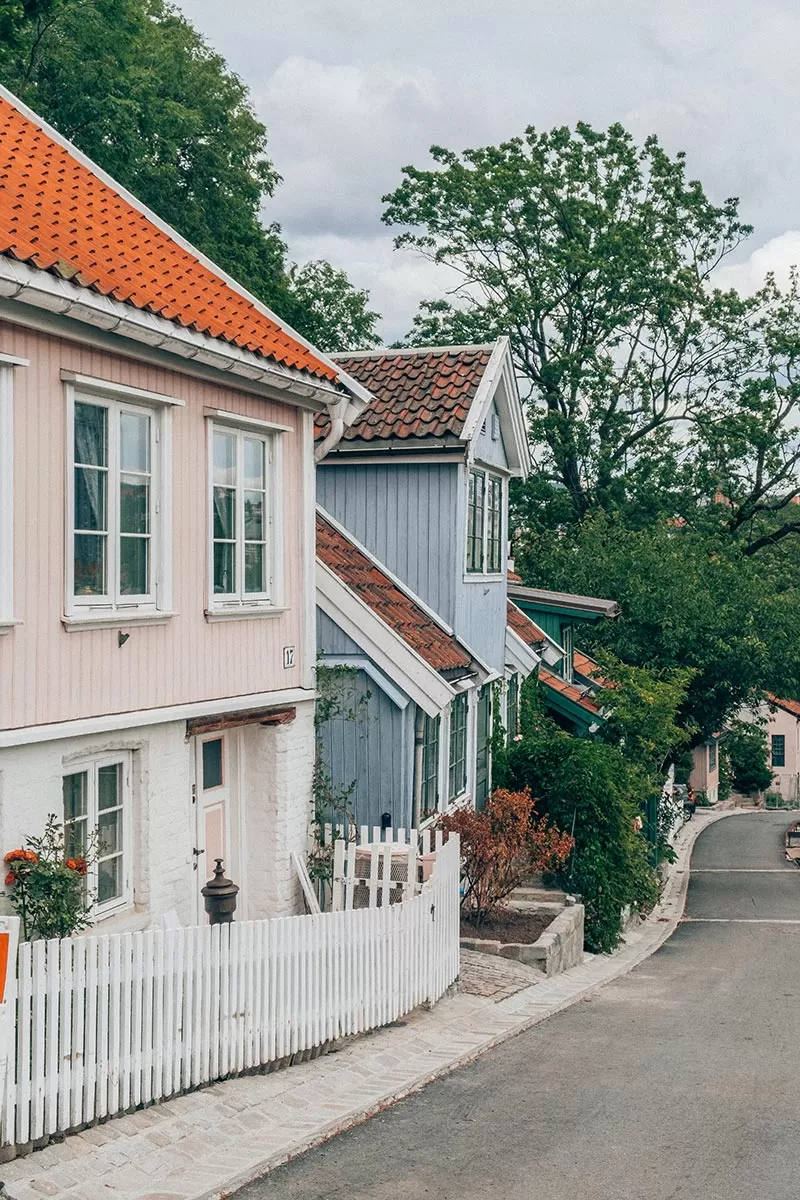
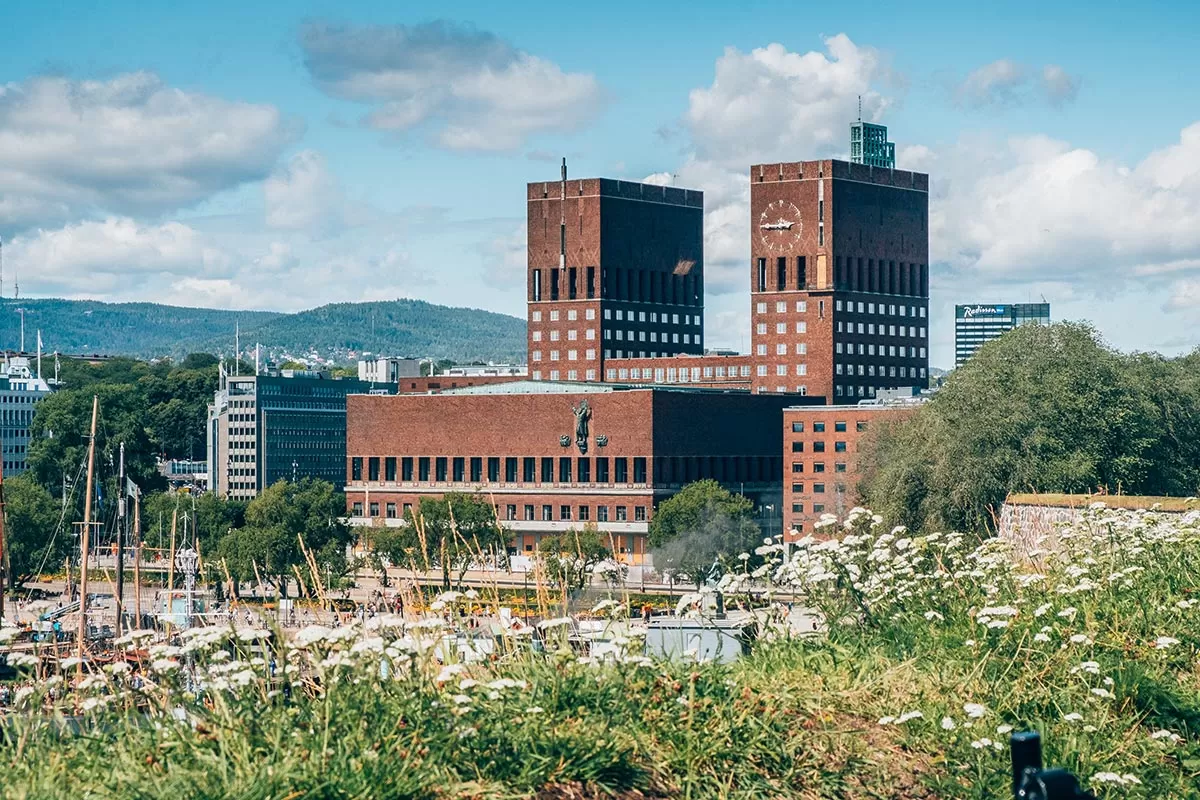
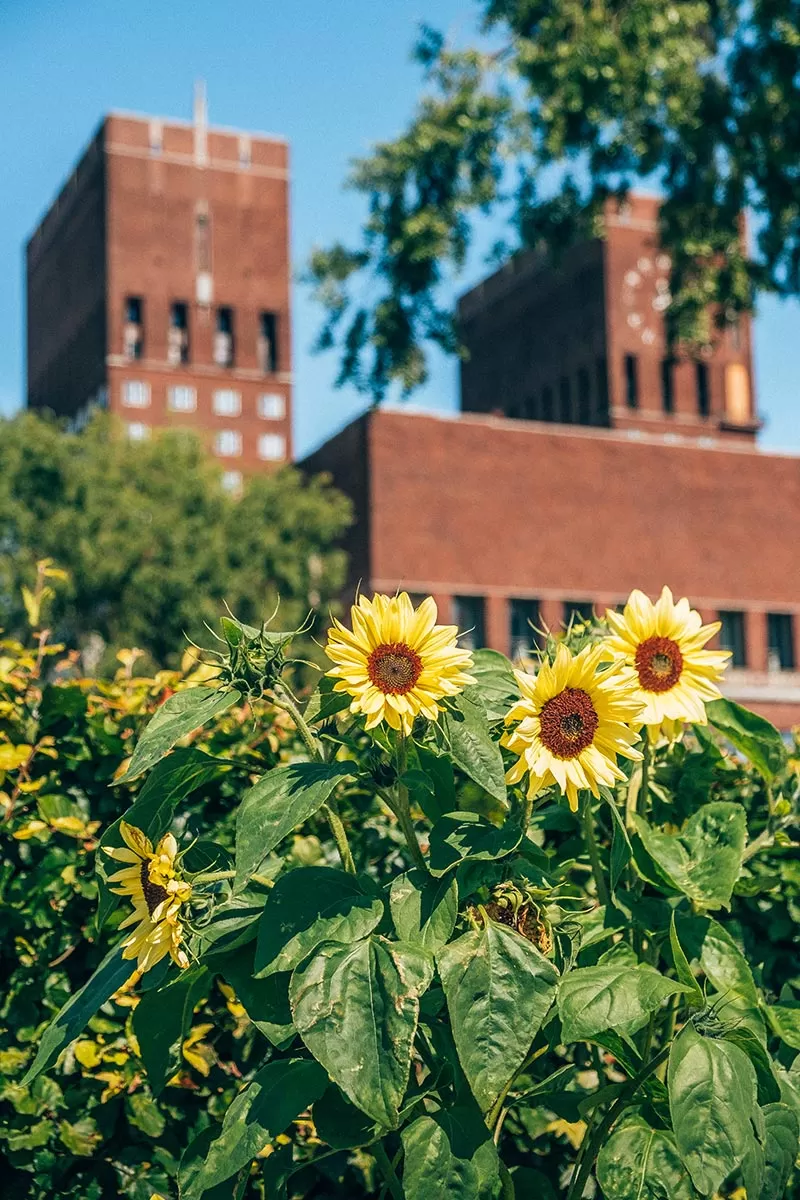
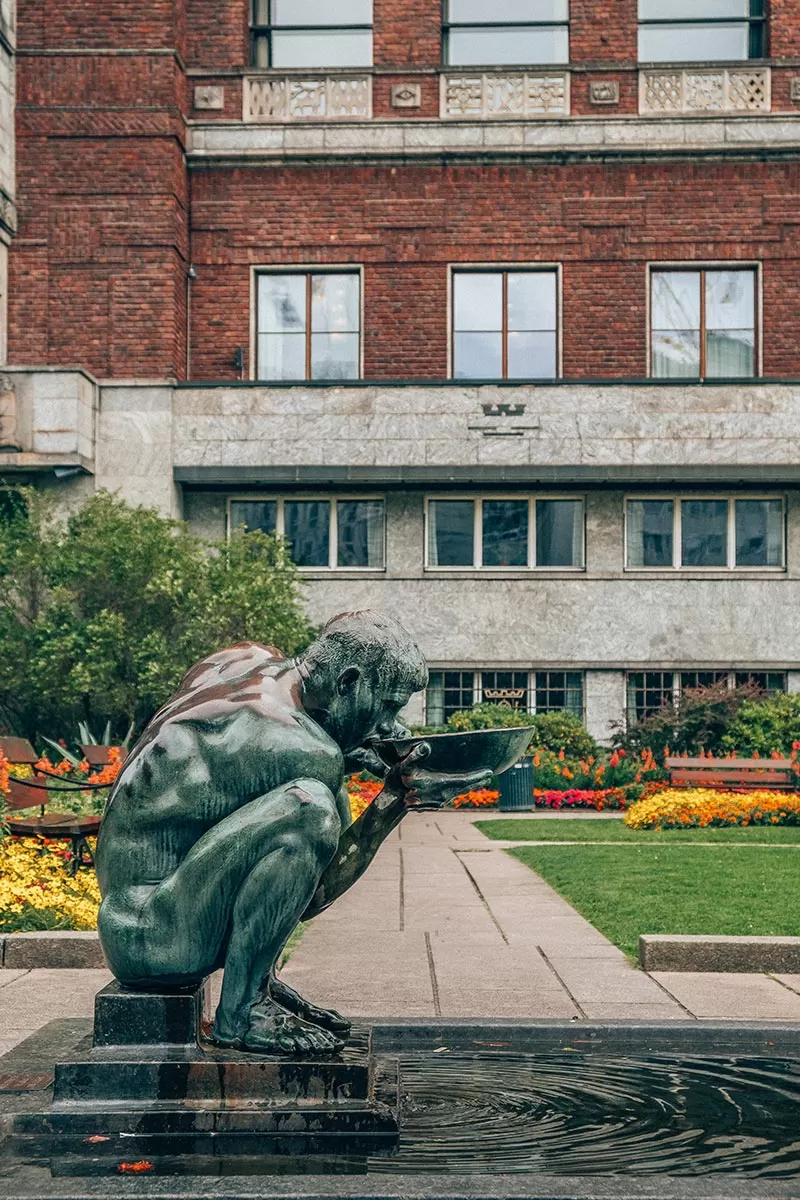
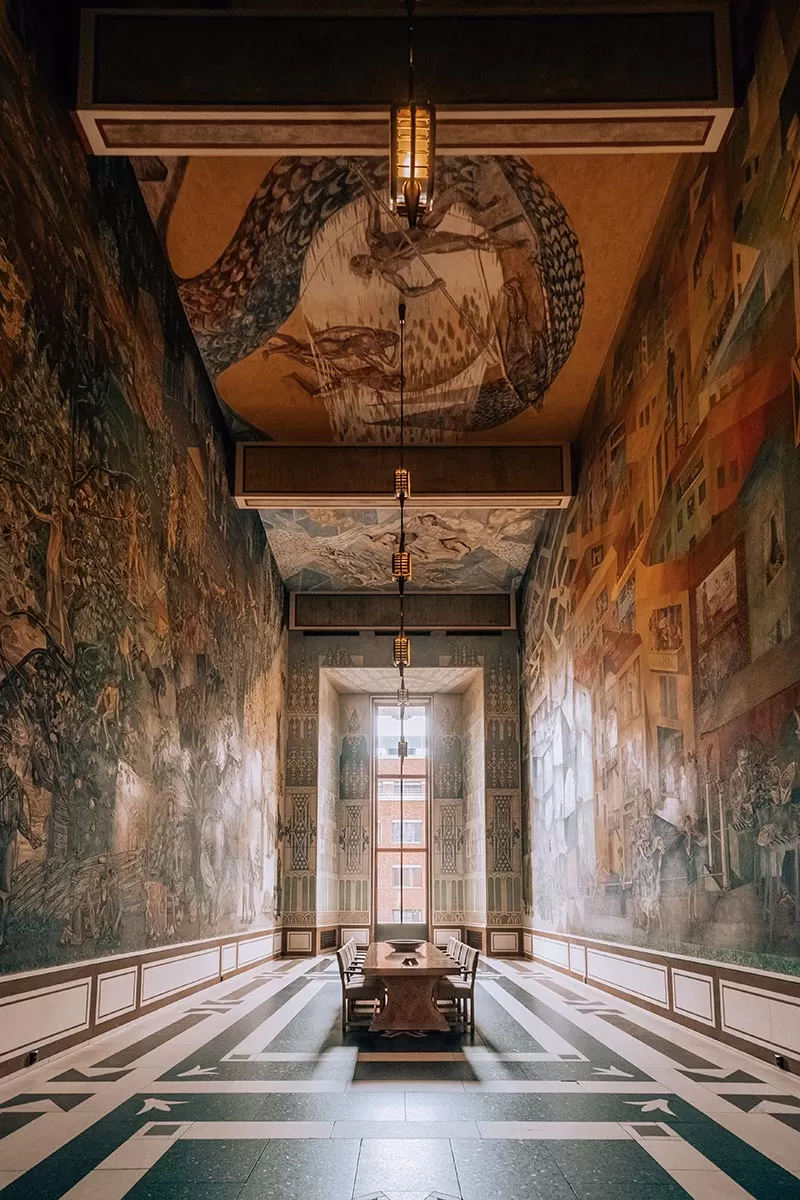
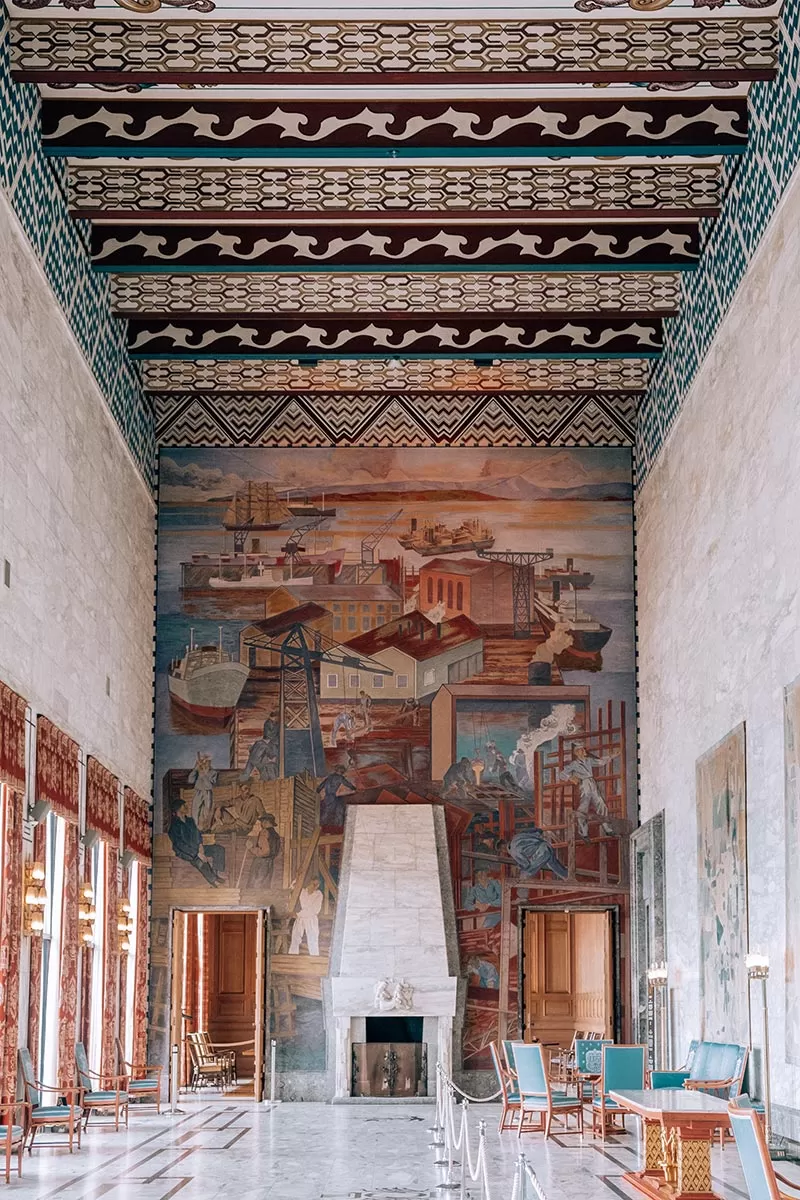
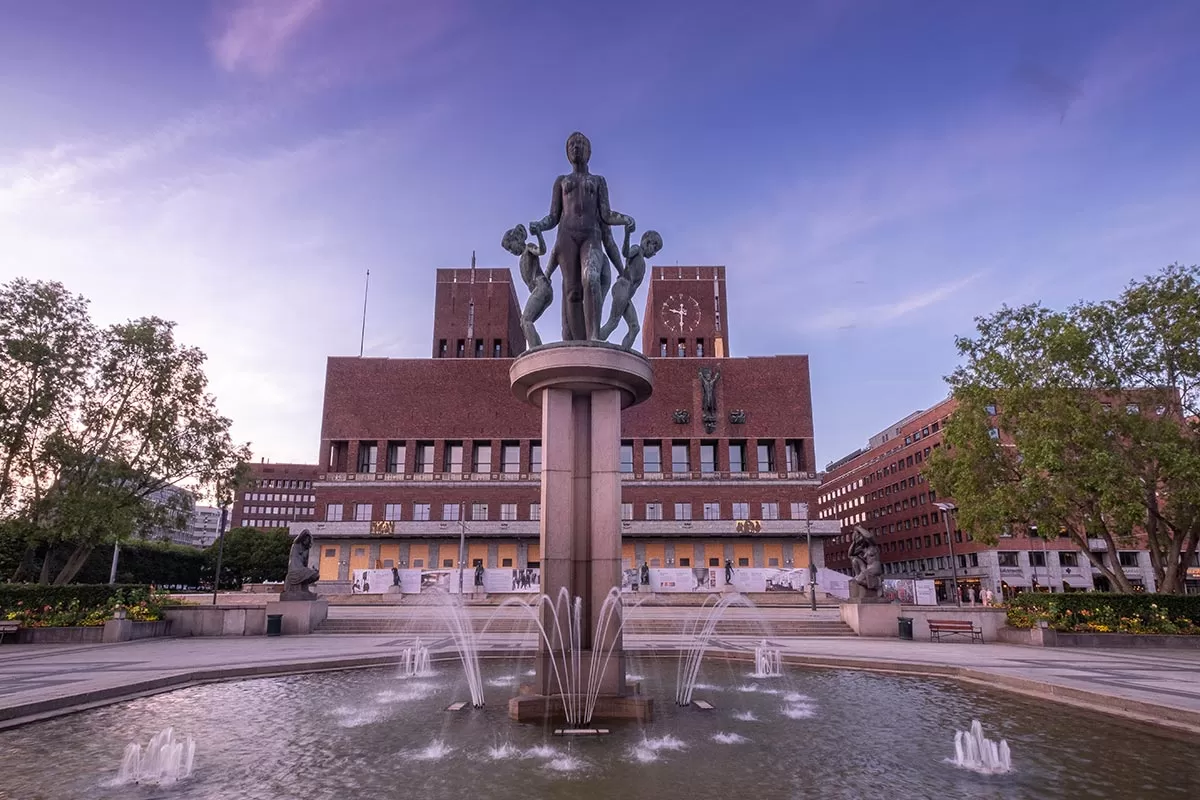
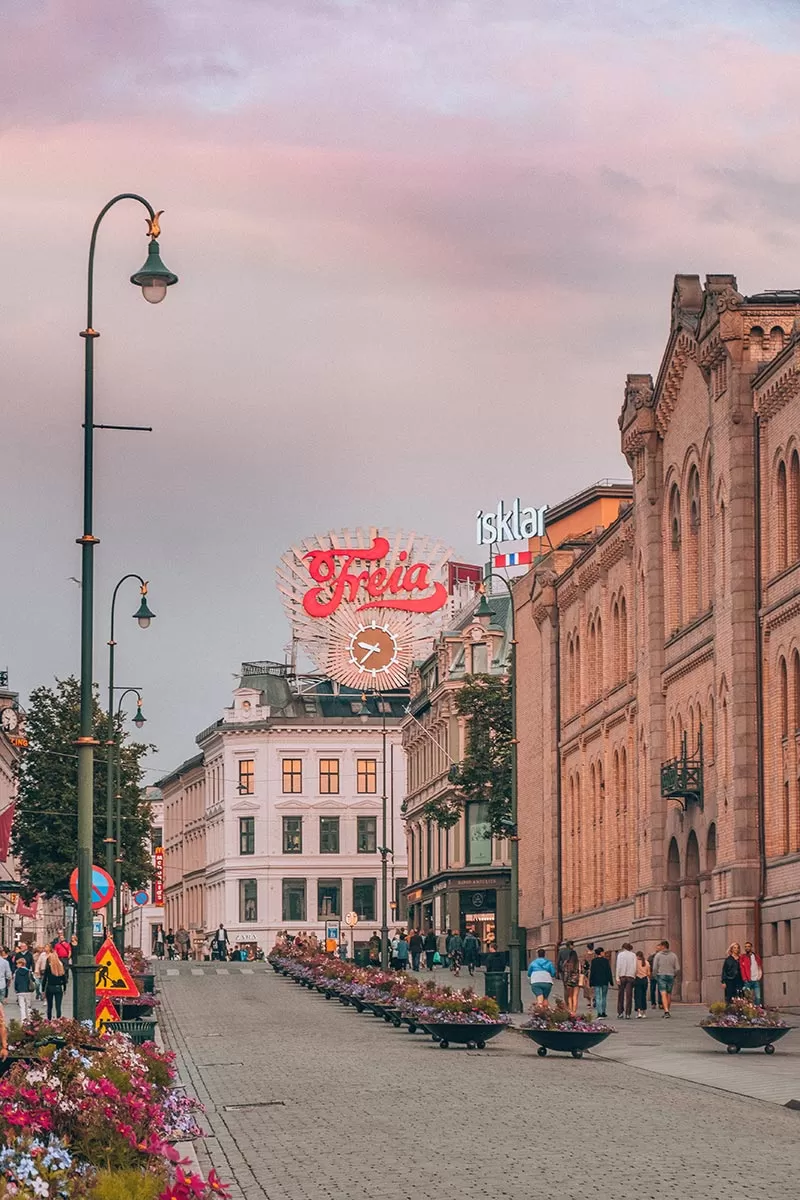
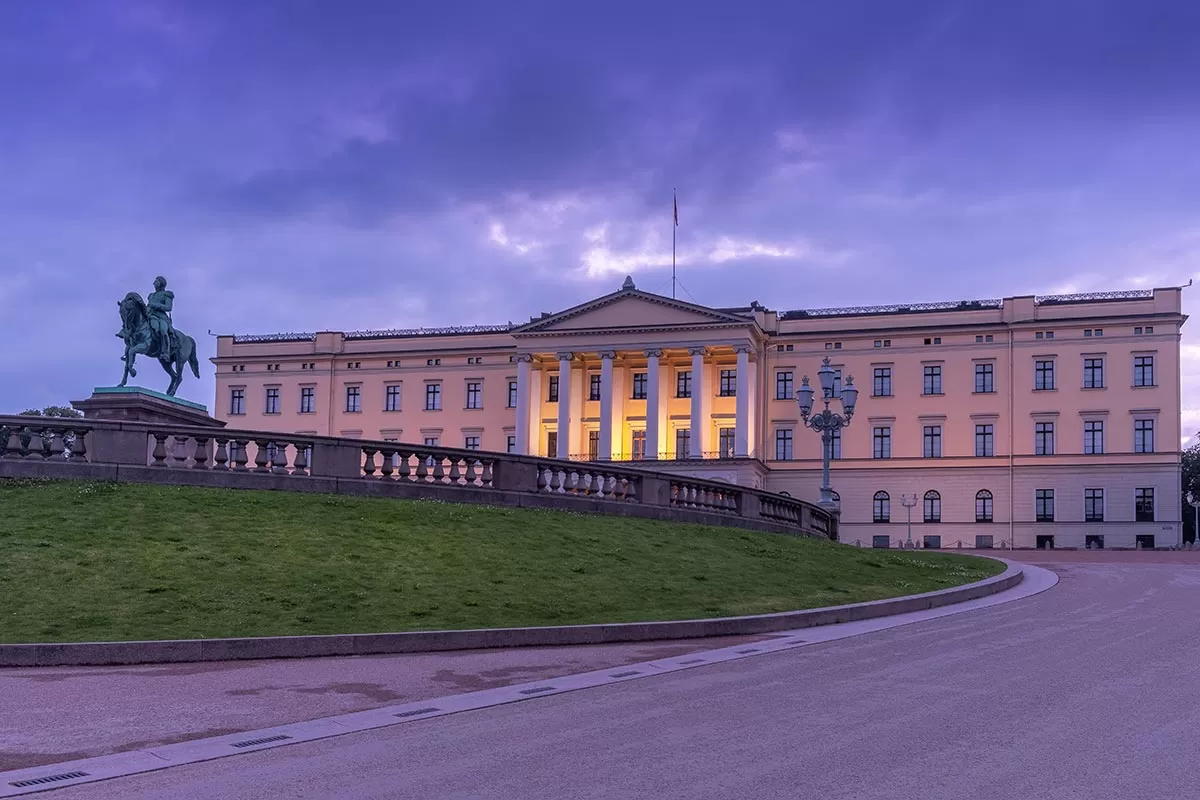
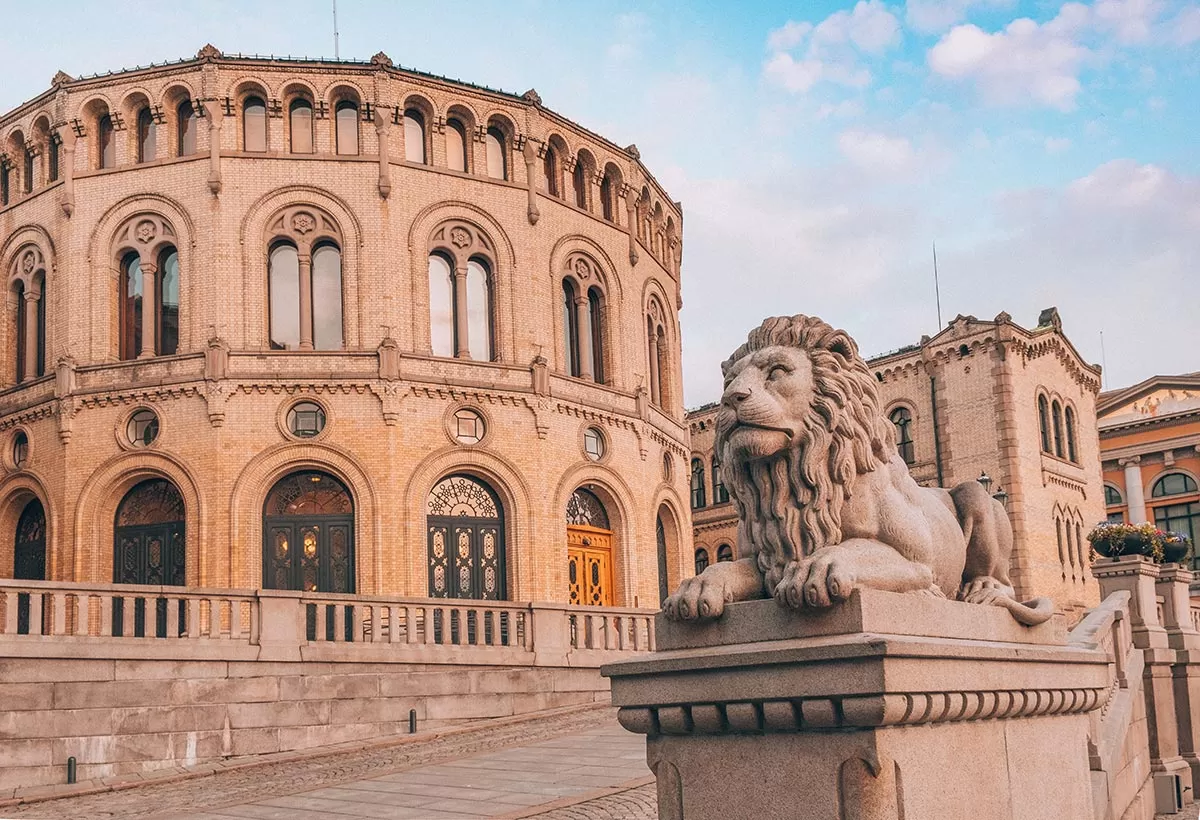
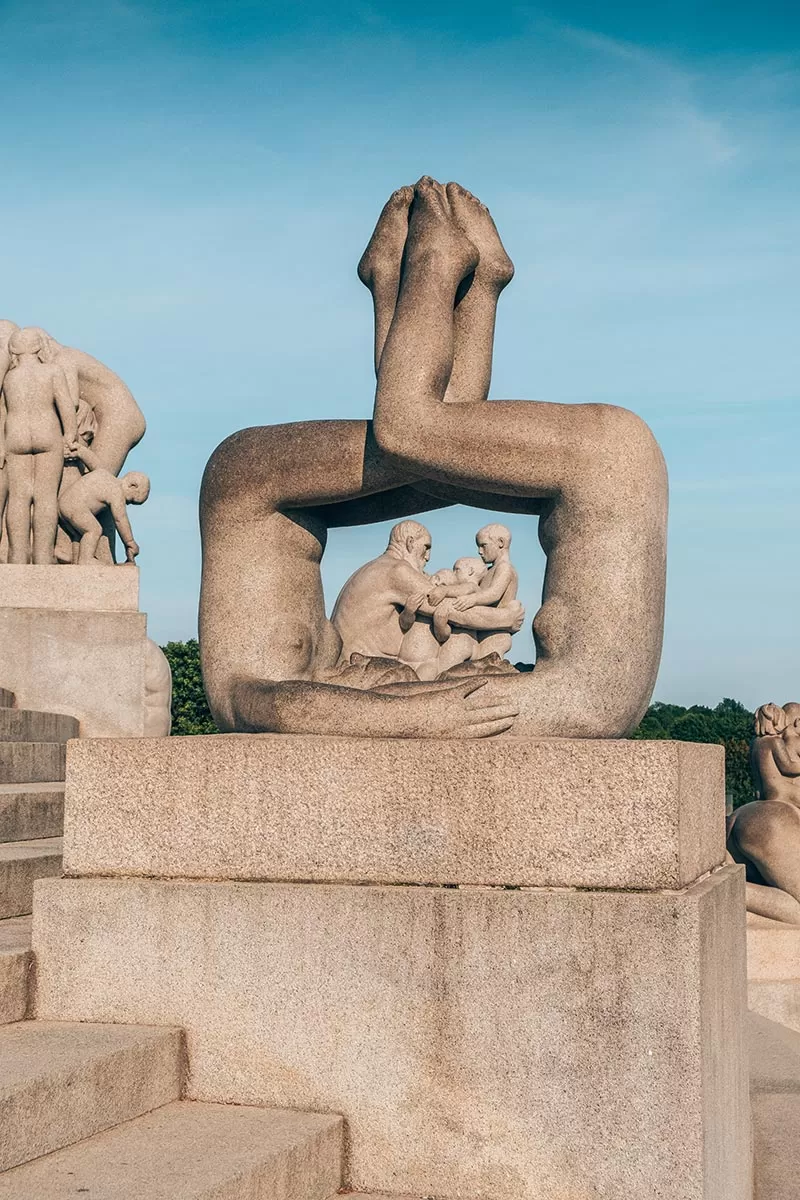
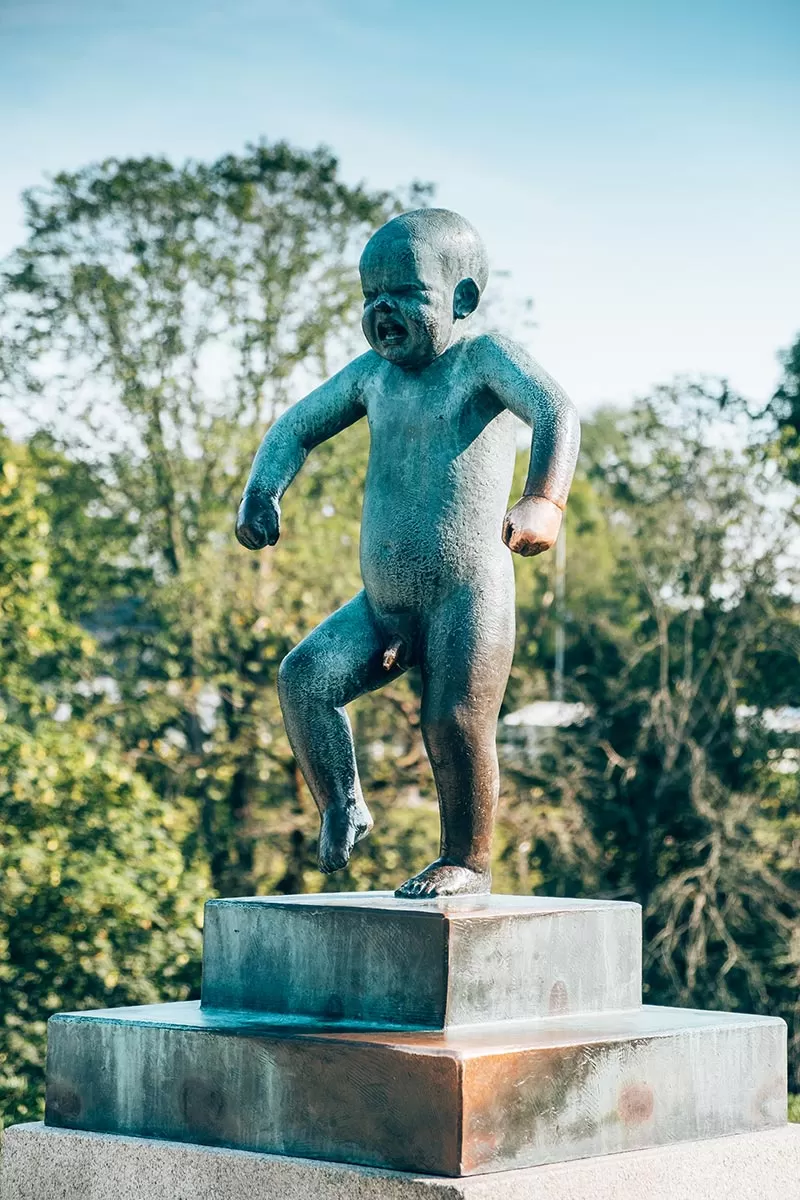
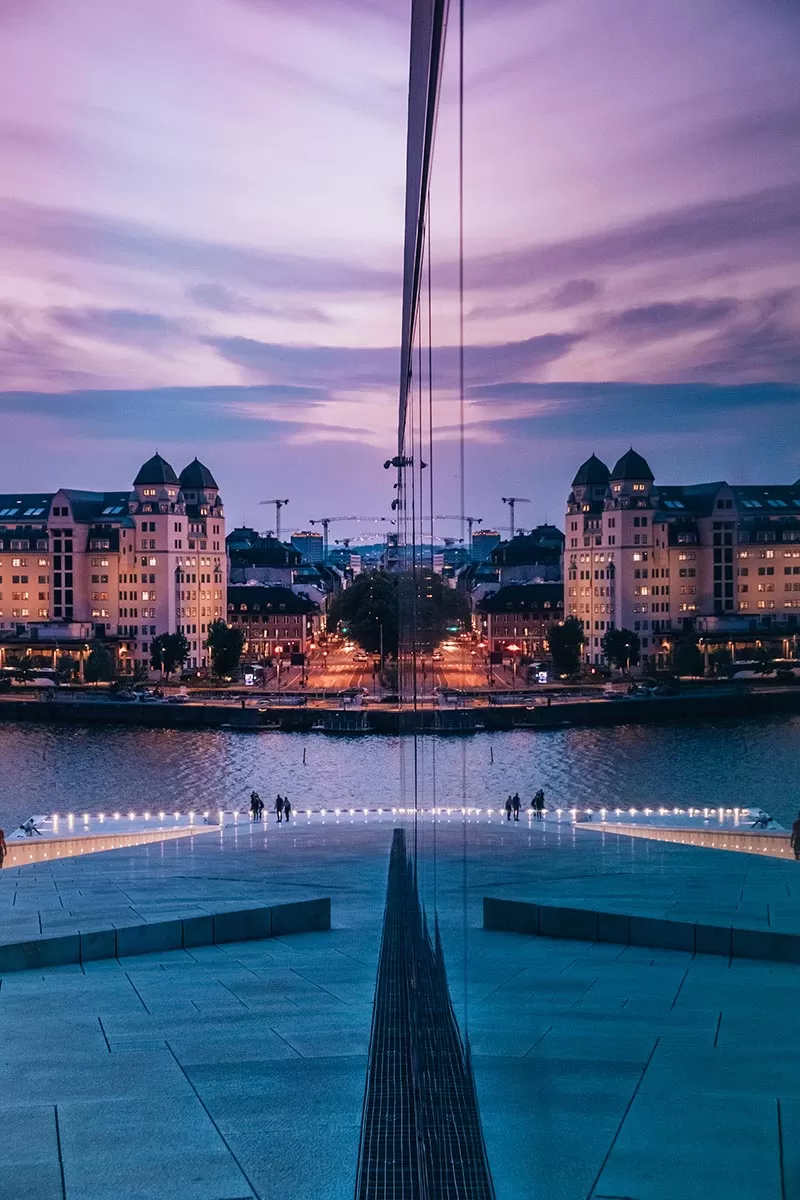
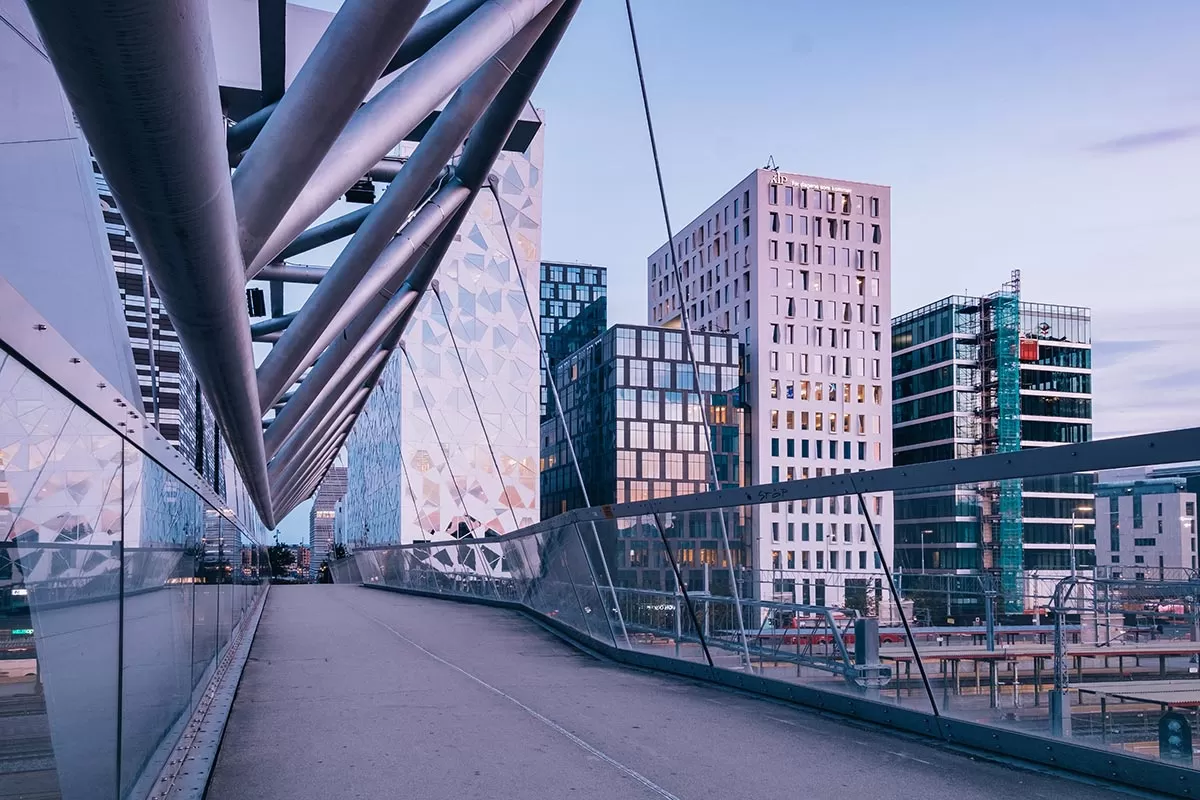
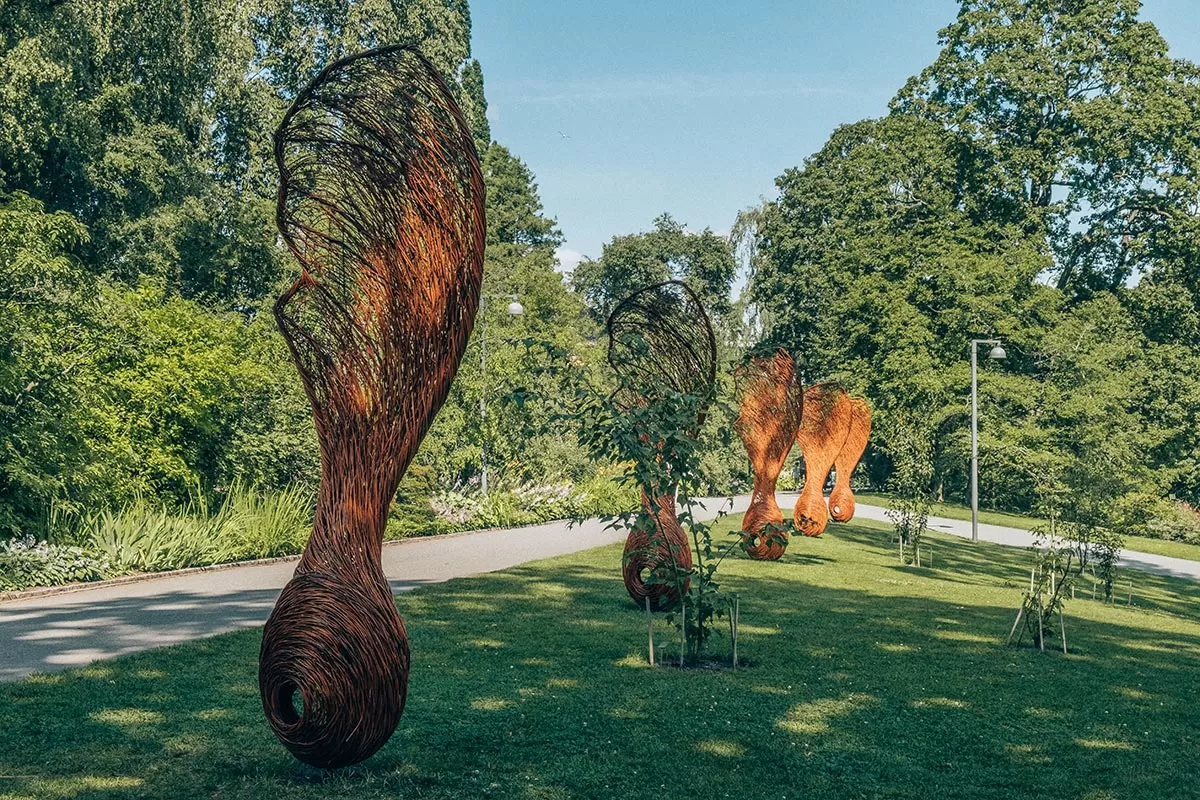
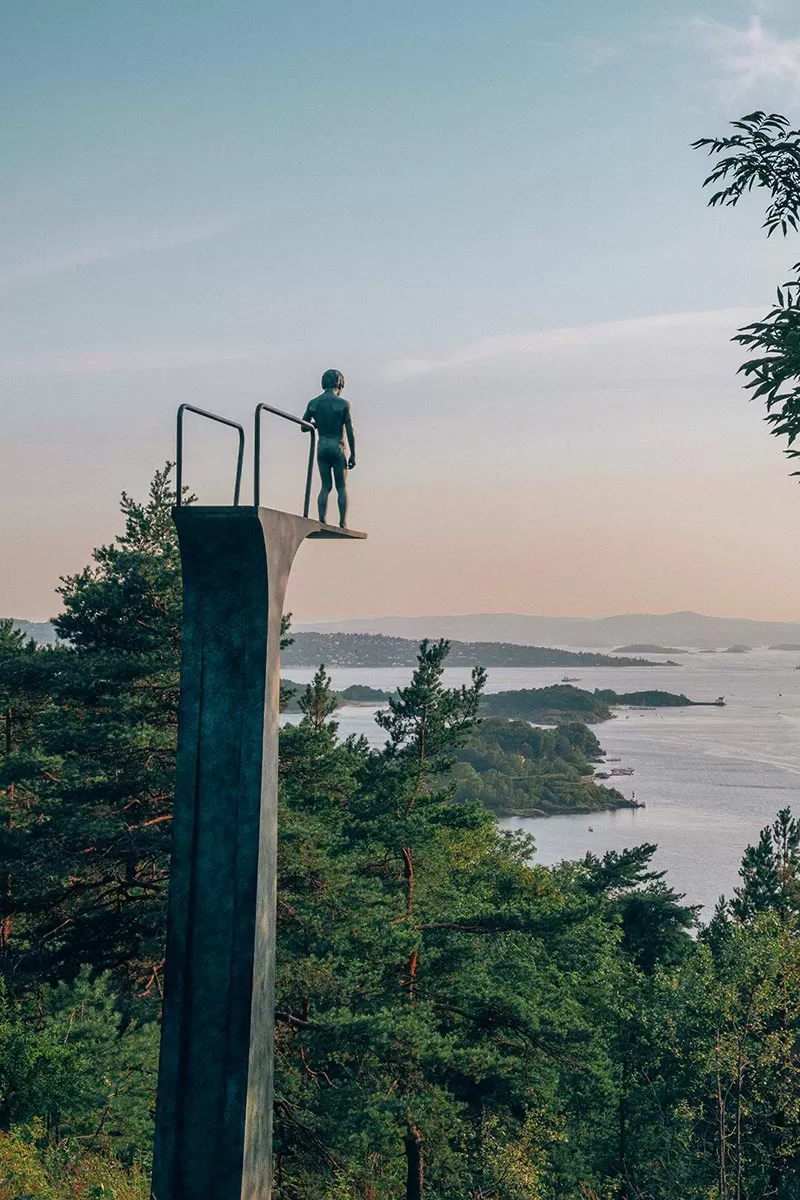
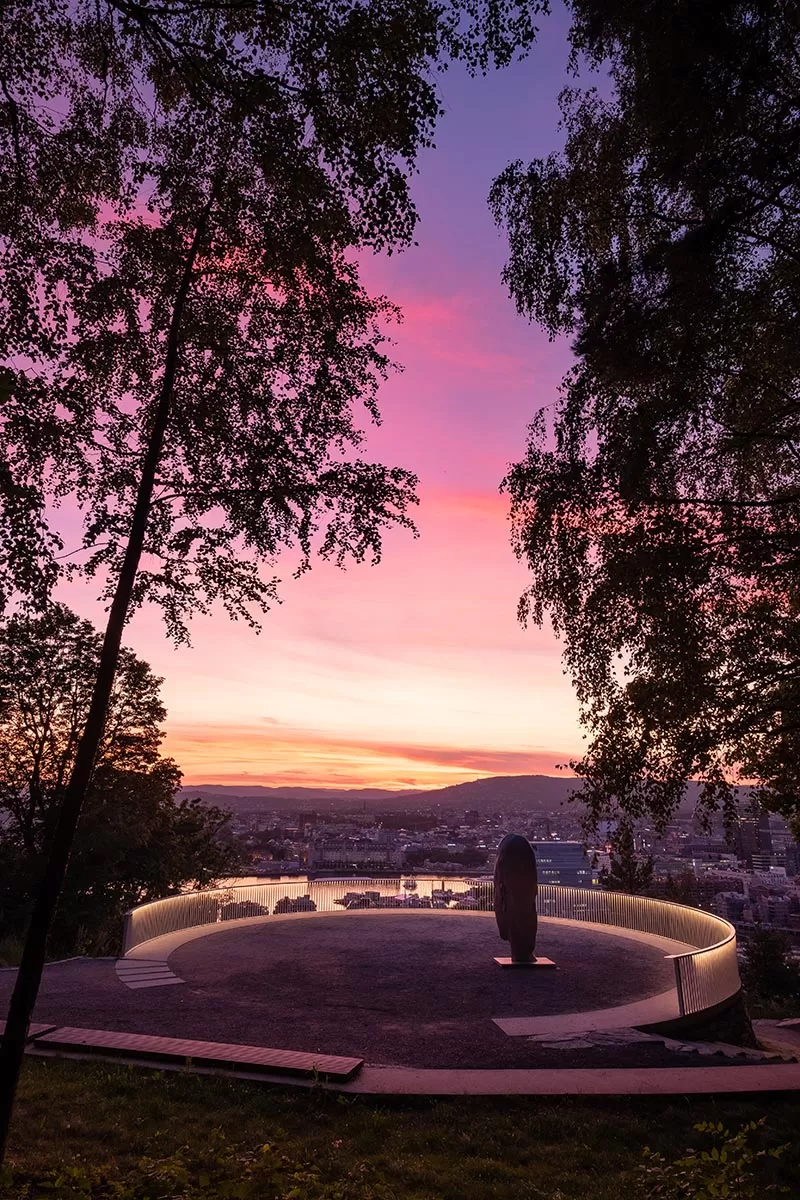
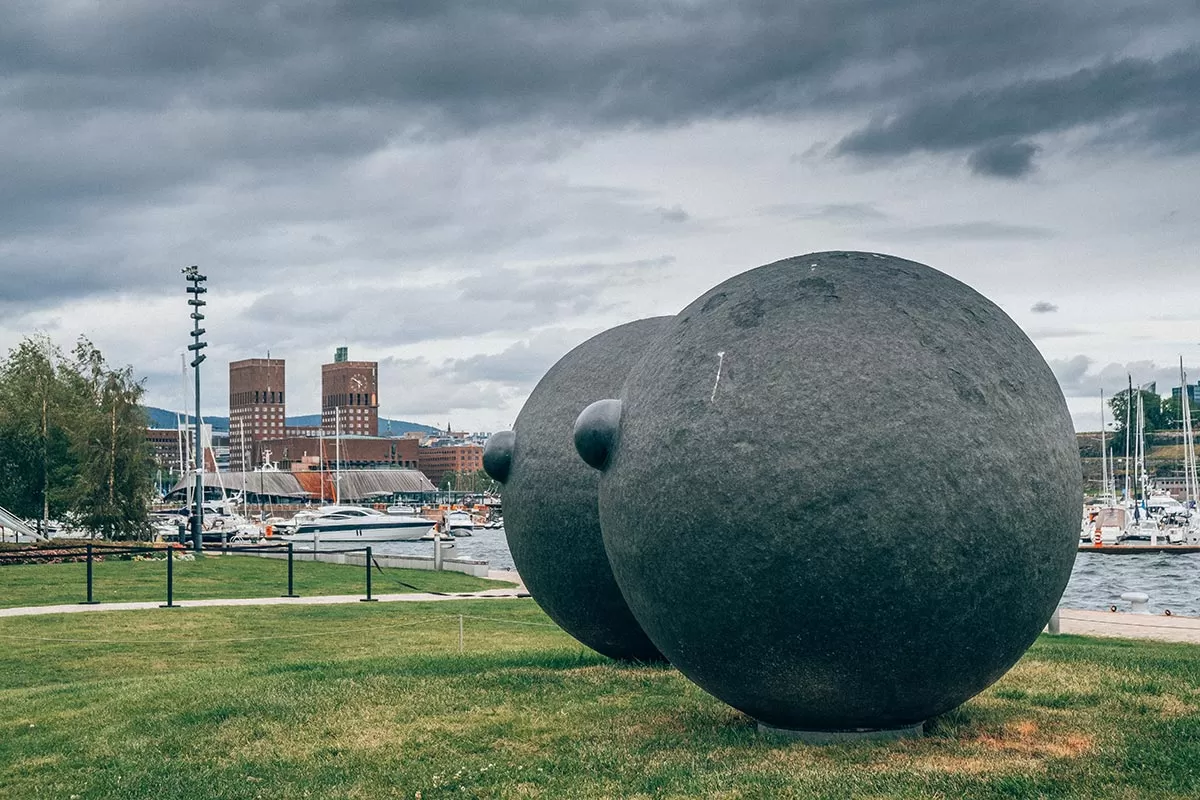
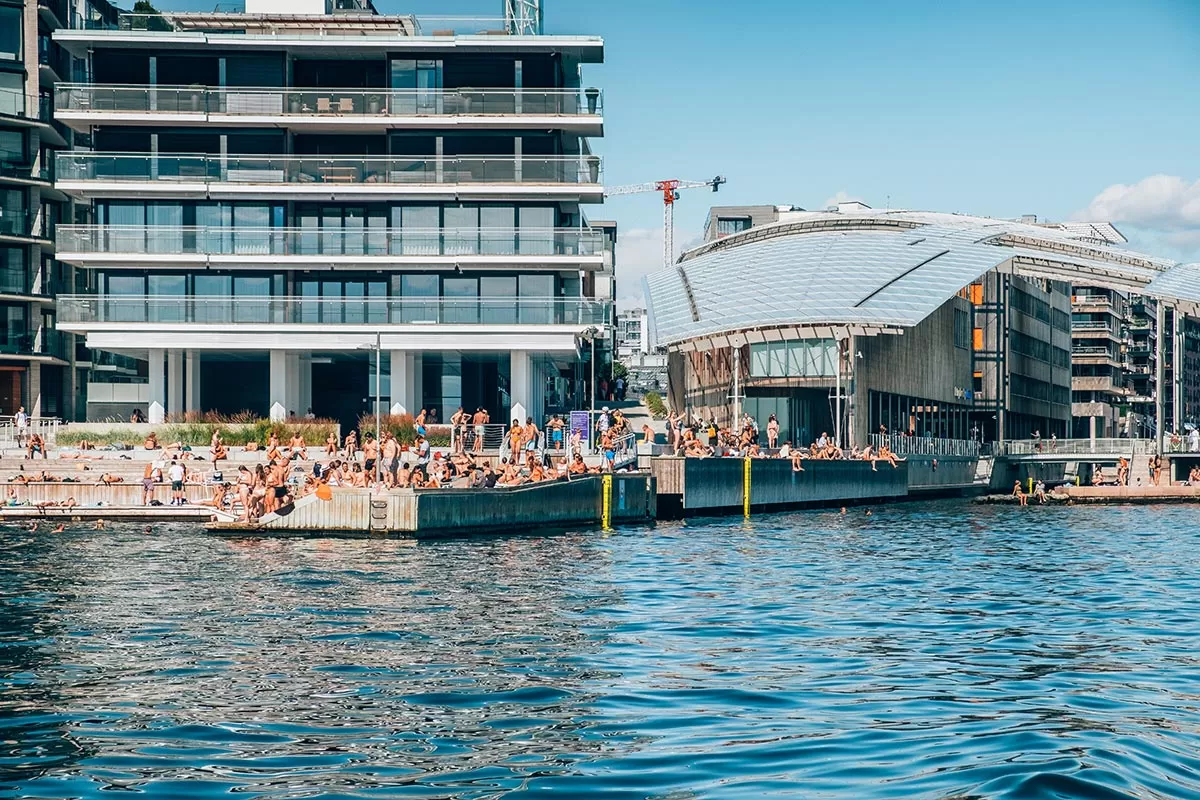
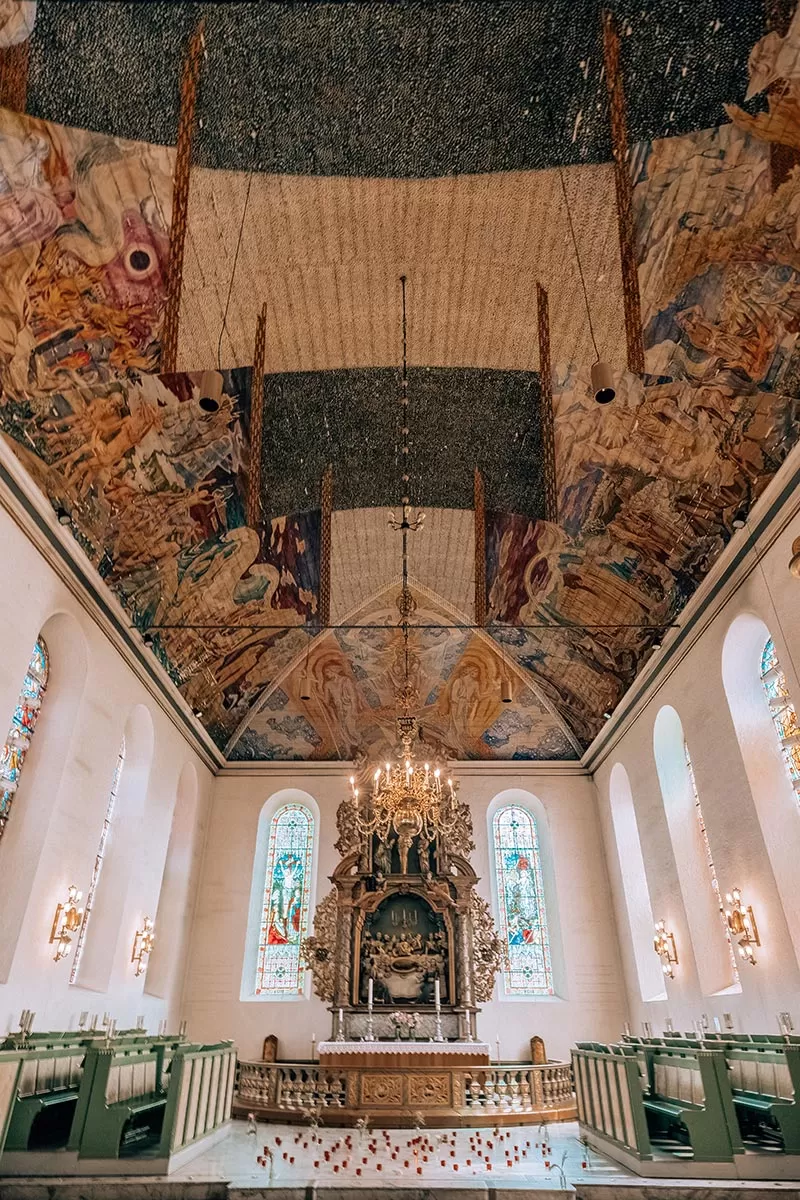
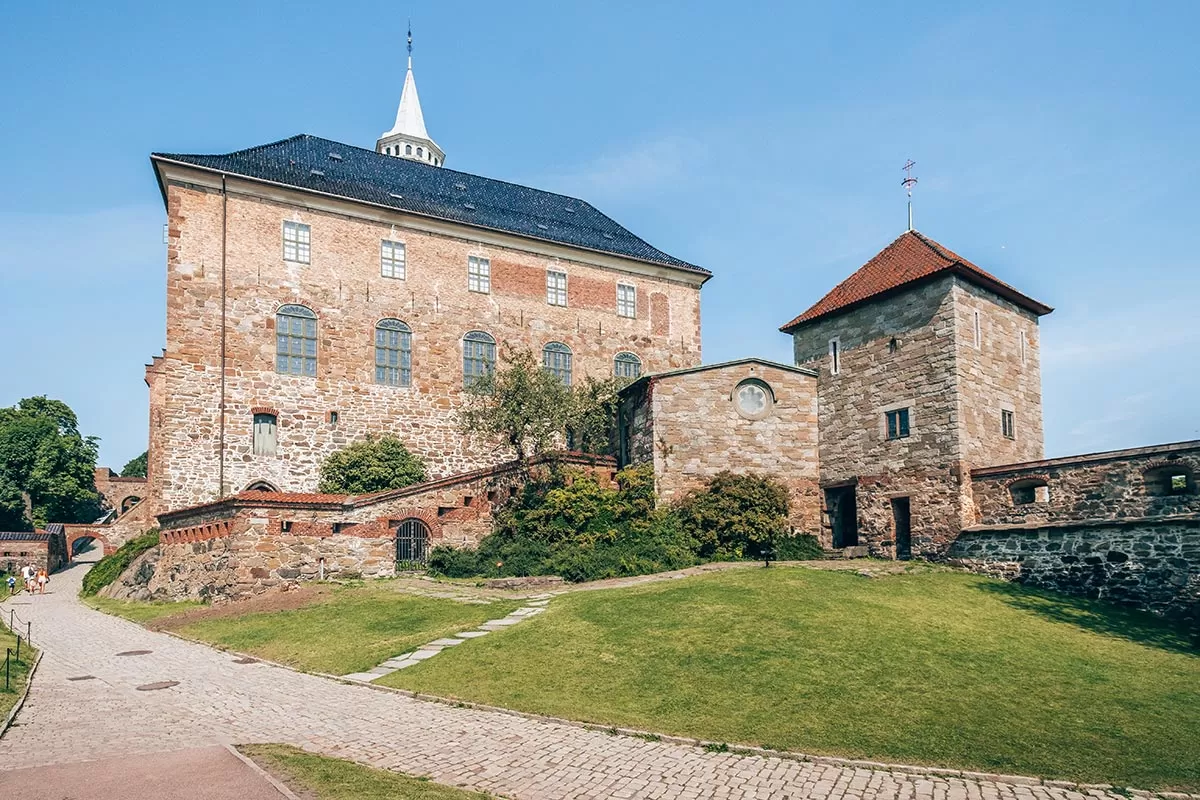
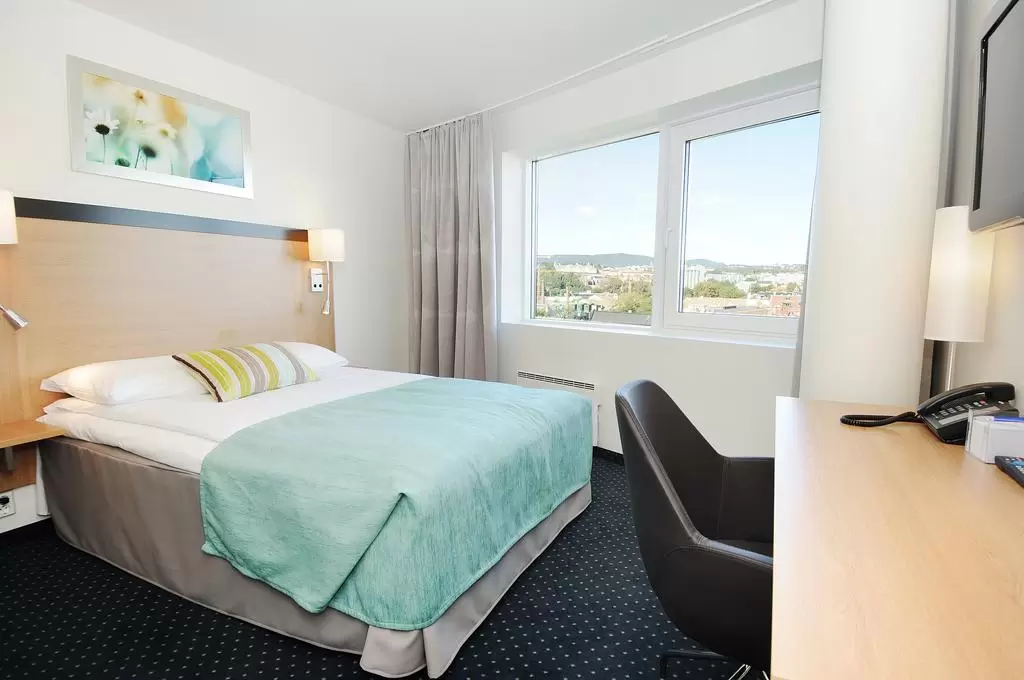
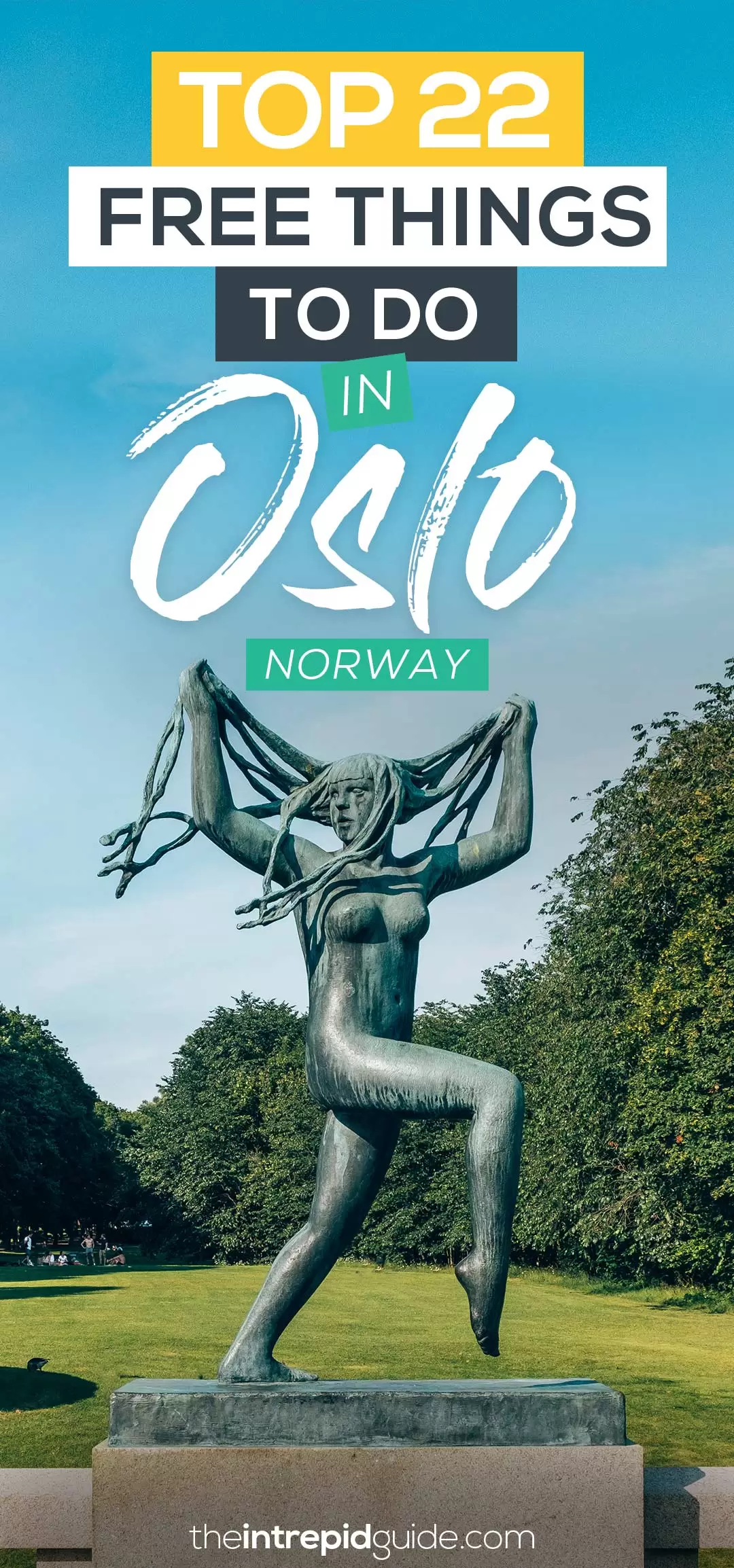
15 comments
One more place to go that is free. Ekebergparken! I love going to that park. It is beautiful there with a nice view over Oslo and the Oslo fjord and a lot of sculptures placed all over the park. So you can hike around the park while you look for all the sculptures there. Be sure to get a map (40 NOK) so you know where to go to see all the sculptures. You will find them without the map but it is a lot easier with it. And the map has a little info about every sculpture.
Thanks for the great tips Irene 🙂
Don’t forget the Emanuel Vigeland Mausoleum for an unforgettable and creepy experience. Only open on Sundays and a short tram ride to Svemdal, but so worth making time for. http://www.emanuelvigeland.museum.no/museum.htm
You’re absolutely right! I even dedicated a whole post on it 🙂 https://www.theintrepidguide.com/2016/01/03/oslos-best-kept-secret-emanuel-vigeland-museum/
I enjoyed Oslo so very much this past December. Very charming city. Loved the water front. We bought a two day pass at the train station tourist office. The pass granted us free tram, bus, and subway transportation. Also, we were given free admission into the museums we visited.
Thanks Diane 🙂 The Oslo pass is definitely worth getting. I did the same thing in Bruges and will continue to lookout for city passes. Glad you had a lovely time.
Yes, I’ve been to Oslo and have worked with Norwegians for almost 12 years…. wonderful country and wonderful people….. I spent 6 weeks and got to experience Oslo, Bergen and Natadal….I have been to all 10 places you have mentioned, but I could not do the tour inside the palace nor inside Stortinget there was not enough time…..and I am longing to go over again…. when I have the cash which I am saving for……I felt like home in Norway…. never felt like that in any other country….thanks very much for sharing…. mange tusen takk!
I totally agree with you Sandra. It truly is a wonderful place and everyone was so friendly and available to help. A lovely lady even went out of her way to come with me on the tram to Vigeland sculpture park when the the other services weren’t running. After this trip I immediately booked a trip to go back in the summer. I can’t wait to see all the amazing fjords near Bergen and Stavanger 🙂
Thanks for this really nice post! I’m planning a trip to Oslo in exactly one month, so this is just a perfect teaser 😉
Thank you for your lovely feedback, Julie. I’m so happy this was useful to you. Let me know how your trip goes 🙂
Thank you for this post! My husband and I are visiting Oslo in June, this helps a lot!
You’re very welcome, Janice. Thank you for your kind words. You’ll have a great time in Oslo. Please let me know how your trip goes. Until then, safe travels 🙂
Thank you so much 🙂 Oslo really is such a great place. If you ever find yourself there make sure you get the Oslo City Pass. It includes entry to all the wonderful museums and galleries.
hi michele, for three days visit is it worth it to buy the oslo pass? thank you 🙂
Hi Natalie, if you love your museums and plan on seeing a few then the Oslo pass is a great investment. If you’re unsure you can always double check the prices and compare it against the total price of the pass. Have a look at the Visit Oslo website for individual prices 🙂 http://www.visitoslo.com/en/activities-and-attractions/attractions/ Hope this helps